Stay in the Loop
Subscribe for exclusive content, giveaways, new products and more!

- Backpacking
- Backcountry Cooking
- Wilderness Medicine
- Destinations
- TRIP REPORTS

A Guide to Choosing Canoe Barrels & Accessories
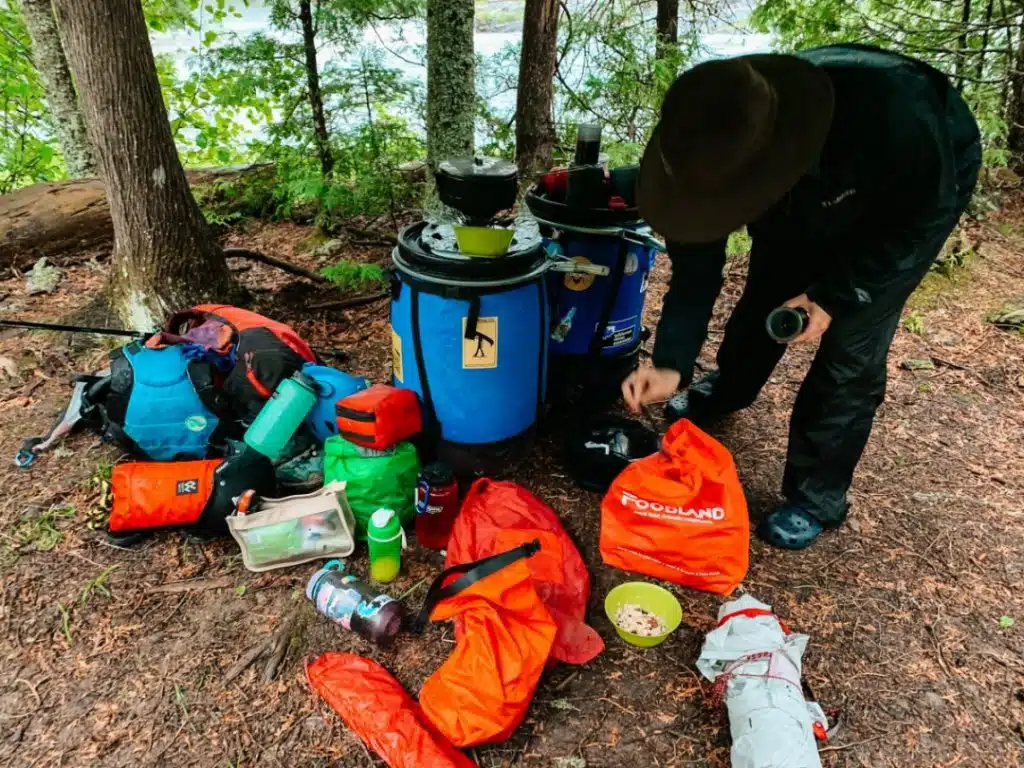
Canoe barrels are an incredibly helpful piece of gear that all canoeists (and aspiring canoeists) can benefit from. If you’re unfamiliar, these are waterproof barrels for canoeing that protect your food and gear from rain, submersion in water and woodland critters.
In this post, I’ll go over some helpful background on what canoe barrels are and how they work . I’ll go over canoe barrel harnesses and tools to help keep your barrel organized . Plus, I’ll provide some tips for making portaging with barrels more comfortable .
Finally, I’ll answer some common FAQs about canoe barrels (are they really waterproof, are they bear-proof, when to use them, how to make them more comfortable and more).
What is a canoe barrel?
A canoe barrel is a waterproof, plastic barrel that is taken on canoe trips to keep food, gear and personal items dry. The barrel will keep water out of your stuff when it’s raining or if the barrel is submerged in water (if you were to flip your canoe).
Although there is a wide variety of general outdoor barrels, dry barrels for canoeing specifically come in three sizes: 20 L, 30 L and 60 L . The 60 L is the most popular size, however there are some good uses for the 30 L (like carrying food on a short trip or carrying a first aid kit on a really long trip). I’ve never seen someone using a 20 L barrel.
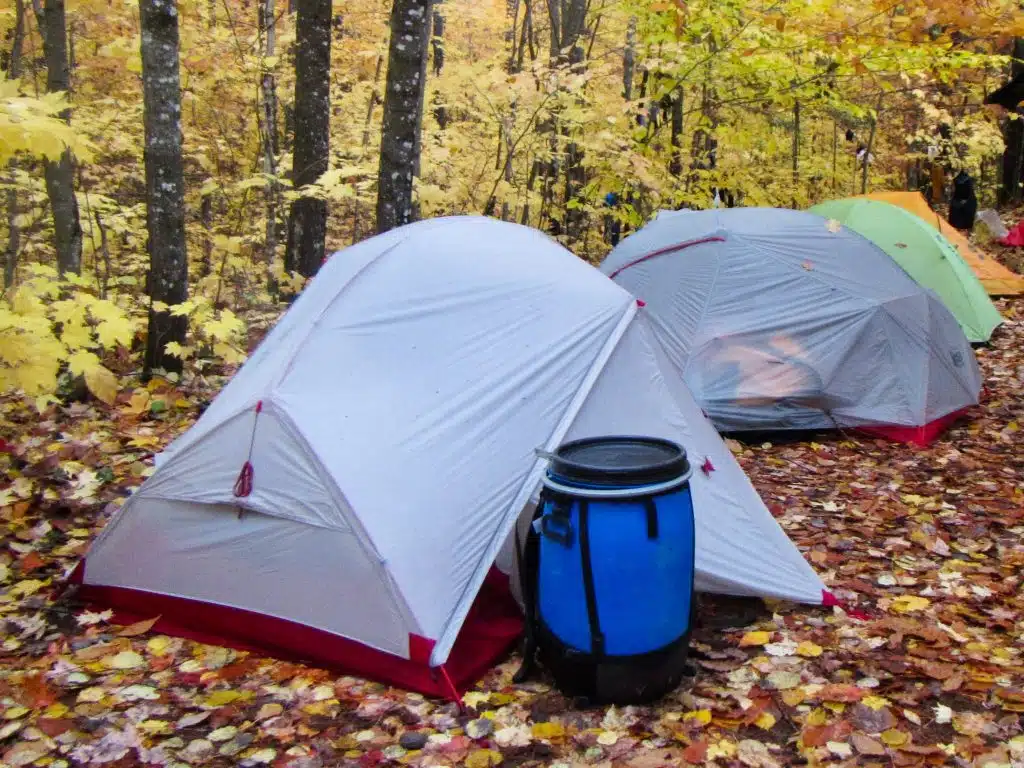
This post may contain affiliate links. If you make a purchase through one of these links, I may receive a small commission at no extra cost to you. Your support is much appreciated! You can learn more by reading my full disclosure .
How does a canoe barrel work?
There are three parts to a canoe barrel . First, there is the large (usually) blue plastic barrel. This is a single piece of plastic that is very durable. Next, there is a black lid that fits snuggly on the blue barrel. Where the black lid fits onto the blue barrel, there is a white O-ring (which is part of the lid). This creates a waterproof seal.
Although the lid is tight-fitting on the barrel, it isn’t yet secure. The third part is a metal ring that secures the lid to the barrel.
The top of the barrel and the bottom of the lid both have a lip that sticks out, and the metal ring fits around them. When tightened and secured, the metal ring keeps the barrel and lid together. creates a waterproof seal between the barrel and the lid.
Most barrels will also have plastic handles on the side, which makes it easier to move the barrel. (Despite the handles, heavy barrels are still awkward to move.)
You can also get a little metal fastener to lock the metal ring when it’s closed. This prevents the metal ring from accidentally opening.
Finally, you can also get a barrel harness for your barrel which helps for carrying it on portages.

Canoe barrels are often used for storing food on canoe trips. If you’re interested in learning more about backcountry cooking, I encourage you to check out The Voyageur’s Backcountry Cookbook , my guide to all things cooking on canoe trips!
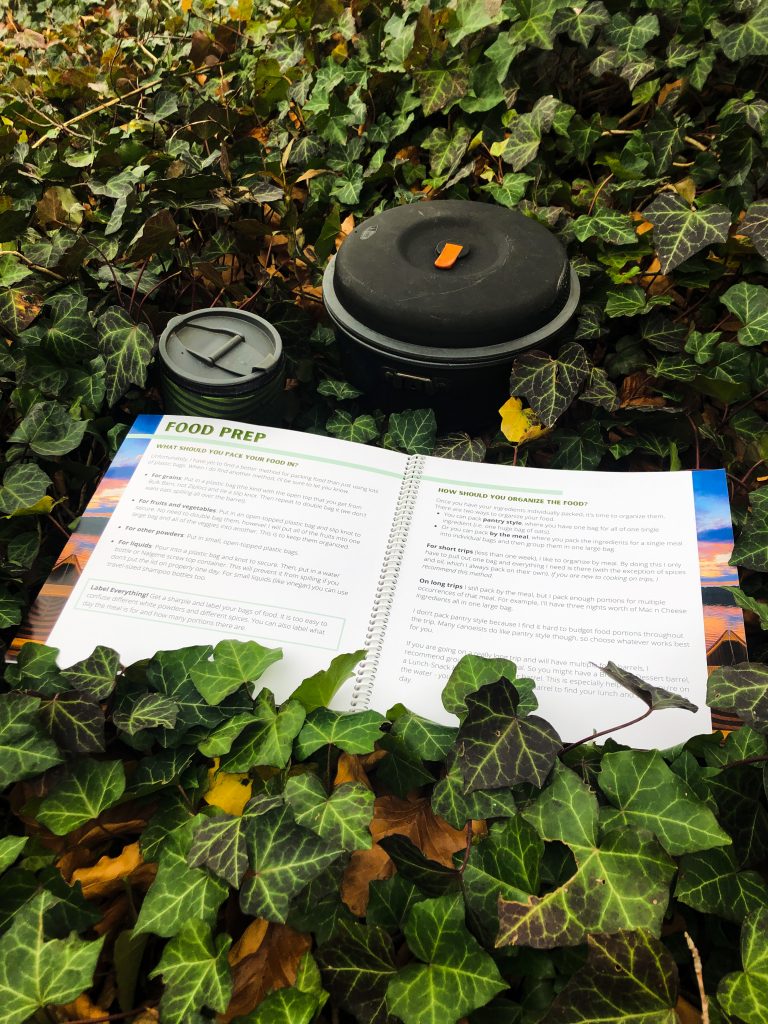
Buying a Canoe Barrel
If you are going to buy a canoe barrel, 100% buy this one . I’d estimate that 2/3 of all the barrels I’ve ever used have been by them, and all my canoeing peers use this brand. They are excellent, high-quality barrels that last a long time.
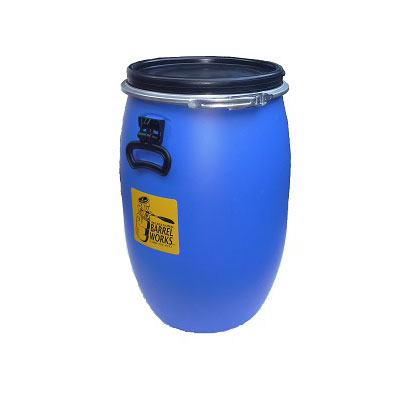
Canoe Barrel Harnesses
A barrel is a pretty awkward and inconvenient thing if it doesn’t have a harness. And the harness will likely cost the same (or more) than the barrel itself. The barrel has two handles on it, but it would be super annoying to carry it over a portage like that.
The barrel fits inside a harness, turning it into a backpack. Then you can portage it just the way you would portage any other pack.
I’ve seen and used a lot of terrible canoe barrel harnesses over the years before finding one that was comfortable. I’ve been using this one for 4 years now and it is by far the best one I have ever used.
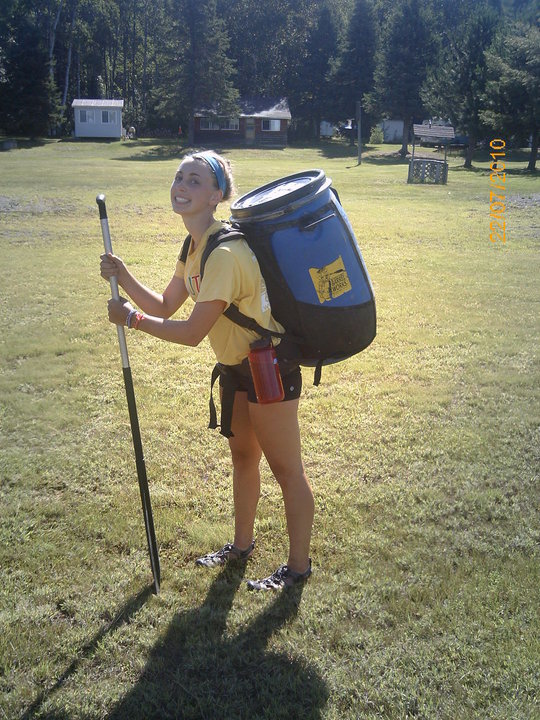
What to look for in a barrel harness
In my mind, there are two things that distinguish a good barrel harness from a bag one. One is how comfortable and supportive it is. You want one that has good back and shoulder padding and a decent hip belt.
The second is how to barrel is supported inside the harness. You can see in the picture below that this harness supports the entire barrel base. This means the barrel won’t shift around inside the harness.
There are other (worse) barrel harnesses that don’t do this, and instead have a single strap under the base of the barrel, and four narrow straps along the sides. With these harnesses, the barrel can slide around more, making it awkward to carry.
You can stop your barrel harness research right now. Just buy this one from Level Six . It may be the highest-rated piece of gear I have ever purchased. I’ve been using mine since 2017 (I think that must be almost 200 nights of canoe trips at this point) and it is still in fantastic shape.
I cannot recommend this barrel harness (the one pictured below) enough. (Mine is the older version, which is black and purple, pictured in the second photo.)
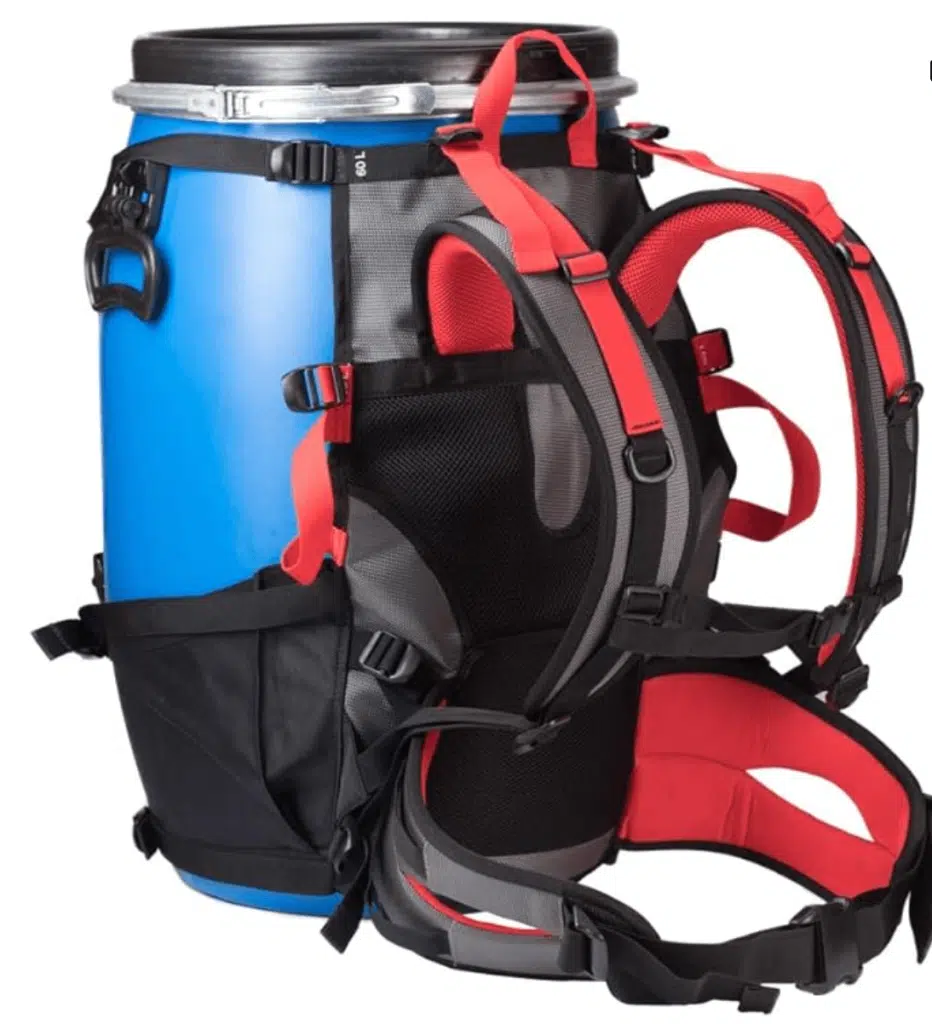
Organizing your Canoe Barrel
I love to keep my barrel super organized. I mainly achieve this with various stuff sacks, but there are also a ton of accessories designed specifically for organizing your canoe barrel.
Compression Sacks / Stuff Sacks
I use these small bags to organize my clothing and compress any gear that is compressible. My sleeping bag goes into a compression sack, which saves a lot of space in the barrel. I keep all my socks / underwear and sleep clothing in one stuff sack. Then I’ll have another stuff sack for the rest of my clothing.
Barrel Buckets
A barrel bucket is a fabric bucket that is the same area as the inside of a canoe. You can put things inside the bucket, and then put them in the barrel, knowing they won’t fall down to the bottom. There are different sizes for barrel buckets depending on what you’re using it for. Check prices here .
Barrel Coolers
Barrel Coolers are similar to Barrel Buckets, except that they are insulated and closed with a zipper. They are super helpful for keeping fresh food and meat cool. On shorter trips, you can make perishable items last longer by putting an instant cold pack inside each day. I don’t do this personally, because it takes up more space and adds weight, but other people really like it. Check prices for barrel coolers here .

Barrel Pocket Organizers
Finally, barrel pocket organizers are helpful for keeping track of small items, like bottles of vinegar, spices or small utensils. When you’re cooking, you can take the pocket organizer and hang it from the outside of the barrel. This makes it easily accessible while you’re cooking. Check prices here .

Canoe Barrels FAQ
Are canoe barrels waterproof.
Assuming you don’t have a defective or damaged one, canoe barrels are excellent waterproof barrels and ensure the food / gear inside stays dry. They are entirely waterproof.
The O-ring inside the lid is a gasket that keeps water out. So when the barrel lid is secure on the barrel (secured by the metal ring), the barrel is entirely waterproof.
The waterproofing of your barrel comes down to the metal ring and the O-ring. If the O-ring is damaged or deformed, it may not form a perfect seal and may let water in. Likewise, if your metal ring is broken and doesn’t secure the lid to the barrel properly, it won’t be waterproof.
It’s important to periodically test your barrel’s waterproofness and replace the O-ring / metal ring if necessary.

How to test if your canoe barrel is waterproof
You can test the barrel’s waterproofness by closing it and submerging it in water. Barrels, especially empty barrels, float so it can be difficult to get them totally underwater.
I’ll put a few pieces of paper inside the barrel then submerge it upside down in a pool or bathtub so that just the top of the barrel is underwater. If the papers come out wet, my barrel isn’t waterproof anymore.
Are canoe barrels bear-proof?
Canoeing barrels are often referred to as “bear barrels” because many believe barrels to be bear-proof. It’s true that it is harder to smell food in a barrel than in a backpack. It’s also true that it is harder for a bear to open a barrel than a backpack. However, canoe barrels are not entirely bear-proof.
Just this season my friend woke up to find his barrel being dragged away from a determined black bear. (He didn’t get the barrel back.) There are also images online of barrels broken apart by bears.
On canoe trips, you can leave all your food in your barrel. If you are in an area with a lot of bear activity (i.e. Algonquin Provincial Park), you can either do a bear hang or a canoe float. In areas with less bear activity, walk the barrel(s) at least 200 feet from your campsite and fire pit. I like to lean paddles against the barrel in the hope that the bear will not over the paddles and be startled away.
Read More : How to Bear-Proof Your Campsite and Protect Against Black Bears in Ontario
In addition to being better with bears, canoeing barrels are better with small critters too. Although unlikely, a determined racoon, squirrel or chipmunk could into a dry sack. But they are unable to get into barrels.

Credit for the photo above is Algonquin Outfitters .
When should I use a canoe barrel vs a dry sack?
Any food or gear that comes in contact with food should be kept in a barrel (which is also why they are often called “food barrels” or “canoe food barrels”). This is because, as mentioned above, a barrel is significantly better for keeping food safe from animals.
When it comes to other gear and personal belongings, this comes down to preference. Since 2014 I have always carried my own gear in a canoe barrel and will continue to do so.
Barrels are nice because it’s easy to open and close them, and it’s easy to find things inside of them. I do like that dry sacks come in such large sizes though. The biggest size for canoe barrels is 60 L, whereas you can get dry sacks that are 115 L. For my most recent autumn canoe trip, 60 L just wasn’t enough space for all my gear.
Some people don’t like using canoe barrels because they are uncomfortable to carry. However, if you get a decent harness for it, I find canoe barrels much more comfortable to carry than huge lop-sided dry sacks.
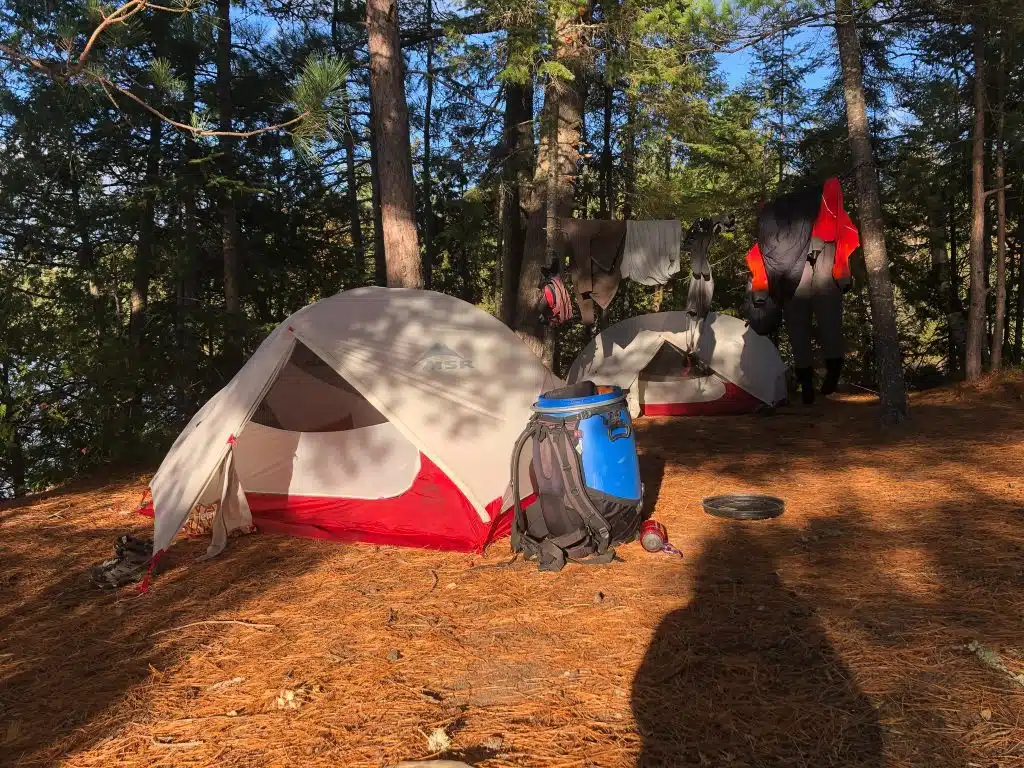
How to make portaging barrels more comfortable
A common critique of barrels is that they are uncomfortable to portage, and usually this comes down to one of two mistakes:
- Choosing a bad harness : As I mentioned above, there are good barrel harnesses and there are bad ones. Go for one with solid shoulder straps and a good hip belt, as this will redistribute the barrel’s weight to your hips. I recommend this harness .
- Wearing a life jacket while portaging : Harnesses are designed to be comfortable on your back, not on a bulky life jacket. It only takes a minute to take off your life jacket and clip it to the barrel and carry it with you. I promise this will make it WAY easier to carry.
Read Next: How to Portage a Canoe + 12 Expert Tips to Make It Easier
Canoe Barrels: Final Thoughts
If you do canoe tripping regularly, it is incredibly beneficial to have your own canoe barrel harness. I hope this post has been helpful in answering your questions about canoe barrels!
Mikaela | Voyageur Tripper
Mikaela has been canoeing, hiking and camping for over ten years. She previously worked as a canoeing guide in Canada, and spent a season guiding hiking and kayaking tours in the high Arctic. Mikaela is a Wilderness First Responder and Whitewater Rescue Technician.
MY FAVOURITE GEAR
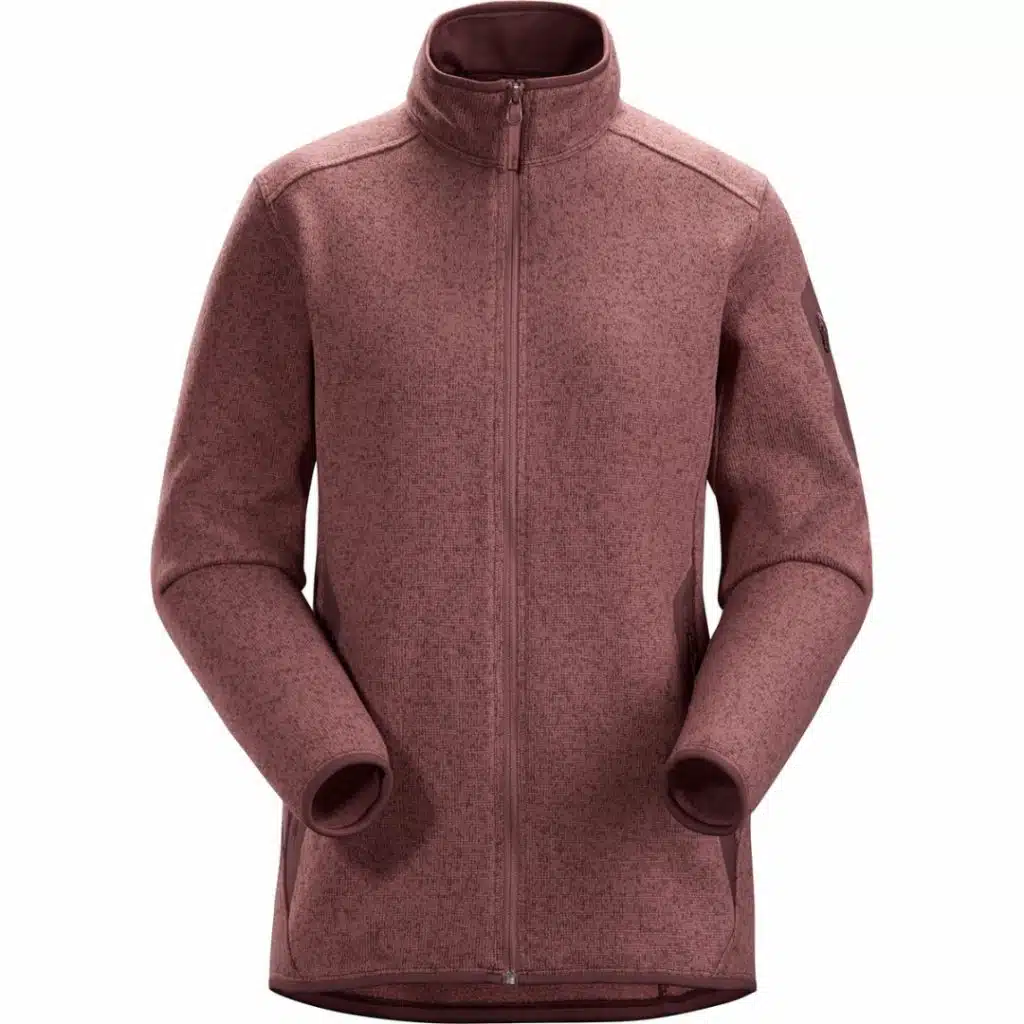
Fleece Sweater
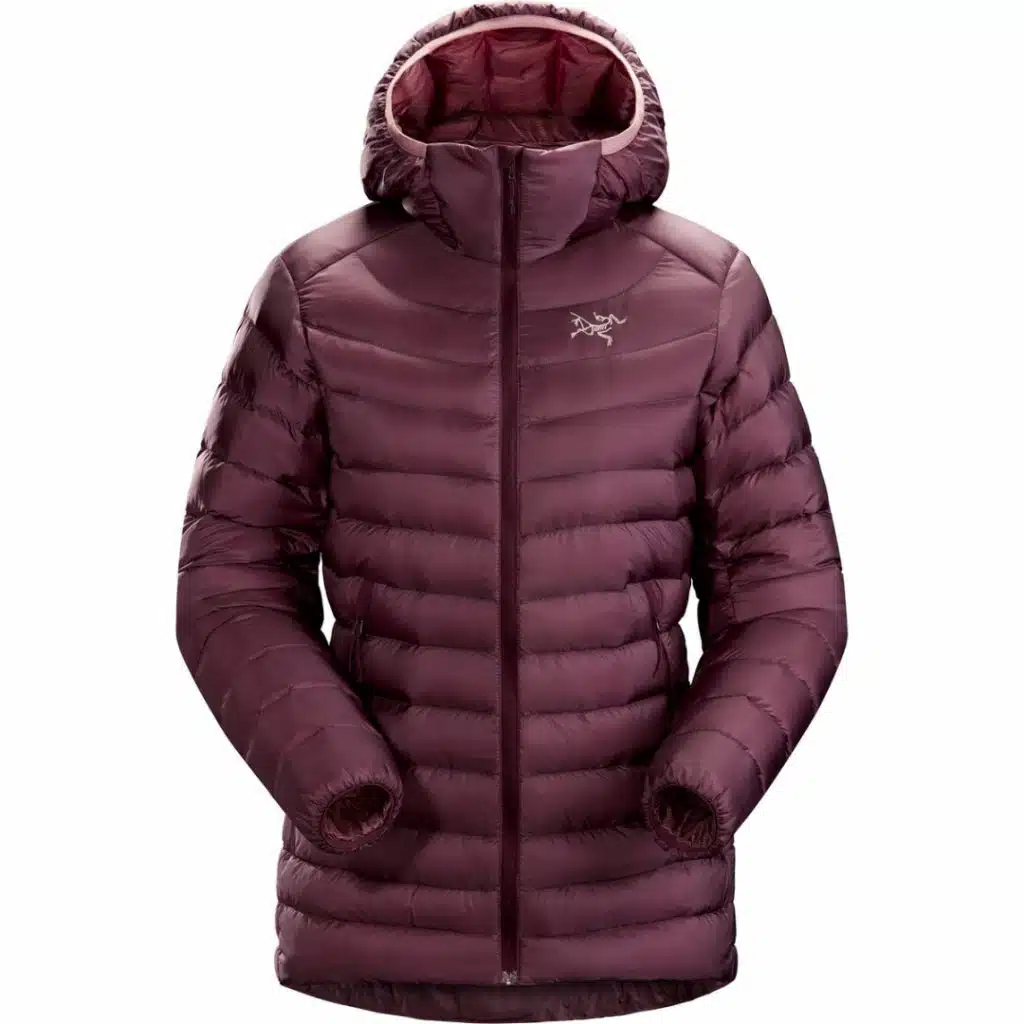
Down Jacket
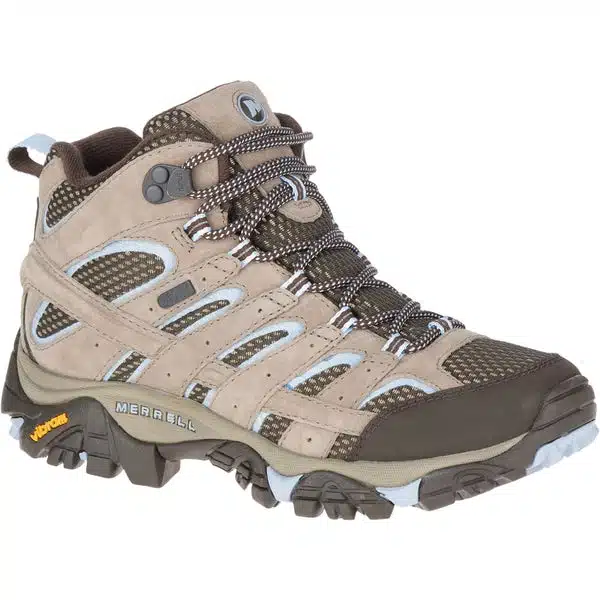
Hiking Boots
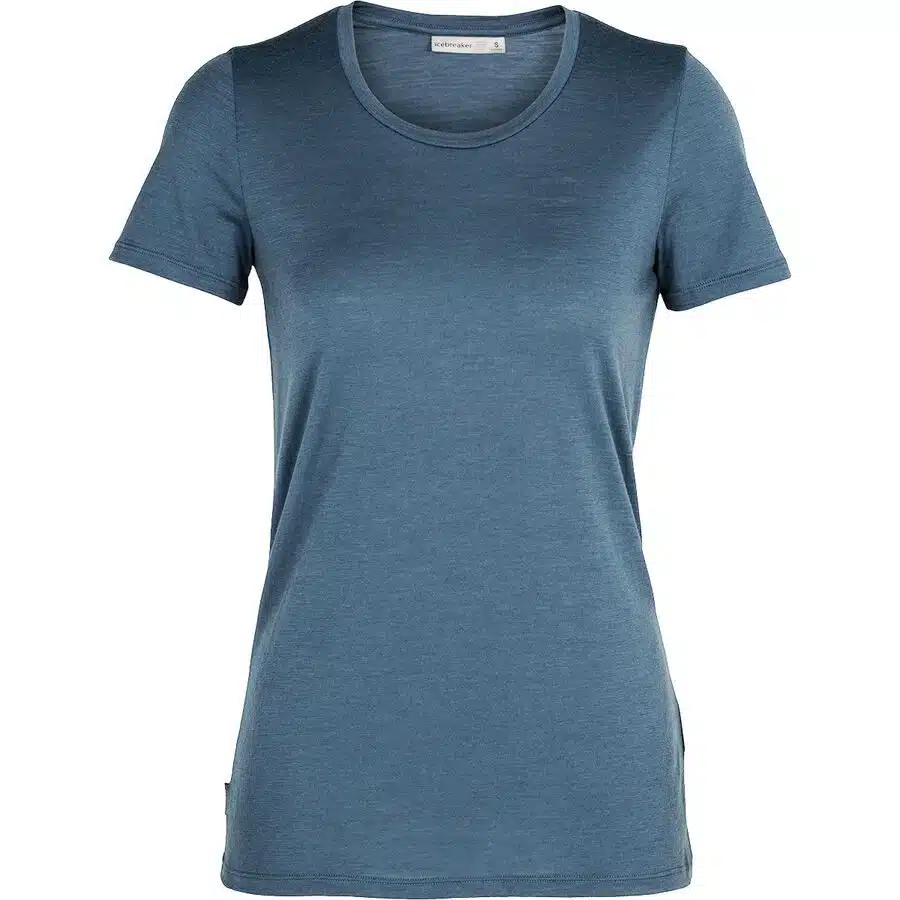
Hiking Shirt
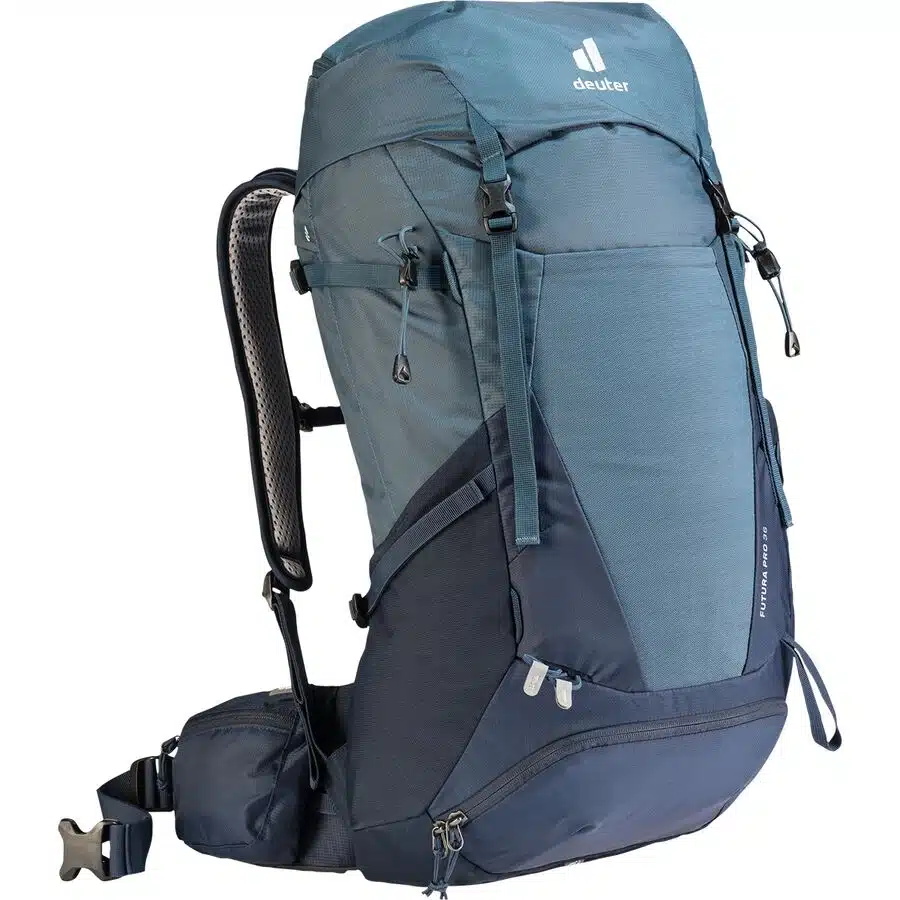
Hiking Pants
6 thoughts on “ A Guide to Choosing Canoe Barrels & Accessories ”
Stay in touch.
Join our community of outdoor adventurers - you'll find trip inspiration, gear discussions, route recommendations, new friends and more!
How many barrel do you have in your canoe and do you have just one harness for all barrels?
Each boat typically has one barrel in it, though the most I’ve fit in a 17 ft Prospector canoe is three barrels. Each barrel has its own harness 🙂
Hi Mikaela, It is interesting that you recommend this harness. I got it today and tried with an empty barrel and it was terrible. I find the edges of the shoulder strap too stiff and hard. They were cutting right into my breasts. It was quite painful. I hate to think how painful it would be if the barrel was heavy. My husband tried it and he was OK with it. In my opinion, it is designed for guys. Did you try the one from Eureka? I am looking forward to your response.
Hey Alina – That’s so interesting, I’ve never noticed that! (Though admittedly, I don’t have much of a chest to get in the way of the straps haha.) It would make sense though – most gear is designed for men :(.
I have tried the Eureka one. I don’t mind it for the 30L barrel, but I don’t like it for the 60L. I found the straps would loosen over the course of the trip, and when the barrel was really heavy I’d constantly be re-tightening them. I’ve heard others really like that harness though, so maybe the straps have gotten better since. I haven’t used the Eureka one since 2017 or so (back when I was guiding).
Hey there! Great article. No wonder it’s crushing SEO for “Canoe Barrel”!
One issue, none of your recommendations are in stock! Any thoughts on updating with products that are available. I’m on the hunt and would love some recs based on actual user reports.
Thanks Jonney
Hey Jonney!
Unfortunately by August there are usually limited quantities in the barrels I recommend. There’s also been issues around supply chains for many of the outfitters and retailers, so they’ve had less stock than usual. I haven’t updated the post with other products thus far because I’m the most familiar with the products I’ve included in this article and truly believe they are the best. I could make alternative recommendations for “if this isn’t in stock choose this one instead” but they wouldn’t be coming from personal experience (besides the products I included, I haven’t been satisfied with any other barrel or harness). If you’re looking for a canoe barrel or harness you’ll use for several years, I recommend putting in an order for one of these products early and getting them at the start of next season, and in the meantime, renting from an outfitter.
I’ll also do a little digging and ask my friends what alternative products they recommend.
Hope that helps!
Leave a Reply Cancel reply
Your email address will not be published. Required fields are marked *
Save my name, email, and website in this browser for the next time I comment.
- Facebook Group
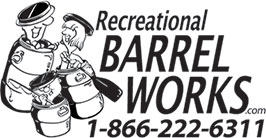
Recreational Barrel Works Inc.
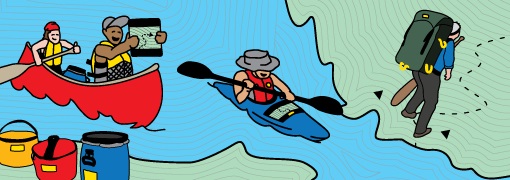
Recreational Barrel Works Inc. is the place for new waterproof and critter-proof canoe tripping barrels, barrel harnesses, canoe packs and accessories.
We supply barrels, harnesses, barrel parts – including lids, locking rings and handles – and canoe packs and barrel accessories/organizers to individuals, camps, schools, outfitters and retailers. Check our network of Vendors or order direct from our Products page.
You receive a 10% discount on ALL items in your cart if you order any Package Deal.
Please Note: LOCAL PICK UP on orders is from our Peterborough Ontario location.
Recreational Barrel Works Products
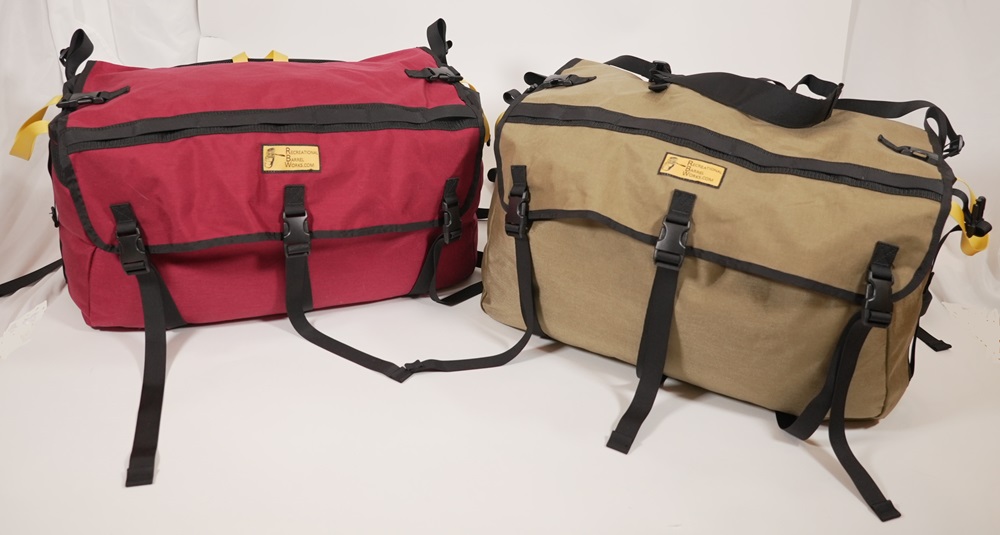

Canoe Packs, Barrels and Dry Sacks: A Guide to Packing Gear for Canoe Trips
- Published on November 18, 2021
It’s no surprise that canoe tripping requires a fair bit of gear and that canoe trippers love talking about their gear. However, less attention gets paid to the equipment we pack our gear into. Well, not today because in this post we’re diving into everything you need to know about canoe packs.
We’ll talk about the different types of packs, including canvas and nylon canoe packs, dry sacks and barrels. We’ll discuss which pack works best for personal gear, food and equipment and provide our top gear recommendations.
Types of Canoe Packs
Uses for a canoe pack.
- What to Look for in a Canoe Pack
Our Tops Picks for Canoe Packs
Canvas and nylon canoe packs.
Canvas is one of the original materials for canoe packs. Canvas is extremely durable and weather-resistant. In addition to canvas, you can also find the same style of canoe pack made from nylon. Nylon packs tend to be lighter than canvas packs of a similar size and are less expensive.
Both canvas and nylon are water-resistant and dry reasonably quickly, however, they are not waterproof unless you use it in conjunction with a pack liner . This means you shouldn’t pack food or personal items directly in these canoe packs. Instead, use them for everything that doesn’t need to stay dry, like a campfire grill, rope, tarp, pots and pans. Or use your canoe pack to carry multiple dry sacks (more on that below).
Dry sacks are made of durable nylon and designed to be 100% waterproof when closed correctly. Most dry sacks have a roll-top which is secured with buckles. Dry sacks typically range from 5L to 120L in size.
The 5-10L sizes are good for storing personal items in the canoe with you. We like to keep our phone/camera, sunscreen, notebook and a fire kit in a small dry sack so we can easily access them throughout the day.
20-35L dry sacks are great for personal gear like clothing and sleeping bags. However, these packs usually don’t have backpack straps ( though there are exceptions ). You can pack multiple mid-sized dry sacks inside a canvas canoe pack, allowing you to carry multiple packs at a time and use dry sacks that don’t have backpack straps.
65L and larger are typically used for personal gear, shelter and some equipment. Dry sacks of these sizes always have backpack straps for easier portaging.
Canoe Barrels
When we’re talking about canoe packs, we usually aren’t talking about canoe barrels. However, canoe barrels fill a very important role in packing your canoeing gear.
Canoe barrels are excellent for storing food. If closed correctly, canoe barrels are airtight and almost smell proof. And if the critters do smell your food somehow, pesky rodents cannot chew through a barrel. In most circumstances, bears do not open food barrels either (though there have been cases of bears chewing through barrels in Algonquin, so you still need to properly store food and keep your campsite clean!).
You might also consider a canoe barrel for personal gear if you’ll be paddling whitewater. Barrels are very durable when thrown down rapids (just ensure you have the lid securely locked) and they float.

Personal Gear
Your personal gear includes items like your sleeping bag and sleeping pad, your clothing, toiletries and items for entertainment. In most cases, each person on the canoe trip has their own personal pack. If you’re trying to pack light and share a personal pack, consider using packing cubes or tiny dry sacks to help organize your gear inside. On the larger trips we guide, participants place their clothes into a sleeping bag, and we stuff them directly in a dry pack. This keeps everything organized and makes for easy sleeping area setup.
Large dry sacks are excellent for personal gear. Consider a dry sack with shoulder straps on it so you can carry it like a backpack, like the SealLine Boundary Pack . Small dry sacks are perfect for the items you want in the canoe with you.
Some people (myself included) prefer to use a 60L canoe barrel for personal gear because of how secure and durable they are. Plus, the open top makes it easy to find items inside the barrel.
Equipment usually refers to all of the gear that is used for communal activities. This likely includes cooking gear (pots, pans, utensils, grill, stoves, oven, water filter), shelter (tents and tarps) and miscellaneous items like garbage bags, dish kits and rope.
Canvas / nylon canoe packs are often used for equipment (and, as such, are often referred to as ‘equipment packs’). Most of the equipment items don’t need to be kept dry, so it isn’t necessary to put them in a waterproof pack like a barrel or dry sack. Canvas or nylon packs tend to have more flexibility and give to them, allowing you to more easily pack awkward items like pots and grills.
The Recreational Barrel Works Canoe Tripper Pack is a popular choice for a canvas / nylon canoe pack.
You want to carry all of your food in something that is airtight to ensure it is waterproof and ideally smell-proof (to keep critters away). Canoe barrels are the most popular choice for carrying food. In fact, many canoeists refer to them as ‘food barrels’ because they are so often filled with food. The most popular barrel is the Recreational Barrel Works 60L Barrel .
It’s important to note that food barrels are not bear-proof. While barrels do a good job of minimizing the food smell and are better than other packs, they aren’t perfect. And barrels may be durable enough to withstand the wrath of a raccoon or squirrel, however, a bear can bite through a barrel if determined. That’s why it’s so important to keep your site food-free and store your food properly overnight.
How to store your food properly is an entirely different topic that we’l likely cover in another post. However, there are two or three main schools of thought. Those that choose to hang their barrels in a tree, those that keep them on the ground dragged far enough away from the campsite, and even those who use the “bear canoe” method where you place your barrel in a canoe, and push it out on the lake (with a long line tied to shore of course).
What to Look For in a Canoe Pack
You want your canoe packs to fit all of your gear (preferably without the need to play canoe pack Tetris every morning). However, you don’t want to have packs that are so big they cannot be worn comfortably or fit inside a canoe nicely.
Canvas canoe packs are typically 75-100 L. Canoe barrels come in three sizes: 20L and 30L (great for food on a short trip or a first aid kit on a long trip) and 60L (great for food and personal gear on long trips). Dry sacks range from 5L to 120L. While it may be tempting to get a 120L dry sack (room for so much gear!) keep in mind how heavy that much gear will be.
Your canoe pack needs to be durable. The straps will get pulled when you try to force it out of the canoe; the body will get scrapped if the pack slides down rocks at a steep put-in. It’s important to be gentle with your gear, but also recognize that the wilderness is a rough place.
Body Material
Think about the material being used. Waxed canvas is a popular choice for canoe packs. For more durability, you want a heavier, thicker canvas. Many of the popular brands use a waxed canvas with a weight of around 18 oz, and this is sufficient for canoe tripping.
For dry sacks, two popular materials are polyurethane-coated polyester and nylon . Both of these are extremely durable and resistant to scrapes and abrasions.
Straps and Connection Points
The second place you’ll want to consider for durability is at the connection points between the body and the straps. When canoe packs break, most often it is at one of these connection points. How is the strap secured to the pack? Does it feel sturdy?
This will come down to the quality of the construction of the pack (and the care you take when handling the pack). Read reviews on canoe packs and avoid any that have multiple reviews about straps breaking.
Carrying Comfort
Carrying comfort is an underrated consideration when choosing a canoe pack. If you’ve ever carried a huge, lopsided pack on a long portage… you’ll know what we mean.
Canvas canoe packs can be difficult for beginners to carry. Their free-form material shape makes it easy to pack awkward-shaped equipment, like pots and fuel. But this means you have to be careful not to end up with all of the heavy objects on one side or something sharp poking out in the center of your back.
Dry sacks are fairly comfortable to carry as well, so long as they aren’t too heavy.
Canoe barrels also tend to be uncomfortable, especially when they are fully loaded. It doesn’t help that, by design, a barrel is round while your back is flat. However, you can mitigate this by choosing a barrel harness that is secure, padded and fits well for your specific body. Also, the person who carrier the barrel on the first day (when it’s heaviest) also carries it on the last day (when it’s lightest).
It may take some experimentation (and trying out your friends’ gear on future portages) to learn what kind of packs work best for your body.
Waterproofness
The degree of waterproof protection you need will depend on the type of trip you’re doing and how risk-averse you are.
Many people choose to pack their gear in 100% waterproof bags. This means their gear will stay dry in a pouring thunderstorm or in the event of a canoe tipping over. We recommend always placing safety gear (like the first aid kit and sat phone) and personal gear (like sleeping bags) in 100% waterproof packs, like a dry sack or a canoe barrel.
Some people will choose packs that are waterproof enough to stay dry in the rain but aren’t waterproof if placed underwater. Equipment that doesn’t need to stay dry (i.e. pots and pans, grills) is often placed in packs like this, usually in a canvas canoe pack. Additionally, some people will keep all of their personal gear in small, lightweight dry sacks and keep those in a backpack that isn’t waterproof.

Below we’ve highlighted a few canoe packs that we’re especially fond of.
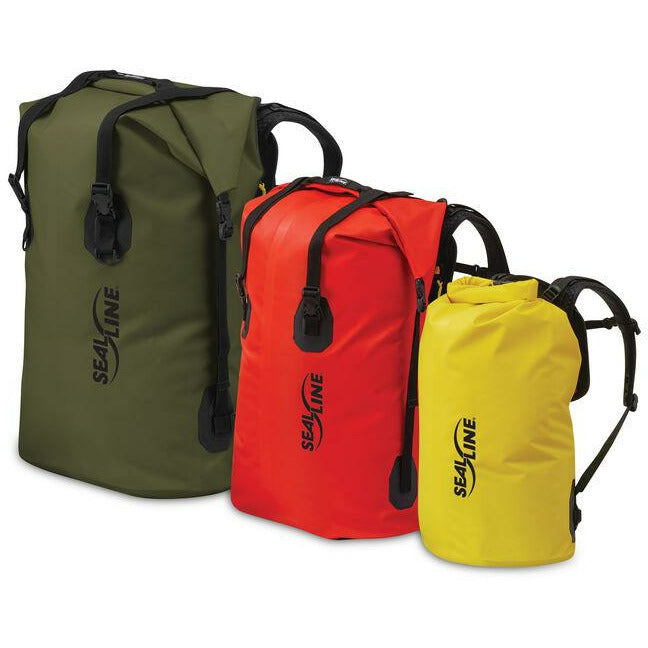
The SealLine Boundary series is one of the most popular dry sacks on the market. It offers a simple but effective design and – if closed correctly – is waterproof even in immersion. It’s available in three sizes: 35L, 65L and 115L.
Each of the sizes has a backpack harness, making them easy to portage. The harness is actually removable for added versatility.

The SealLine PRO Pack 120L is an excellent choice for a personal pack for long canoe trips. With a pack so large, it’s easy to fit all of your clothing, sleeping gear, personal items and even your tent in the same pack. The straps are comfortable for portaging and the welded seams ensure durability and waterproofness.
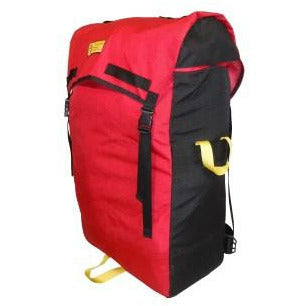
Canvas Canoe Pack
The Recreational Barrel Works Expedition Canoe Pack is a rugged canoe pack that will last years to come. Its simple design is easy to pack and perfect for loading kitchen gear and other equipment. The pack has adjustable shoulder and hip straps for easy portaging.
Although this canoe pack isn’t waterproof, the canvas material dries very quickly (use a pack liner for ultimate waterproofness). If you get caught in a storm or drop your pack in the lake, your pots and pans may get wet, but you won’t be carrying around a soggy pack for the rest of your trip!
Side note, the OG pack maker, Bill Ostrom, and his company Ostrom Outdoors also makes some of the finest packs around. Unfortunately we don’t carry them but make sure to check them out as well and tell Bill that Trip Shed sent you!

Canoe Barrel
The Recreational Barrel Works Canoe Barrel is the most popular maker for canoe barrels. The 60L is the standard size, though it is also available in 20L and 30L.
The barrel itself is made from durable plastic with two external handles. The lid contains an O-ring, ensuring waterproofness when secured by the metal ring.

Canoe Barrel Harness
Barrels are awkward to carry on portages. To make them easier to carry, choose a comfortable barrel harness with adjustable hip, shoulder and sternum straps.
We love the North Water Quick Haul Harness as it has adjustable straps and securely attaches to the barrel (so you won’t feel it moving around while you portage). The back panel and shoulder straps are padded, to make portaging even more comfortable.
FAQs about Canoe Packs
What about the wannigan.
The wannigan had long been a staple in canoe packing. A wannigan is a large wooden box with a lid and a long strap called a tump line. To carry it on portages, the wannigan rests on your lower back with the tump resting on your forehead. It definitely takes some practice to get used to carrying it, but if you can manage it, wannigans are great for storing kitchen equipment (plus the lid is great for a kitchen counter!).
Within the last decade or so, wannigans have lost a lot of their popularity but are still used my many traditionalists. Most people opt for a combination of packs, dry sacks and barrels instead.
Can you use a backpack for canoe trips?
Yes, you can. Hiking backpacks are very comfortable to wear on long portages (they’re made for carrying, after all!). However, backpacks are not waterproof so you’ll want all of your gear to be inside small, lightweight dry sacks inside. Additionally, it’s difficult to pack large and awkward gear (pots, grills, Dutch oven) into a backpack. The main reason however, that we usually don’t use a traditional hiking pack on trips is its size in relation to the canoe. For one, canoe packs typically fit better in the canoe while paddling based on its shorter length. Additionally, hiking packs are designed to be slimmer, sit closer to the body, and as a result are taller. This ends up pushing on the inside of the canoe while you’re portaging it and can make for a bit of an awkward ride. That said, the best pack is the one you’ve got – just get out there and use it.
How do I close my dry sack to ensure it stays dry?
Most dry sacks have a roll-top with two buckles. The rolls are what keep your bag waterproof and the buckles keep the rolls secure. The biggest mistake we see with new campers and their dry sacks is not rolling the top correctly. Watch this video for a demonstration.
In Conclusion
We hope this post has helped you determine which canoe packs you need for your upcoming canoe trips. You can view all of our canoe packs here . If you have any questions, please get in touch with us and we’ll find the right pack for you!
Subscribe To Our Newsletter
Get updates and learn from the best, more to explore, the complete guide to stay warm while camping.
As temperatures drop it becomes increasingly tempting to throw on a blanket, curl up on the couch with a hot chocolate and stay as inside

Ray’s Campsite Cuisine
Campfire meals hit differently. Theres something about carrying in fresh food to a campsite and whipping up a meal to be remembered. Whether you’re hiking,
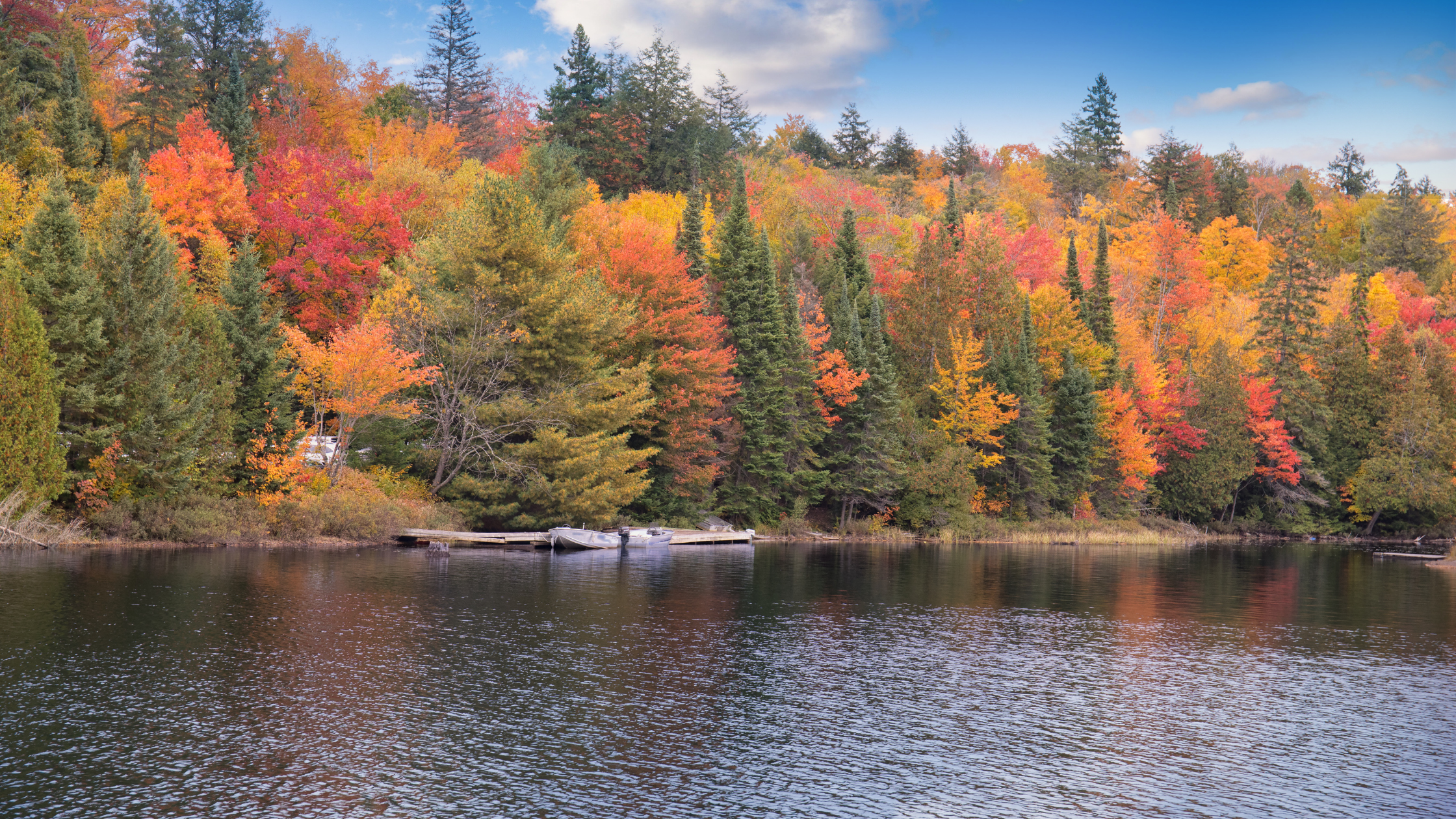
Where to See Fall Colours in Algonquin Provincial Park
Welcome to October and the arrival of peak colour in Algonquin Provincial Park! While the park is beautiful any time of year, it is especially
- Recreational Day Trips
- Longer Touring Excursions
- Straight Shaft
- Solo Canoeing
- Recreational Fishing
- Longer Fishing Excursions
- High-Visibility
- Hook Retrieval
- Versa-Lok Ferrule (Adjustable)
- Snap-Button (Fixed Length)
- All Sale Paddles
- New Arrivals
- All Apparel
- Accessories
- Cosmetic Seconds
- All Sale Items
- Bending Branches Team
- National ProStaff Team
- Regional Ambassador Team
- Wood Paddle Care
- Composite Paddle Care
- Factory Tours
- Canoe Sizing Guide
- Solo Canoe Sizing Guide
- Pack Canoe Sizing Guide
- Kayak Fishing Sizing Guide
- Kayak Sizing Guide
- Rockgard® Edge Protection
- Bent vs. Straight Paddle
- Paddles for the Solo Canoeist
- Versa-Lok Ferrule System
- Snap-Button vs Plus Ferrule
- Plus Ferrule System
- New At Bending Branches
- Black Pearl ST
- Dealer Locator
- Paddle Finder
- instagram Instagram
- twitter Twitter

- Learn Blog FAQ's Cosmetic Seconds Wood Paddle Care Composite Paddle Care Factory Tours Paddle Sizing Canoe Sizing Guide Solo Canoe Sizing Guide Pack Canoe Sizing Guide Kayak Fishing Sizing Guide Kayak Sizing Guide Choosing a Canoe Paddle Rockgard® Edge Protection Grip Guide Bent vs. Straight Paddle Paddles for the Solo Canoeist Choosing a Kayak Fishing Paddle Versa-Lok Ferrule System Snap-Button vs Plus Ferrule Plus Ferrule System Product Highlights New At Bending Branches Black Pearl ST
The Best Canoe Trip Portage Packs
7-minute read Choosing canoe packs will be a one-time purchase for most people if done correctly. Quality packs that are well-cared-for will do their job and last many, many years—even decades.

(Photo courtesy of Sharon Brodin)
In this post, we’ll focus on packs for wilderness canoe trips that involve several portages, including lengthy ones—like most you find in the Boundary Waters. These kinds of trips are different than river trips and others that have either very short portages or none at all.
What to Look for in a Canoe Trip Pack
There are a few things to take into consideration when it comes time to shop for canoe packs: What size(s) do you need? Do you plan to go on most of your trips alone or with one other person? Or do you like the idea of bringing your family or other friends along? Knowing this will help determine the best size packs for you. Your goal will be to fit all your gear into as few packs as possible to minimize the number of trips across the portages. So they’ll need to be quite large. A good rule of thumb is to buy the largest pack you can afford. Toughness. These packs will get tossed around, slung up into trees, scraped on rocks and get weather-beaten. You’ll want the material, straps and stitching to be durable enough to endure rough treatment over many trips and many years, no matter the conditions. (We have a list of suggested brands below!) Comfortable and supportive. When loaded down your packs will be heavy. You’ll want comfortable straps and solid support when you’re carrying them up and down hills, through mud, over rocks and among tree roots on those long portages. Waterproof—maybe. It’s not a deal-breaker. You can also pack everything inside a heavy-duty large garbage bag in the packs. But you can also consider a waterproof pack. The one thing you don’t want is wet gear!

(Photo courtesy of Les Voyageurs)
Look and feel. Some canoe trippers love the idea of using packs that are more traditional. Scott Oeth, owner of Bull Moose Patrol , is one of them: “As someone with a love for the legend and lore of the northwoods, the classic canvas portage pack, ash pack basket and wooden wannigan are my favorites to use. These packs, made with natural materials, ooze canoe country romance, especially when paddling one of my wood-canvas canoes!”
How You’ll Use the Packs
If you’re with a group on your canoe trip, generally you’ll use your packs in these ways:
- Food pack. You want all your food in one pack, with a rope system for hanging if you’re in bear country (for example, the Boundary Waters or Quetico). Some like to use bear barrels for their food instead.
- Equipment pack. For your tent(s), tarp, rope, saw, stove, cooking gear, etc.
- Personal packs. For your sleeping bags, sleeping pads, clothing and toiletries. Pack light and you can double up on these—two people per personal pack.
The bigger your packs and the more you can stuff in, the less you’ll need to hike your portages more than once.
Who Makes Canoe Packs?
Duluth pack.
Camille Poirier filed a patent for the original Duluth Pack in 1882. They’ve been around! Packs from the 70s may not look pretty anymore, but they’re still being used on canoe trips, as you can see in the photo above. Duluth Pack canoe packs come with a lifetime warranty for craftsmanship. They’re made of durable canvas available in several color choices. The leather straps and metal rivets and buckles are designed to last. The Duluth Pack folks will repair normal wear and tear issues for a reasonable fee.

Besides packs, they make bow bags, thwart bags, map cases, padded seats, paddle sacks and tump lines (traditional Voyageur straps that go around your forehead). All their packs are handcrafted at their Duluth, Minnesota headquarters.
Granite Gear
Granite Gear was founded by two canoeing buddies and is headquartered in the small Minnesota town of Two Harbors. Similar in style to Duluth Pack, Granite Gear is made of denier nylon instead of canvas, making them slightly lighter. Some of their packs are waterproof with a roll-top option like you see in dry bags. They offer comfortable and adjustable straps for your shoulders and waist. They also offer a barrel harness, thwart and bow bags and other handy storage packs.

One organization that uses Granite Gear canoe packs is Les Voyageurs . This non-profit group takes young people on month-long canoe trips in the far north, so their packs have to be tough. “Our program has been using Granite Gear canoe packs for a long time, as well as a custom pack-on-frame design that we created many years ago,” said Program Director Zach Fritz.
Portage North
Kondos Outdoors was founded by a husband/wife team in 1980 in Ely, Minnesota. Their high-quality canoe packs gained a great reputation over the past decades. In 2017, Kondos was sold and is now Portage North, still at their Ely headquarters. Their line of canoe packs continues the Kondos tradition of reliability, durability and value. Their packs are traditionally designed and hand-constructed of tough denier nylon. Food packs, equipment packs, personal packs and barrel slings are all available.
Cooke Custom Sewing
Another canoe pack company started by a husband/wife team, Cooke Custom Sewing has made and sold hand-crafted portage packs since 1980. Though his wife passed a few years ago, Dan Cooke continues making packs at the Lino Lakes, Minnesota headquarters. CCS offers both traditionally-shaped portage packs and hybrid packs, barrel packs and food packs, all made from tough denier nylon. They also offer bow and thwart bags, canoe covers and seat pads.

(Photo courtesy of Bull Moose Patrol)
“If I had to pick one ‘do it all’ canoe camping pack, it would be my Cooke Custom Sewing (CCS) 60L Barrel Pack,” said Scott Oeth. “Like all of Dan Cooke's products it is very well made, robust and highly functional. The pack carries heavy loads comfortably, rides in a canoe well and with the "blue barrel" inserted, provides easy, waterproof, worry-free packing.”
Frost River
Frost River is another Duluth, Minnesota-based maker of traditional waxed canvas portage packs of all shapes and sizes. Hand-crafted to last a lifetime, you’ll find packs for your personal gear, equipment, food and kitchen, bow and thwart, pack liners, pack baskets, leather accessories and more. These are sized to fit as much as possible so you make fewer trips across every portage. “We stand behind all our craftsmanship and hardware. We guarantee the seams on your Frost River bag will stay sewn together, the rivets will hold, the zippers will work, and the buckles will do their job for as long as you (or your grandkids) have your bag,” says the Frost River website. When your packs suffer normal wear-and-tear over the decades, the team at Frost River will repair them at a reasonable rate.
SealLine is based in Seattle, Washington. Their packs and dry bags aren’t for canoe portaging specifically, but adapt well for that purpose. They’re completely waterproof and come in a variety of sizes and colors. There are other dry bag-style brands similar to SealLine that would also be good candidates for canoe trip packs.

(Photo courtesy of Caleb Young)
Scott Oeth has guided wilderness canoe trips for years. He said, “On the canoe trips I guide, I often issue participants large roll-top PVC dry bags [like SealLine] with good shoulder straps. These work pretty well, but you need to do a good job of pressing air out and getting at least three tight rolls before buckling to prevent leaking. “Also, I have concerns about these packs wearing due to abrasion over time, especially if dragged across rocky campsites and portage landings.”
* * * * *
We hope you found this helpful. Your investment in good packs will pay off with years of use and enjoyment!
Do you have questions about paddles for your canoe trip, too? Contact our friendly customer service team today: 715-755-3405 • [email protected]
More for you...
- Canoe Paddles for the Boundary Waters
- The Most Basic Canoe Strokes to Master
- Top 6 Photography Tips for Wilderness Canoeing
You may also like

( ADDITIONAL HANDLING FEES MAY STILL APPLY )
FREE STANDARD SHIPPING ORDERS OVER $175

- canoes & gear
- barrels & barrel gear
- Barrels & Barrel Gear
- CANOES & GEAR
- camping barrels
- cooke custom sewing
- granite gear
- liberty mountain
- $100 - $150
- $150 - $200
- $200 - $250
- $250 - $300
Showing 1 -16 of 16 Items
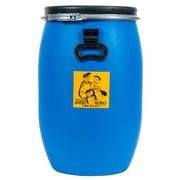
Waterproof Barrel 60 L
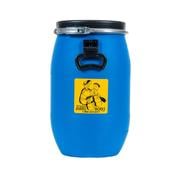
Waterproof Barrel 30 L
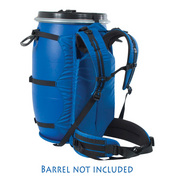
Vapor Flatbed Harness
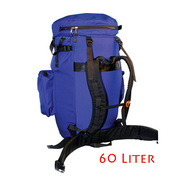
Quad Pocket Barrel Pack 60L
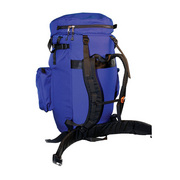
Quad Pocket Barrel Pack 30L
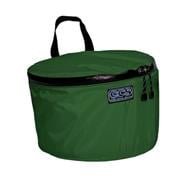
Barrel Bag 60L Zippered
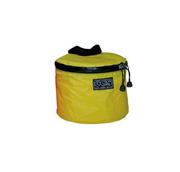
Barrel Bag 30L Zippered
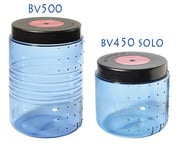
Bear Vault BV 450 Solo
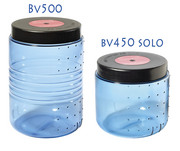
Bear Vault BV 500
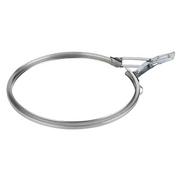
Metal Ring 60L Barrel
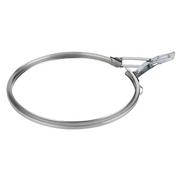
Metal Ring 30L Barrel

Replacement Lid 30L Barrel
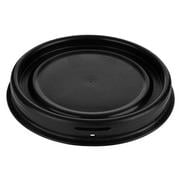
Replacement Lid 60L Barrel
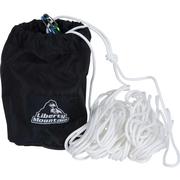
Bear Bag Hanging Kit
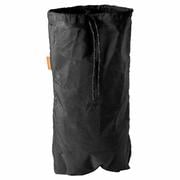
Allmitey Kodiak Bear Bag
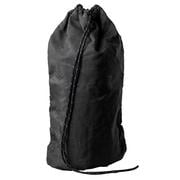
Ursack Major XXL Food Sack

Canoe Accessories: Must-Have Gear for Your Next Canoeing Trip
On first impression, canoes are quite a basic design. Their large, open cockpit doesn’t leave a great deal to the imagination.
However, once you start getting into the world of canoes, you quickly discover how differently they all paddle from one another and how small changes in their setup make big differences to your trip.
Once you have the right canoe you can make alterations and additions to make it suit your style. These might be changes to the actual canoe or items of equipment that make your life easier. There are loads of ways to accessorize your canoe and your gear to get the most out of your setup.
As an affiliate of Amazon and other retailers, we may earn a small commission when you buy via our links, at no additional cost to you. Thank you!
Our guide to canoe accessories covers recreational and tripping gear that you can take with you on your trips. You may not need these every time you head out onto the water in your canoe, but this list will help you to decide what you need to pack each time.
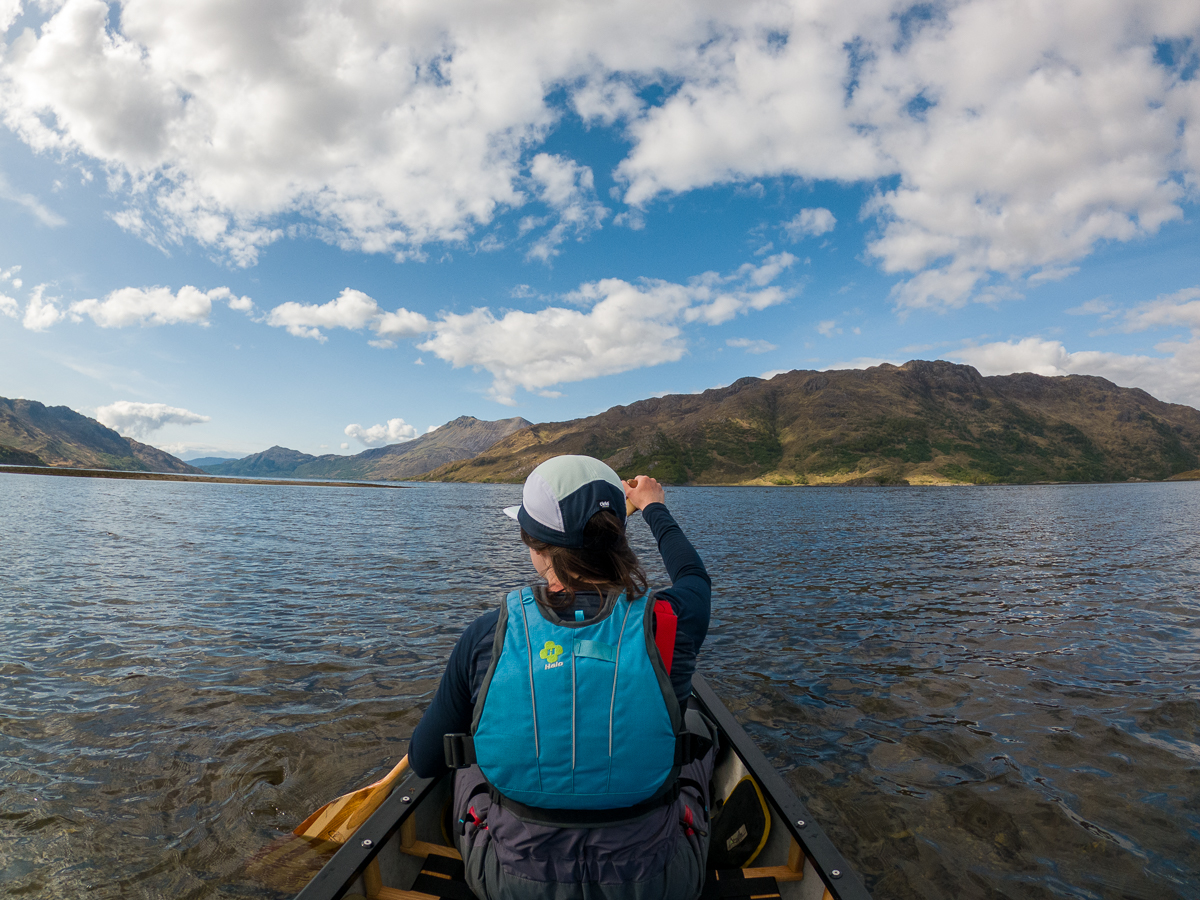
Watertight plastic barrels are one of the most commonly used storage methods in a canoe. These containers rely on a seal within the lid, secured with a metal clip, to ensure that even if you completely submerge your canoe, your equipment stays dry. It’s important not to overload your barrel, as this can loosen the seal slightly and water can seep in.
Barrels are available in all different sizes but the most popular with canoeists are 30 liters and 60 liters . 30 liters is enough space for a day trip and you can fit your lunch, spare layers, and first aid kit. If you’re heading out on a trip, a 60-liter barrel will fit your tripping gear, while you can use your 30-liter barrel for smaller items that you might need throughout the day.
The key benefit to barrels is their sturdiness. Unlike dry bags, barrels cannot rip and it would take a big impact to break through them. Despite what some people think though, they are not bear-proof and you still need to take precautions around camp with your food.
Barrel Harness
If you’re heading out on a trip and need to portage your equipment around non-negotiable rapids, or between lakes, a harness is. A fully loaded 60-liter barrel can easily weigh upwards of 50 lbs. Although barrels usually come with plastic handles fitted, these aren’t a comfortable way of hauling that much equipment. A barrel harness gives you a fully adjustable back system for hauling your gear.
The best barrel harnesses are adjustable, so you can use them with barrels of various sizes. If you are traveling with multiple barrels, you can use your harness on each of them individually and save yourself from buying another barrel harness.
Backpack style Dry Bag
Even the most comfortable barrel harnesses feel cumbersome, especially during long portages. Comparatively, a backpack-style dry bag, like the NRS Bill’s Bag , fits like a normal backpack and can be carried comfortably over long distances.
These heavy-duty dry bags are designed to withstand the abuse that comes from canoe tripping. One of the main advantages of using a dry bag, other than the comfort factor, is that you can compress them. If your bag isn’t full, you can roll the top down further, or squeeze out more air, and they take up less room in your canoe.
Small Day-Bag
When possible, you want to avoid opening your barrel or dry bag. Firstly, they’re likely to be attached to your canoe or stowed in a way that stops them from coming out. Also, the more you open and close your bag or barrel, the greater the chance that you don’t reseal it properly and your tripping gear is exposed to getting wet.
I recommend having a smaller dry bag for stowing snacks, spare jackets, first aid kits, head torches, and anything else you might need on the water. If you’re a barrel advocate, you could use a 30-liter barrel or smaller for this job. Perhaps the best dry bag for this job is the Watershed Ocee , which is secure enough for electronics and valuables.
When the wind is in your favor, why not use it to your advantage? Canoe sailing lets you kick back and relax while the elements do the work for you. On longer trips, this can be the relief you need to get some well-earned rest and still cover the water.
Canoe sails come in various shapes and sizes and are designed to be used in different ways. There are purely downwind sails , tandem pair sails that fit to the top of the bow paddler’s paddle, as well as solo sails . These solo sails require a mount for the canoe pole to be glued into the hull of the canoe, as well as a thwart to hold the pole in position.
These sails vary in efficiency and ease of use. The solo canoe sail is the most like a sailing boat sail and allows you to sail across wind and even upwind, with some practice. Most canoeists will only ever want to sail with the wind on their backs, though, and don’t require the extra equipment that comes with this setup.
I don’t remember ever going on a canoe trip without a tarp. Whether you have a basic all-purpose tarp or a camping tarp with multiple attachment points, the tarp can serve a huge number of purposes.
Tarps can be useful as lunch stop shelters if you reach your destination in heavy rain. In emergency situations, or if you are caught out in poor weather or rough conditions, tarps can be used in a number of ways to make yourself a shelter. You can wait out rescue, or even camp overnight in these tarp shelters .
Tarps can also be used as a sail, saving you another piece of gear. This can be done simply, with a paddler, or pair of paddlers, holding the tarp. Alternatively, you can create a sailing rig out of poles and ropes that can really pick up some speed.
Padded Seat
Canoes can be used either sitting or kneeling. For the most part, kneeling gets uncomfortable after a while and is often used in rough conditions or on the river. Sitting up on the seats may save your knees, but it can put a lot of strain on your back instead.
Attaching a canoe chair to your seat lets you enjoy the full support of a kayak while in your canoe. These chairs are fully adjustable and fold down out of the way when you don’t need them. The added bonus to them is that when you get to the beach, you can simply unstrap your seat from the canoe and lounge on the land.
Kneeling Pad
In rough conditions, like choppy waves or white water rapids, kneeling down is usually preferred to sitting on the seats. The lower center of gravity and extra stability that you get from kneeling keeps people more secure in their canoes and less likely to capsize.
But kneeling is uncomfortable, especially for long periods of time. A kneeling pad provides padding against the hard plastic outer of your canoe, so you don’t get sore knees as easily. These knee pads also provide some insulation and anti-slip, so you stay warmer and don’t slip around your canoe as you negotiate the rapids.
Air Bags or Blocks
Even the most experienced canoeists sometimes capsize. As you get more experienced, these capsizes happen in more remote, more challenging environments, where you can be more exposed to the elements. The last thing you want in this situation is a difficult rescue scenario.
Adding foam buoyancy blocks or inflatable airbags to the ends of your canoe will prevent it from filling with as much water and make it easier to empty. If you paddle an empty canoe, you can even get a center float bag to make rescues even easier.
Foam buoyancy blocks are more hardwearing than airbags, but they do not take up as much space. Airbags are more common than blocks because they can be inflated to take up space or deflated if you need more storage room in your canoe. These airbags are susceptible to UV damage though.
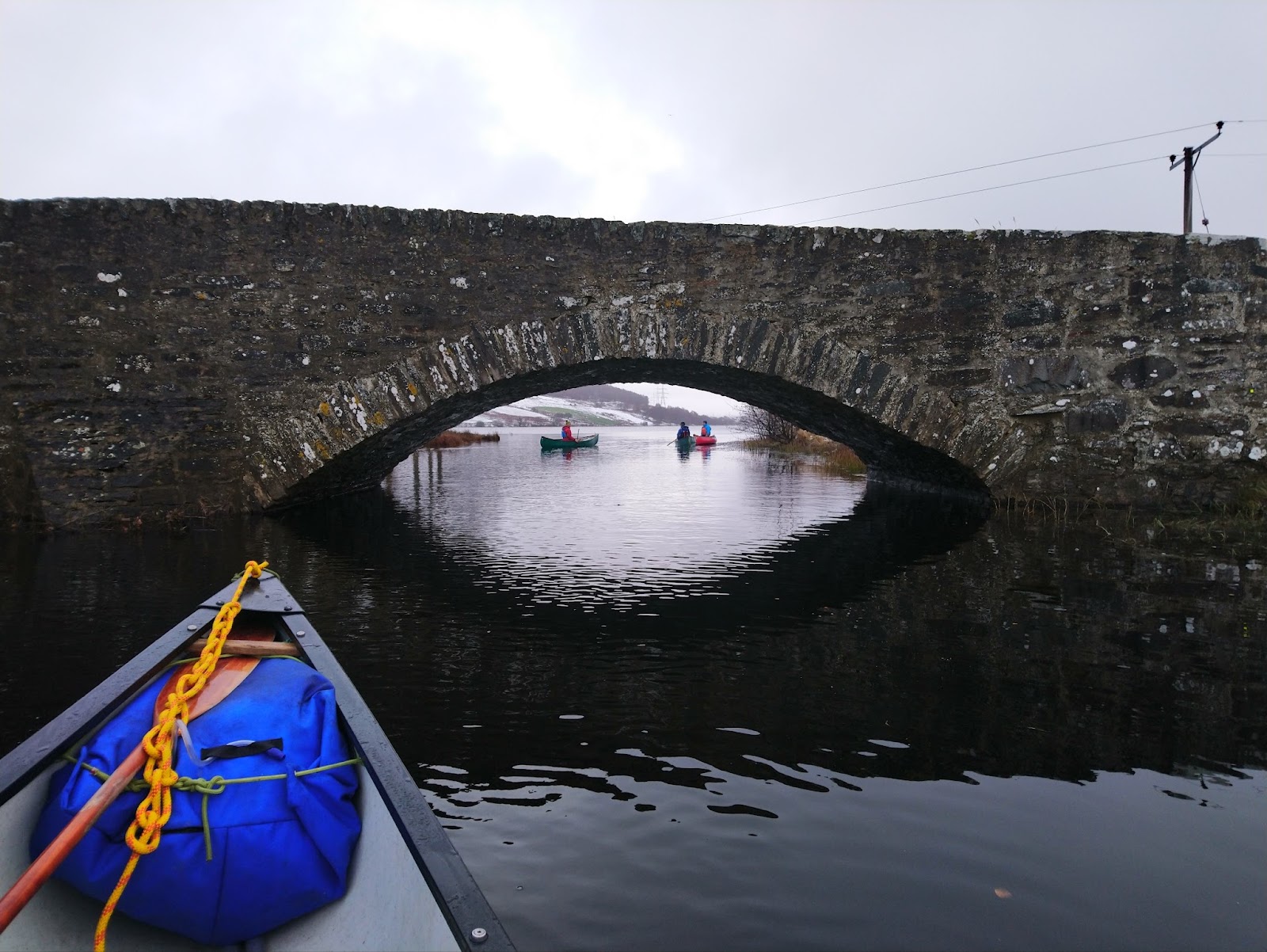
Floating Rope Painters
Often on trips, there are areas where you need to drag your canoe. This could be portaging through swampy ground where you risk twisting a knee or a shallow section of river that you can’t paddle through. You may also need to tie your canoe up at the end of the day so that it isn’t carried away by winds or rising rivers.
Using painters on either end of your canoe lets you either drag your canoe upstream, or across rough terrain, or retain control as you float your canoe down a shallow section of river. You can also use your painters to tie your canoe up overnight so they don’t get carried away by strong winds or rising rivers.
Painters are usually measured to be roughly the same length as the canoe and should be made from floating rope . This prevents the rope from sinking in the water and potentially creating an underwater obstacle, or wrapping around the canoe. Make sure to stow your painters out of the way while you paddle, so that they don’t wrap around you in the event of a capsize.
Throw Line + Swim Line
If you are a river canoeist, especially in white water, you are most likely familiar with throw bags . These are commonly used to rescue paddlers who have fallen into the river and are struggling to swim to shore.
When you canoe on a river, you can attach a throw line to the end of your canoe and create what is known as a swim line. In the event of a capsize, if your throwline is securely attached to your canoe, you can simply grab the end of the rope and swim to shore. Once on the shore, you can brace yourself against the pull of your canoe and pendulum it into the shore.
Using a swim line requires practice and they are better on narrower rivers, where you can get to the side before the line goes taut. Be sure to pack your swim lines properly and keep them out of the way to avoid them wrapping around you if you capsize.
Back when canoes were used by fur traders, they would paddle themselves downstream and then pole their way back up on the return leg. Pushing yourself along with a canoe pole requires practice, but can be a fun and easy way to link lakes together without having to portage.
Poles are also useful in shallow sections of a lake, where there is not enough depth to paddle. This not only protects your paddle from damage but allows you to move more efficiently. You can also use your poles as part of a tarp shelter if there are no trees in the area, or as part of a sailing setup.
Most modern canoe poles come in two pieces, so you can stash them easily in your boat when you don’t need them. Poles are traditionally made from wood for the bed and comfort, but some modern poles are made from aluminum or fiberglass.
Spare Paddle
We would consider a spare paddle to be an essential, rather than an accessory. It’s easy to drop a paddle in the heat of the moment or lose or break one on a portage or in transit.
Paddles are rarely lost or broken at convenient times. We recommend always taking a spare paddle with you and keeping it in the boat at all times so that if you need it, you can grab it quickly and keep swinging. This lets you chase the lost paddle, or at least keep negotiating the rapid or fighting the wind.
Portage Trolley
There’s no escaping it, canoes are heavy. Canoes are especially heavy when they’re fully loaded for a long day out or a trip. Loading your canoe onto a portage trolley stops you from having to lift or drag your canoe between sections of water or from your car to the lake.
If you’re heading out on a trip, folding portage trolleys that can be stowed are more useful than solid trolleys. It’s also worth looking at trolleys with solid wheels that can’t puncture halfway through a portage. These trolleys are only really worthwhile on good trails, so if you can, check out the portage tracks before you pack your trolley.
Canoe tripping is all about comfort. Sure, you’ve got to carry and move everything you pack, but you’ve got the space to pack some good food and a couple of beverages too. But there’s no point packing all that stuff, just for it to go warm by the time you get to camp.
A quality cooler is a canoe tripping essential if you want to eat well and enjoy a cool beer in camp. The best canoe coolers are fully sealed and secure, keeping your food and drink safe even if you capsize. If your cooler doesn’t lock, we recommend putting a strap around it to stop the lid from popping open unexpectedly.
Clip-on cup holder
Is there a greater feeling than cruising along early in the morning on a gentle lake, taking a sip of your favorite fresh brewed coffee? What’s not so great is when you set your cup down in your canoe and it spills over you and all your gear. A clip-on cupholder that attaches to your gunwales gives you a secure area to store your beverage on the water.
These cup holders can be universal models that clip over your gunwale, or they can be more specialized equipment that fits accessory mount rails. Check the size of the beverage holder and make sure it will fit whatever cup, bottle, or tin you want to enjoy on the go.
Final Thoughts
As noted above, you won’t need each of the items on this list on every trip. Use it as a guide to help you decide what to pack depending on where and when you’re going. Happy paddling!
Related Posts
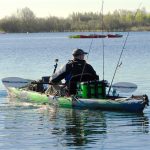
NEW TO KAYAK FISHING and not sure what gear you will need? Check our review of kayak fishing must-haves!
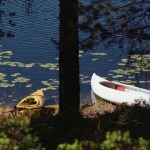
Both kayaks and canoes have been used for thousands of years. But which watercraft is better, and why? Let's find out!
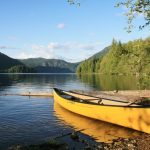
We've put together the list of the best lightweight canoes that will let you relax during long wilderness journeys and gentle cruises across open lakes.
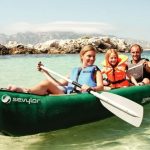
Inflatable canoes are easy to transport and store. Here is our list of the best inflatable models to help you make the right choice.
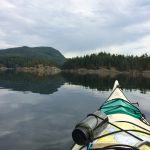
This article looks at the essentials; those bits of gear that you can’t go paddling without. We discuss whether you need the most expensive pieces and why you might want a specific piece of gear if you’re thinking of pursuing certain avenues of paddling.
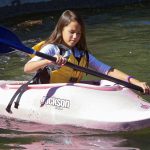
Kayaking looks fairly intuitive, and most people quickly work out how to move their kayak around in roughly the right direction. But there’s a difference between making your boat move around and paddling your kayak efficiently.
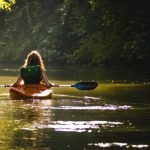
Picking your first kayak paddle is a daunting task. In this article, we review some models that we consider the best kayak paddles for beginners. Enjoy!
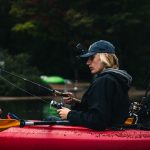
Your paddle is your closest companion on the water. Finding the right paddle is important to get the most out of your day of fishing.
Tom "Moose" Kilpatrick
Moose started his paddling life on the ponds and rivers in the South-East of England. He has slowly worked his way north and has spent the last few years paddling in Scotland, both with friends and as a canoe guide. A very experienced and knowledgeable coach and guide across Scotland and the rest of the UK, he spent a summer in Norway and a month in Nepal. He is also a cofounder of PaddleMore.co.uk.
Leave a reply Cancel reply
Save my name, email, and website in this browser for the next time I comment.
This site uses Akismet to reduce spam. Learn how your comment data is processed .
PaddlingSpace.com is a participant in the Amazon Services LLC Associates Program. As an affiliate, we may earn a small commission (at no extra cost to you) when you purchase via our links. Thank you for supporting us!
418 BROADWAY STE Y ALBANY, NY 12207 (518) 533-5454
- Gear Catalog
- Kayak Reviews
- Gear Guides
- Terms and Conditions
- Privacy Policy
We monitor major online stores and alert you about sales, cool deals and price drops. No spam ever, unsubscribe at any time!


Canoe camping food barrels: Everything you need to know
by Ross Burley | Jun 8, 2022 | Gear
This post may contain affiliate links.
The first time Elise and I went on a canoe camping trip , we didn’t even know what a canoe camping food barrel was. We did, however, notice several other canoe campers carrying them.
We didn’t even have waterproof packs. Needless to say, everything got soaked once it was in our canoe and we found ourselves having to constantly get in and out with every portage on our route.
Live and learn, right? It wasn’t long after that when we decided it was time to invest in a canoe camping food barrel if we were serious about doing more trips.
Here's what we'll cover:
What is a canoe camping food barrel?

A canoe camping food barrel is a large, barrel-shaped container for storing all of your food and cooking gear while canoe camping. Most of them are blue and made out of durable plastic—such as high density polyethylene (HDPE).
The idea behind using a food barrel is to keep all of your stuff dry . This is especially important for when water enters your canoe during portages, running rapids, paddling in wavy conditions, traveling in rainy weather, or possibly flipping your canoe.
The big food barrels typically have a capacity of 60 litres (16 gallons), which is more than enough space for everything you need for a canoe camping trip. You can also get smaller ones with a capacity of 30 litres (8 gallons) for shorter trips.
Standard food barrel features

- An air-tight plastic lid that you place over the opening of the barrel to close it and create a barrier against water.
- A metal snap-closure ring that you secure over the lip of the lid and barrel to further ensure a waterproof seal.
- Two external side handles you can use to lift and carry the canoe camping food barrel with two hands.
The benefits of using a canoe camping food barrel
- Protects food from water damage and being crushed in the canoe
- Keeps small animals out (mice, squirrels, raccoons, etc.)
- Air-tight seal keeps smells contained so animals aren’t as easily attracted
- Ideal for bringing food for long trips or trips with multiple people
- Can be used with a harness to comfortably carry on your back (like a backpack)
- Extra accessories can be purchased for additional storage and organization
- Barrel lid can be used as a serving or cutting board
- Can be used as a small table or stool at camp
- Can be placed a short distance away from camp at night instead of hung in a tree
The drawbacks of using a canoe camping food barrel
- Can be big, awkward, and heavy to move around
- Not ideal for lightweight camping trips (or potentially single portages)
- Smell-proof, but not bear-proof
- Harness and extra accessories must be purchased separately
- A pain in the butt to try and hang in a tree (too heavy)
What’s the best canoe camping food barrel?
The absolute best canoe camping food barrel you can get is from Recreational Barrel Works . They’re a small, family-owned business located in northern Ontario, Canada.

All of their canoe camping food barrels are made out of high quality materials and are compatible with a variety of different accessories. We bought ours from them, and it’s held up strong even after being thrown around in the canoe, at portages, and at camp.
Recreational Barrel Works canoe camping food barrels are also some of the most affordable on the market. They offer a 60-litre (16-gallon) barrel for $145 CAD and a 30-litre (8-gallon) barrel for $108 CAD.
How to load your canoe camping food barrel

Depending on what you’re bringing, how long you’re canoe camping for , and how many people are in your group, the contents of your canoe camping food barrel will vary. We recommend organizing it as much as possible so you can easily access whatever you need while you’re at camp.
Load heavy items first
For starters, aim to load the heaviest items (like cooking gear) first so they’re at the very bottom. We load our Bushbox XL titanium stove followed by our titanium cookware like pots, pans, plates, and cutlery.
Use barrel buckets

Next, we make use of our two barrel buckets , which is basically a round bag that fits inside the barrel, to load our dry food items. We find it easiest to place all dry food items together in a dedicated freezer bag according to the meal.
So, for instance, if we’re planning to have a dehydrated chicken alfredo meal for dinner one night we’ll grab a freezer bag and place the dehydrated food (pasta/spinach/mushrooms/ground chicken), powdered milk , and alfredo sauce packet in it. Then we’ll take that whole freezer bag of dry items and place it in the first barrel bucket, repeating this process for every other meal we’re planning to have.
Stack everything with light items on top
Once the first barrel bucket is full of dry food items, we move onto the second barrel bucket and fill it with lighter items—like bread —and then place it on top of the second one. Our barrel buckets are open at the top, but you can also get ones with lids to keep items from falling out.
Use a barrel cooler for cold foods

Right before we set off on our trip, we load our barrel cooler with the frozen and refrigerated items— like meat —that we plan on eating within the first two days. We prefer to place it on the very top of our barrel buckets, but if it’s really heavy, we’ll place it on the bottom with the two barrel buckets on top of it.
Make use of the extra room
The barrel buckets and cooler have a good amount of wiggle room around them, so you can place smaller items down the sides of them for extra storage and to help keep everything in place. We often do this with long, awkward items like our grill, saw, and axe.
Consider extra storage accessories
We have two barrel pouches , which are vertical bags that you can fasten on each side of the outside of your barrel. They’re great for storing things you want easy access to—like snacks or your rain jacket—but they do mean adding extra weight to your already heavy barrel. These pouches also aren’t waterproof, so anything you put in them will probably get wet.
Pocket organizers fit around your barrel bucket or cooler and can be used to store smaller items like packets of spices, soup mixes, tea bags, and more. There’s also a kitchen organizer you can clip to the side of your barrel to keep all of your utensils in one place.
How to portage your food barrel

You’re going to need a harness to help you portage your canoe camping food barrel. We recommend getting one with a padded hip belt and shoulder straps for extra comfort.
Recreational Barrel Works offers two types of harnesses—an expedition harness and a minimalist harness. We have the expedition harness , which is the one you want if you plan on portaging during your trips. It’s extremely comfortable and fully adjustable, so you can tweak it to your body type.

The minimalist harness doesn’t come with shoulder straps. It’s designed for trips without any portaging—where all you’re doing is moving your barrel from the canoe to your campsite.
Considering the fact that your food barrel is probably going to be very heavy—anywhere from 50 to 75 pounds depending on your length of trip and number of people—you’re going to want to take extra care when portaging it.
Use the harness handles to lift the barrel in and out of the canoe.
You’ll notice that the expedition harness has two handles on the opposite side of the straps—one at the top (close to the lid), and one at the bottom (close to the base of the barrel). You can use these instead of the barrel’s external handles to lift it sideways, which makes it easier to loading and unloading it from the canoe.
Place the barrel on its side in the canoe in a spot that distributes the weight evenly.
Avoid placing the barrel in the canoe in its upright position, which can throw off balance if you’re paddling in wavy conditions of fast water. Instead, place it on its side to lower its centre of gravity.
If you and your paddling partner are around the same weight, you’d place the barrel in the middle, However, if you’re not the same weight, and you’re carrying more gear, you’ll want to place your barrel slightly forward or backward to distribute the overall weight of the canoe as evenly as possible.

Use the buddy system when picking up the barrel to putt the shoulder straps on—or taking them off.
You can really hurt yourself if you try to pick up or take down a heavy barrel all by yourself. When planning to portage the barrel, pick the barrel up by the top of the two shoulder straps at the same time as your partner, who picks it up from the two harness handles at the top and bottom.
They can help take some of the load off of you and keep the barrel upright as you turn around and get your arms inside the straps. Similarly, when taking the straps off at the end of a portage, you’ll want your partner to be holding the two harness straps as you slide your arms out of the straps to help lower the barrel down gently.
Should you bring your barrel on every canoe camping trip?

When we got our food barrel, we thought we’d be bringing it with us on practically every trip… until we realized how much extra weight it adds.
For us, the barrel poses problems for single-portage trips. Single portaging means that you’re able to bring all of your gear (including the canoe) from one end of the portage to the other—in one go. Double-portaging, on the other hand, requires bringing some of your gear to the other hand, then going back to get the rest of your stuff.
If we bring our big 75-litre canoe pack, plus our barrel, plus our canoe—it’s just too much for us to single-portage. Ross can’t portage the canoe with such a big, awkward, heavy load on his back.
In these cases, where portaging is either long or frequent or both, we go without the barrel in favour of the canoe pack. Elise carries the canoe pack while Ross carries the canoe plus a much smaller and more lightweight pack with a few essentials in it.
So, no, you really shouldn’t bring your food barrel on every canoe trip you have planned . For trips that require a lot of travel and portaging, you may want to go without it like we do. The only exception would be if you have multiple people coming, who can carry stuff.
For trips that involve paddling straight up to your campsite, a food barrel is a great idea. Just make sure to think about your length and style of trip when you’re considering bringing the barrel.
How to use your food barrel at camp

There are a few campsite rules you should be following with your barrel to stay safe.
Keep it closed as often as possible. If you leave the top open, critters can still get in. Putting all food items and cookware in it and sealing it up is especially important when you venture off your campsite for the day.
Keep it in the shade. You might notice that direct sunlight makes everything in your barrel warm. Even if all the contents of your barrel are dried goods, you’ll still want to keep them as cool as possible. Aim to keep your barrel under tree cover or a tarp while at camp.
Load all of your dishes , cookware, garbage, and toiletries in it at night. Everything that smells should go in your food barrel—no questions asked. You might even want to consider rinsing and wiping the outside of the barrel or the lid to get rid of any residual smells from food that may have come in contact with the barrel.
Seal it up at night. You should also be sure to put the lid on your barrel at night and seal it with the metal ring. Not only will this keep smells contained, but it will help keep your food safe from animals that might be prowling around your campsite.
Carry it a decent distance from your campsite or hang it if it’s light enough. Our food barrel is always so heavy that we never even bother hanging it. Instead, we just drag it into the woods—usually somewhere around the privy—and leave it there.
Yes, it’s a risk, because bears can still tear through it if they want to, but as long as you’re not camping in an extremely popular spot where bears have learned to expect to find food, you’ll probably be fine. If, however, your barrel isn’t terribly heavy, you can certainly hang it from a sturdy tree branch with some strong rope.
How to clean and store your food barrel at home
Given that your food barrel is meant for storing food, chances are it will be very stinky, sticky, and potentially wet from leaked foods or liquids by the time you get back home. It’s important to address this as soon as possible to keep your food barrel in tip-top shape.
Step 1: Empty everything out of your food barrel.
Step 2: Bring everything outside.
Step 2: Use a bucket of warm water with dish soap and a sponge or rag to wipe the interior and exterior of the barrel. Do the same for the lid.
Step 3: Leave everything outside for a few hours to dry out.
Step 4: Once dry, pack any gear into the barrel that you want to store in it and place the lid on it if you want, but avoid closing the metal snap-closure to keep the pressure off and prevent permanent indenting.
If the barrel buckets are sticky or wet, we’ll soak them in soapy water for a bit and then let them dry. The interior of the barrel cooler always gets a wipe-down with soapy water or sometimes isopropyl alcohol.
We’ve never had to clean our expedition harness, but if we did, we’d probably do it just by submerging it in water at camp or pouring water over it at home in the backyard—then letting it dry.
Food barrels vs. dry bags vs. Ursacks

A food barrel is just one way to store and carry your food on a canoe camping trip, but there are others. A dry bag is a great option for canoe camping if you’re looking for something lighter weight and more packable. Ursacks are also a good option for canoe campers who want to protect their food from animals (especially bears) but don’t necessarily need the extra capacity that a food barrel provides.
Ultimately, it’s up to you to decide what storage option is best for your canoe camping needs. If you like the idea of having a big, sturdy container for all your food and gear, then a canoe camping food barrel is certainly the way to go. But if you’re looking to save space and weight, then one of the other options might be a better fit. Whichever option you choose, just be sure to take the necessary precautions to keep your food safe from animals.
We hope this guide has provided you with some helpful insights on how to use a canoe camping food barrel. If you have any questions or tips of your own, please share them in the comments below!
Happy canoe camping!
Ross is an experienced backcountry canoe tripper and winter camper from Ontario, Canada. He loves looking at maps, planning new routes, sport fishing, and developing his nature photography skills. He’s also certified in Whitewater Rescue (WWR) I & II and Wilderness First Aid (WFA).

You might also like:

Popular posts

We’re Elise and Ross , avid backcountry campers and outdoor adventurers! We started Gone Camping Again as a way to share our knowledge and experience about wilderness living and travel. Our hope is that we inspire you to get outside and enjoy all that nature has to offer!
Read more about our story.
Best Canoe Packs – Canoeing Trips Made Drier
The best canoe packs can make your portaging life much easier (and who wouldn’t want that?!) . But finding the right one for your trip might not be so easy, especially with all the different options out there.
We have put this short guide together to help give you some tips on how to choose the right one and the features that might make your canoeing trip a little less of a struggle.
Our Top Picks:
- Granite Gear Traditional 3.5 Canoe Pack (best overall)
- Harmony Barrel Portage Harness (best barrel pack)
- SealLine Black Canyon Dry Pack (best backpack)
Table of Contents
Top 5 Best Canoeing Portage Packs Reviewed
1: granite gear traditional 3.5 canoe pack (best overall).
- Dimensions: 26 x 21 x 7 inches
- Weight: 1 pound 2 ounces
- Capacity: 57.35 liters/3500 cubic inches
This Granite Gear Traditional 3.5 canoe pack is a lightweight, mid-size option that is designed to fit a range of paddlers with torso lengths from 18 to 22 inches.
This is a durable bag made from tough 210 denier Cordura nylon, which also helps to minimize the overall weight. The drawcord top can make it easier to tightly pack your gear.
A great feature of this one is the ergonomic harness system, which has wide, padded shoulder straps and an adjustable sternum strap for added support and stability. It also benefits from having a padded hip belt, for improved weight distribution, with an adjustable strap that can be tailored to fit waists from 26 inches up to 52 inches.
- Lightweight – easier to carry when loaded
- Ergonomic harness system – helps with weight distribution and carrying comfort
- Durable – tough fabric for abrasion resistance
2: Harmony Barrel Portage Harness (best barrel pack)
- Dimensions: 20 x 12 x 6 inches
- Weight: 1.34 pounds
- Capacity: n/a (barrel: 60 liters)
The Harmony Barrel Portage Harness is a harness that’s designed to work with the Harmony 60 Liter Barrel. It is built to transform the 60-liter barrel (sold separately) into a portage pack.
It features padded shoulder straps that are wide for more comfort and an adjustable sternum strap for easier carrying of loads. Another nice feature is the padded waist belt so that you can distribute weight more easily and stabilize your load.
The back panel is also padded for additional comfort and there’s a built-in load stabilizer to help with heavier gear. The harness also lets you access the barrel (not included) without having to detach it.
- Works in conjunction with the 60-liter barrel – transforms the barrel into a portage pack
- Padded straps – shoulder and waist padding for added comfort
- Load stabilizer – better weight distribution
3: SealLine Black Canyon Dry Pack (best backpack)
- Dimensions: 30 x 18.5 x 12.5 inches
- Weight: 4 pounds 10 ounces
- Capacity: 115 liters/ 7010 cubic inches
This SealLine Black Canyon Dry Pack is a completely waterproof backpack that benefits from having welded seams and a large capacity.
A great feature of this backpack is that it has a built-in suspension system to help make carrying your gear a little easier. The padded shoulder straps and hip straps are designed to make hauling your gear more comfortable, but they can also be removed if you want to use the pack as a dry bag only, making it a pretty versatile choice.
This features a roll-top closure to help keep your contents safe and dry, and it also has compression straps at the sides. Another nice feature is the light-colored fabric inside, which can make it easier to locate particular items.
- Waterproof – keeps your gear dry
- Large capacity – can hold a lot of gear
- Padded and removable straps – for comfort and versatility
4: Chinook Chemun Portage Pack
- Dimensions: 18 x 9 x 23 inches
- Weight: 3.55 pounds
- Capacity: 75 liters/4500 cubic inches (100L/6030 cubic inches expanded)
The Chinook Chemun Portage Pack is a large, lightweight pack that can be a good option if you want to stick to a tighter budget. This one is durable and made from 600 denier HDTEX ripstop polyester.
There’s plenty of room for your gear for an extended trip, with mesh side pockets for water bottles as well as paddle storage. The main compartment has a similar closure to a dry bag to help prevent water from getting inside, but it may not be entirely waterproof so you may want to also use a dry bag or trash bag for added protection.
This features padded shoulder straps and a padded mesh back panel for added comfort. There’s also a sternum strap and a removable padded hip belt with adjustable straps for stabilizing your load.
- Affordable option – budget-friendly pack
- Additional pockets – for storing a paddle, tools, and water bottles
- Padded back panel – breathable padded mesh for improved comfort
5: Frost River Camp Cook’s Kitchen Pack (best canvas bag)
- Dimensions: 19 x 19 x 12 inches
- Weight: 6 pounds
- Capacity: 71 liters/4332 cubic inches (109L/6669 cubic inches expanded)
This Frost River Camp Cook’s Kitchen Pack is a very durable option that is made out of 18 ounce waxed cotton canvas and features solid brass buckles. It has a tough double-layer waxed cotton bottom for added strength and protection from water and damp ground. It can be a great choice for cooking equipment, food, or even just as a general pack. A handy feature of this one is the utensil roll that can be snapped onto the pack and has a cover with little pockets for keeping your tools and utensils in place. The straps are made from buckskin leather and are padded for additional comfort. There’s also a tumpline to help you carry heavy loads.
- Durable canvas – heavy-duty water-resistant waxed cotton
- Quality components – comfortable, resilient, and adjustable leather straps and brass buckles
- Removable utensil roll – ideal for tools and cooking utensils
Types Of Canoe Packs
Modern barrels tend to be made from plastic and can offer a good level of waterproof protection . Because they are a solid material, they can be ideal for keeping items that are breakable or that would otherwise be crushed inside a soft pack.
Many barrels will often require you to use a separate harness so that they can be carried on your back. Harnesses can make it much easier and more comfortable to haul a barrel and they will usually have padded shoulder straps and even sometimes sternum and waist straps for better weight distribution.
A barrel can also be carried inside some other types of packs.
Canvas (Duluth)
Canvas packs, also known as Duluth packs because of their 19th-century heritage from Duluth, Minnesota, are probably one of the most durable and traditional types of canoes packs.
Cotton canvas portage packs can be heavier than some newer man-made fabrics, such as polyester, because they tend to be thicker for heavier-duty use, often with leather straps and heavy-duty buckles, and other components. This can make them last a long time.
Some Duluth packs will tend to have a wax coating which can give them added durability as well as water resistance, which can help to guard against rips and holes and can help keep your gear somewhat dry.
However, not all of these types of packs will be waterproof and you may need a separate liner.
Baskets are generally similar in shape to barrels but they may offer less protection for your gear. For example, they usually won’t be waterproof. Baskets are a traditional type of portage pack, helping to keep your gear from being squashed.
You can often use baskets inside other types of packs, such as inside a canvas pack, to provide a more rigid structure to protect your gear.
Nylon/Polyester
These types can be the more modern choice for canoeists as they can be lighter weight, meaning it can reduce the overall carrying weight when the pack is fully loaded.
Many nylon and polyester packs will tend to have some water resistance, such as a waterproof coating, to help keep the inside dry. Some may also double as dry bags so that you don’t need additional waterproof liners. However, not all nylon and polyester packs will be waterproof.
Top Features To Look Out For On A Portage Pack
Durability can be a top feature to look for since the pack will likely be thrown in and out of your canoe pretty frequently. Tough fabric and strong seams can be important as this can help prevent damage from overhanging trees or simply hauling your heavy gear.
Waterproof Material
A waterproof pack is not always necessary, as you can use dry bags or you can line the pack with a heavy-duty garbage bag to keep your gear dry. However, it can be a nice feature to have, as it can mean added protection for your equipment and can also mean the exterior of the pack dries quicker.
Size And Capacity
Capacity or volume is often measured in liters or cubic inches. This determines how much gear you can store inside the pack. The higher the number in liters or cubic inches, the more space you’ll have inside.
The size of the pack, or the exterior measurements, will usually tell you how much room it will take up in your canoe or on your back. The larger the dimensions of the pack, usually the larger the capacity – but this may not always be the case, so it can be best to check out both to make sure the pack will suit your needs.
Think about what you want to carry with you and how long your trip might be. You might need more than one pack if you’re on a longer trip and want to separate your food from your clothing and camping gear.
Comfort can be an important feature to look for because this can make it easier to carry. Wide, padded shoulder straps can be a good idea, as this can help to distribute the weight more evenly across your back. Adjustable sternum and waist straps can be an advantage too.
A tumpline can also be useful for very heavy loads, as this traditional strap can help to reduce the weight carried on your shoulders by utilizing your head.
Frequently Asked Questions
How Do You Pack A Canoe Pack?
For a canvas or polyester canoe pack, it can be a good idea to put softer gear at the back, medium-weighted gear at the bottom, and lighter weight gear at the top. Your heaviest gear should be around the middle of the pack for even weight distribution.
Video: Packing For A Weekend Canoe Trip
Are Canvas Bags The Best?
Not necessarily. If you’re looking for a lightweight, completely waterproof bag , you may not want a canvas one. On the other hand, a canvas bag can generally be tougher and can often last longer than a polyester one.
Bottom Line
The best canoe pack, in our opinion, is the Granite Gear 3.5 because it’s extra lightweight and also has a good level of adjustability in the straps, as well as thick padding for comfort.
A great runner up is the Frost River Camp Cook’s Kitchen Pack thanks to its quality materials and durability. The removable utensil roll is also pretty handy.
Before you settle on any portage pack, think about what’s most important to you in terms of features. Maybe you value waterproof protection over longevity, for example? Remember to also think about the duration of your trip and how much gear you may need to haul.
Leave a Comment Cancel reply
Amazon and the Amazon logo are trademarks of Amazon.com, Inc. or its affiliates
© Copyright 2024 by Kayak Guru.
- Whitewater Kayaks
- Recreational Kayaks
- Touring Kayaks
- Inflatable Kayaks
- Fishing Kayaks
- PFDs/Lifejackets
- Safety & Rescue
- Nose & Ear Plugs
- Kayak Paddles
- Spray Skirts & Covers
- Kayak Carts
- Kayak Pumps
- Splash Tops
- Kayak Footwear
- Baselayers & Neoprene
- Dry Boxes, Barrels & Coolers
- Paddle & Gear Bags
- Map & E-Cases
- Kayak Outfitting
- Kayak Flotation
- Gaskets, Glues & Care
- Kayak Fishing Accessories
- Kayak Fishing PFD's
- Kayak Fishing Paddles
- Kayak Carriers
- Kayak Trailers & Accessories
- Straps & Security
- Guidebooks & Maps
- Hats & Toques
- Paddling Maps
- Touring Canoes
- Whitewater Canoes
- Canoe Paddles
- Canoe Carts
- Canoe Footwear
- Canoe Flotation
- Canoe Outfitting
- Canoe Carriers
- Canoe Trailers & Accessories
- Frame Parts
- Raft Outfitting
- Raft Oars & Paddles
- Raft Oar Blades
- Oarlocks & Parts
- Oar Accessories
- Electric Pumps
- Valves & Adapters
- River Shelters
- Raft Footwear
- Glues & Adhesives
- Patches & D Rings
- Flatwater SUP Boards
- Fishing SUP Boards
- River SUP Boards
- SUP Paddles
- SUP Footwear
- Fins & Skegs
- Gaskets & Glues
- SUP Carriers
- Mens Splitboards
- Womens Splitboards
- Splitboard Clips
- Splitboard Boots
- Binding Parts & Accessories
- Crampons & Verts
- Airbags & Accessories
- Avalanche Transceivers & Radios
- Shovels & Probes
- Gloves, Socks, Toques & Gaiters
- Ski/Board Helmets
- Ski/Board Straps & Wax
- AST Courses
- Guided Backcounty Trips
- Intro to Splitboarding
- Snowshoe Tails
- Repair / Field Kits
- Carry Straps
- Raised Rail Roof Rack Packages
- Fixed Point Roof Rack Packages
- Flush Rail Roof Rack Packages
- Bare Roof Rack Packages
- Cargo Boxes & Bags
- Cargo Baskets
- Trailers & Accessories
- Truck Bed Racks
- Ski & Board Carriers
- Cargo Boxes
- Hitch Mount
- Trunk Mount
- ROOF TOP TENTS
- Fit Kits & Clips
- Cross Bars & Footpacks
- Rack Core Locks
- BAGS & LUGGAGE
- KAYAK COURSES
- WINTER GUIDING & COURSES
- Kayak Angling
- ROOF RACKS CALGARY ROOF RACKS EDMONTON PADDLINGMAPS.COM Log in
- ROOF RACKS CALGARY
- ROOF RACKS EDMONTON
- PADDLINGMAPS.COM
- KAYAK KAYAKS Whitewater Kayaks Recreational Kayaks Touring Kayaks Inflatable Kayaks Fishing Kayaks KAYAK SAFETY PFDs/Lifejackets Helmets Safety & Rescue Nose & Ear Plugs KAYAK GEAR Kayak Paddles Spray Skirts & Covers Kayak Carts Kayak Pumps KAYAK OUTERWEAR Drysuits Drytops Drypants Splash Tops INSULATION Kayak Footwear Baselayers & Neoprene DRY BAGS & CASES Dry Bags Dry Boxes, Barrels & Coolers Paddle & Gear Bags Map & E-Cases REPAIR & OUTFITTING Kayak Outfitting Kayak Flotation Gaskets, Glues & Care Show All KAYAK FISHING Kayak Fishing Accessories Kayak Fishing PFD's Kayak Fishing Paddles Show All KAYAK RACKS Base Racks Kayak Carriers Kayak Trailers & Accessories Straps & Security OTHER ITEMS Guidebooks & Maps Shorts Hats & Toques WHERE TO PADDLE Paddling Maps
- CANOE CANOES Touring Canoes Whitewater Canoes Show All CANOE SAFETY PFDs/Lifejackets Helmets Safety & Rescue Nose & Ear Plugs CANOE GEAR Canoe Paddles Canoe Carts Show All CANOE OUTERWEAR Drysuits Drytops Drypants Splash Tops INSULATION Canoe Footwear Baselayers & Neoprene DRY BAGS & CASES Dry Bags Dry Boxes, Barrels & Coolers Paddle & Gear Bags Map & E-Cases REPAIR & OUTFITTING Canoe Flotation Canoe Outfitting Gaskets, Glues & Care Show All CANOE RACKS Base Racks Canoe Carriers Canoe Trailers & Accessories Straps & Security OTHER ITEMS Guidebooks & Maps Shorts Hats & Toques WHERE TO PADDLE Paddling Maps
- RAFT BOATS Rafts Packrafts Inflatable Kayaks Show All FRAMES & PARTS Frames Frame Parts Seats Raft Outfitting OARS & PADDLES Raft Oars & Paddles Raft Oar Blades Oarlocks & Parts Oar Accessories PUMPS & ACCESSORIES Hand Pumps Electric Pumps Valves & Adapters Show All CAMP & KITCHEN Tables River Shelters Dry Boxes, Barrels & Coolers Show All RAFT SAFETY PFDs/Lifejackets Helmets Safety & Rescue Show All RAFT OUTERWEAR Drysuits Drytops Drypants Splash Tops INSULATION Raft Footwear Baselayers & Neoprene DRY BAGS & CASES Dry Bags Dry Boxes, Barrels & Coolers Map & E-Cases Show All RAFT REPAIR Glues & Adhesives Patches & D Rings Guidebooks & Maps Show All WHERE TO PADDLE Paddling Maps
- SUP INFLATABLE SUP BOARDS Flatwater SUP Boards Fishing SUP Boards River SUP Boards Show All SUP SAFETY PFDs/Lifejackets Helmets Safety & Rescue Nose & Ear Plugs SUP GEAR SUP Paddles SUP Pumps Valves & Adapters SUP Carts SUP OUTERWEAR Drysuits Drytops Drypants Splash Tops INSULATION SUP Footwear Baselayers & Neoprene DRY BAGS & CASES Dry Bags Dry Boxes, Barrels & Coolers Paddle & Gear Bags Map & E-Cases SUP ACCESSORIES Fins & Skegs Leashes Gaskets & Glues Show All SUP RACKS Base Racks SUP Carriers Straps & Security OTHER ITEMS Guidebooks & Maps Shorts Hats & Toques WHERE TO PADDLE Paddling Maps
- SPLITBOARD SPLITBOARDS Mens Splitboards Womens Splitboards Show All SPLITBOARD ACCESSORIES Skins Ski Poles Splitboard Clips Splitboard Boots BINDINGS Softboot Hardboot Binding Parts & Accessories Crampons & Verts AVALANCHE SAFETY GEAR Airbags & Accessories Avalanche Transceivers & Radios Shovels & Probes Snow Study OTHER ITEMS Gloves, Socks, Toques & Gaiters Ski/Board Helmets Guidebooks & Maps Ski/Board Straps & Wax COURSES & GUIDING AST Courses Guided Backcounty Trips Intro to Splitboarding
- SNOWSHOE SNOWSHOES All Mens Womens Kids SNOWSHOE ACCESSORIES Snowshoe Tails Ski Poles Repair / Field Kits Show All AVALANCHE SAFETY GEAR Airbags & Accessories Avalanche Transceivers & Radios Shovels & Probes Snow Study OTHER ITEMS Gloves, Socks, Toques & Gaiters Carry Straps COURSES & GUIDING AST Courses
- RACKS ROOF RACKS Raised Rail Roof Rack Packages Fixed Point Roof Rack Packages Flush Rail Roof Rack Packages Bare Roof Rack Packages CARGO Cargo Boxes & Bags Cargo Baskets Trailers & Accessories Truck Bed Racks WATER Kayak Carriers Canoe Carriers SUP Carriers Straps & Security SNOW Ski & Board Carriers Cargo Boxes Cargo Baskets Show All BIKE Hitch Mount Roof Mount Trunk Mount Truck Bed ROOF TOP TENTS FIT KITS & ACCESSORIES Fit Kits & Clips Cross Bars & Footpacks Rack Core Locks Fairings BAGS & LUGGAGE FIT GUIDES Thule Rhino Rack
- KNOWLEDGE NEW EVENTS WHITEWATER River Surf Rafting Kayak SUP Canoeing FLATWATER Canoeing Kayak SUP Kayak Angling WINTER Splitboard Snowshoe
Canoe Trip Packing List | Essentials for a Safe Journey
AQ Staff Canoeing October 19th, 2021 5 minute read
If you’re thinking of taking a canoe trip and want to know what to pack, this canoe trip packing list has everything you need for a comfortable, safe journey! We'll discuss what you should pack for an overnight canoe trip, how to prepare for a long canoe trip, give you a backcountry canoe trip checklist, and some extra pointers for help preparing for a canoe trip.
Believe me--you want the mosquitos to be the worst part of your experience when going on a multi-day canoe trip. As someone who started participating in a Sea Scouting program in Alberta at the age of 8, I’d like to pass along the Scout motto: Be Prepared.
Download Canoe Trip Packing List
Canoe Trip Packing List
Backcountry canoe trip packing list, basics to pack for canoeing, waterproof canoe trip gear storage, weather/season specific canoe trip gear, canoe repair essentials and core overnight items, how to pack for a canoe trip, other canoeing articles.
You can run off schedule and have breakfast for dinner or add in an extra little hike or swim to your trip, as long as you come prepared with everything on your canoe trip packing list. It’s always a good idea to have a ditch kit on your person if there’s a possibility of getting separated from your group, or you’re running higher class water.
Canoe (or any kind of paddling) trips bring the unique challenge of wanting to constantly be surrounded by water, while never getting wet. Getting wet in itself is not the end of the world but when it starts to get dark, wet means cold and cold is never good when you’re in the backcountry.
Keep anything in this canoe kit that would be useful in emergency scenarios. You can check the forecast as much as you like but it always pays to bring an extra layer when paddling in an area where the weather changes so frequently. This canoe trip packing list will help make sure you don't forget anything important.
The last good bit of advice I can give you is don’t forget the keys for your shuttle!
You probably don't need a checklist for these core items you want to pack on every canoe trip, but it's always good to double check!
Keep in mind that you not only need to transport this gear in your canoe, but you have to store it during your trip as well. Plan to hang your food and other smelly items overnight when in bear country! You also won’t get very far without straps to keep your canoe secure on your roof before starting your trip.
If you have to portage (carry your gear over a section of land) then you will need to consider that packing configuration as well. If you are using canoe barrels, a barrel harness can be your friend over longer distances.
If you're wondering how to pack a canoe barrel, sort your gear in dry bags inside so you don’t have to dig to find what you’re looking for, especially for separating clothes and food. Dehydrated food packs down lighter to save space and is less likely to make a mess.
Recreational Barrel Works Barrel
Recreational Barrel Works Barrel Review Features an air-tight plastic lid, metal snap-closure and two durable external folding handles. **$30 shipping charge on all Barrels** Features Lever-Lock Closure LidTwo external side handlesReplacement Parts Available 20L Flat bottom – stable for use… Read More
NRS Tuff Sack Dry Bag
NRS Tuff Sack Dry Bag Review With the NRS Tuff Sack Dry Bag, you just drop your gear in the bag, fold down that watertight closure and forget about it. Professional outfitters around the globe rely on the NRS Tuff… Read More
Don’t forget to file a trip plan! Leave your trip itinerary with a friend and keep a copy under the front seat of your vehicle in the event of an emergency.
Sexwax Face Stick Sunscreen
Sexwax Reef-Safe, Vegan Formula, Face Stick (SPF-50+) provides exceptional "IN SURF PROTECTION" wherever it is applieed. Paraben Free Broad Spectrum protection from both UVA and UVB rays. Water Resistant for up to 80 minutes… Read More
NRS HydroLock Map Case
No more soggy charts. No more maps flapping in the wind. The NRS HydroLock Map Case helps you navigate with ease. Just fold your map to the right section, seal it inside, secure it to your boat, and go! Four… Read More
Remember you should be prepared to be lost, wet, or cold at any point on your canoe trip. You should have the necessities accessible to you if any of these things were to happen. Also consider bringing a ditch kit (Jaylife fanny pack, repair & 1st aid).
Jaylife 13 Waterproof Hip Belt
Waist Pack, Hip Belt, Fanny Pack,Bum Pack, Belt Bag, Shoulder Sling… Call it what you want. What makes ours different? It’s WATERPROOF! Carry your phone, wallet, car keys, anywhere even on a standup paddleboard, and keep your essentials dry. Features… Read More
Before you start packing your canoe, keep in mind what you want to be easily accessible. Canoe trip gear you need to access quickly should be kept close to you. Heavy of overnight gear should be packed in the middle of the canoe to keep it balanced.
Anything you're OK getting wet or don't need as much, can sit up front in the canoe in the splash zone.
Canoe Trip Packing List Summary
Whenever you head out canoeing, it's important to be prepared and packed with the right gear for the length of your canoe trip. If you're planning an overnight canoe trip then you need to have a long list of essential items. We hope these packing lists help you remember all those important items so you don't pull up to the river or lake and realize you forgot something you need!
Shop AQ Outdoors Canoe Collection
Canoe vs Kayak: Which is Better for You?
How to Choose and Size a Canoe Paddle
How to Transport a Canoe
AQ Outdoors Contact
Edmonton: (p) 780 463-4892 (e) [email protected]
Calgary: (p) 403 288-9283 (e) [email protected]
« Back to Blog
Related Articles
Canoe vs kayak | which is better for you.
9 minute read
October 3rd, 2021
Kokatat Drysuit Repairs 2021
2 minute read
November 15th, 2021
How To Tie Down a Kayak to a Roof Rack: Step-by-Step Guide
3 minute read
August 19th, 2021
Paddling.com
Tripping gear - are barrels worth it.
Hey, I’m planning my first expedition and I’m wondering… are the blue barrels worth it? They seem expensive. So do Portage packs. What is a cheaper alternative or are the worth it enough for me to get them for the full price point. (Aprox. $100)
I have a couple dry bags that I planned on using.
Will there be bears where you camp? Makes all the diff.
From what I’ve seen, there is a small population of Black Bears. However, most of the camp sites along the river are pretty well established and the chance seems small.
For me the major benefits of blue barrels are that they are relatively rodent proof. I have had soft coolers and packs destroyed by raccoons and I have been run off of a nice island campsite in Quetico by starving squirrels. While blue barrels are certainly not bear proof in that a determined bear can crush one easily, they are watertight and virtually airtight and if you keep food odors off the barrel exterior a bear is much less likely to detect food in a blue barrel than in a soft pack or bag of some type. I know experienced northwoods trippers who ceased hanging food packs in the Boundary Waters or Quetico years ago. They keep food in barrels outside the camp perimeter, securing them between closely spaced tree trunks with straps and they report never having had a bear issue.
Having said that, blue barrels have some drawbacks apart from price and weight. They are not very comfortable to portage any distance although a decent harness makes it tolerable. They are very good at protecting your back from hard objects but rectangular items don’t always pack very efficiently in a cylindrical container. The locking rings are relatively easily damaged if you accidentally step on them. And blue barrels don’t always pack into canoes as efficiently as multiple soft packs can. Some canoes are narrow enough between the gunwales and have thwarts placed in such a way that it might be impossible to fit a 60 liter barrel into the boat as the barrels are usually too wide to slip beneath thwarts.
You can sometimes find used blue barrels at a good price on Facebook marketplace or ebay. These barrels are used to transport medications, spices, and other food stuffs and are usually not reused. People buy them at their points of destination and resell them for a small profit. I have acquired several of my barrels this way and they have been in good condition but some have retained a pretty strong food odor for some time.
You can find new barrels cheaper than $100. Here is a source for a 60 liter barrel for $64.65 but the ground shipping is an additional $21.49 to my zip code. Still a bit cheaper than $100.
http://www.usplastic.com/catalog/item.aspx?itemid=128503&utm_campaign=SHG+|+Buckets+|+&+Drums+|+Smart&utm_source=google&utm_medium=PLA&gclid=Cj0KCQjw4ImEBhDFARIsAGOTMj-bgegluoRZzIc2burpIsHRksmIGKhX-iBDq_FjgxgLsFxW-2UxFxkaAlRGEALw_wcB
If you don’t need to carry a lot of food and don’t want to pay for barrels you could go with one or more 5 gallon poly buckets with Gamma lids. You can buy Gamma lids on Amazon and they are not terribly expensive. The buckets are widely available at hardware stores and the like and usually only cost a few dollars. The Gamma lids have screw tops with a vinyl O ring and they are a press fit onto the top of the bucket. In order to insure that they are as watertight and airtight as possible I use silicone caulk around the underside between the Gamma lid ring and the bucket itself.
A 5 gallon bucket has a volume of 19 liters. The most common blue barrel sizes are 30 liters and 60 liters although they are made in a few other sizes. So a couple of 5 gallon buckets would have a total volume between that of a small barrel and a large barrel. And there are 6 and 7 gallon buckets that accept the same Gamma lid, although they are not as widely available.
Good to repel animals and water, but awkward to pack. Hard to get a harness to fit. I like Duluth Packs.
I use a 30 liter barrel for food and cooking gear that I haul inside a big nylon Duluth-style pack. Works well.
Depends on what you mean by expedition. I have had a 60 l barrel and a 30 liter barrel and a harness that fits both by Ostrom . Harnesses are not hard to fit but some are not as comfy. The harness makes carrying the barrels quite tolerable. Yes it is an investment so I ask how and where are you going and is this going to be a lifestyle? Are we talking two weeks months or days?
Barrels are not bearproof per se but bears are creatures of habit. If they have found good pickings at your campsite in the past ( from what others have left) you can expect them to return. I avoid campsites that are overused or have evidence of fish cleaning. Also don’t camp in berry bushes.
I just stash in the bush away from camp. In some places there are no suitable hanging trees for anything. Ie the Arctic and taiga even boreal forests like Wabakimi has.
Some Gamma bucket lids leak so yes as above you have to caulk. The barrels have a silicone internal ring and a clamp that forces the lid down. Never had a leak. My barrels date from 1995.
The trip looks to be about 2 weeks. You’ve given me a lot to think about. Thanks!
Most of us never started out with money to burn. If you can find any pack that holds a contractor garbage bag or two and a bucket you are off to a good start. When you get sucked into canoe trips as a normal part of life then you can splurge. Even an internal frame backpack from old timers will work.
I have a 30 liter open top drum (barrel) with a somewhat squared off shape that I have used in a Duluth Pack camp kitchen pack and it fits quite well. The squared off shape is a bit kinder to your back. I can’t recall where I got the barrel. I thought it was from US Plastics but I can’t find it on their website at present.
Someone posted on another forum that you can order them from Home Depot shipped to the store for about $55 bucks.
I did find this:
However, a number of people asked whether the barrels were air tight or water tight and the answers were contradictory but several said no.

If you leave the lid on and the barrel clamped tight for months you do lose the seal because it becomes permanently compressed. I always store mine lid off clamp hung up and never had a lack of watertightness. I use Recreational Barrel Works barrels. Maybe too costly for some but they have lasted me over 15 years for the little one and 25 for the big one. Pretty cheap per use thus
Yes, I agree. But the question asked was whether these new barrels from Home Depot, which are marketed as “mixing barrels” are either waterproof or airtight and some answered “no” to each question. I would like to hear a review of these from a paddler who actually submitted them to the test as the price is quite decent.
aah your question… Not the OP question. Thread drift aka conversation. I don’t have an opinion on HD as we don’t use that store around here.
For extra security regarding whether a container is leak proof, just put a drybag inside of it. As it will be externally protected, even a heavy duty contactor’s trash bag would probably be sufficient.
I had good luck with olive barrels from ethnic grocery stores and delis. They’re smaller than the “blue barrels” and will actually roll under the thwarts in my canoe, so loading up is easier. I found a Duluth-type pack that would hold two of them . Worked great
You can find the barrels for less on E Bay as used pharmaceutical barrels. I paid like $40 for mine and they look just like the harmony barrel. However I don’t particularly care for them as far as keeping things organized. I end up packing cloth shopping bag with stuff to keep it neat, but you still end up having to pull everything out to find anything. If I was going for a long period of time (like over a week) I would use them for storage. I usually use a large roll top duffel dry bag. They take up the same space in the boat and you can see every thing without having to dump it out. If I am going to bear country, I use a 30 qt Wal Mart Yeti knock off cooler. It has the big rubber latches and you can hoist it up in a tree. I know for sure that bears can’t open it because I watched them try one night (not on purpose).
I’ve had success on trips up to 5 nights with my internal frame backpacking pack. It doesn’t fit in my canoe crossways and so takes up a bit of room laying longways in the canoe, but it’s great for portaging. On some canoes the yoke will sit nicely on the pack, allowing for single portage trips instead of 3 (one for the pack, one for the boat, traveling back to get the boat). Since I often paddle a 15ft canoe solo space in the boat isn’t an issue. I pack critical items in dry bags or doubled contractor trash bags inside the pack. I tripped with a friend who used barrels. It was good for keeping critters out, as other say, but I could barely lift a 60L barrel loaded with food.
I usually trip in areas of the Adirondacks where bears aren’t too much of an issue and hang my food in a stuff sack to deter raccoons and squirrels - so far so good. On river trips with no portages I throw everything in individual dry bags and food in a hard plastic cooler (cheapo) that I strap shut at night to keep the raccoons at bay.
All of this is to say, I don’t feel that I trip enough to justify a Duluth pack or barrel - I try to get by with multi purpose gear I already have.

- Search forums
Follow along with the video below to see how to install our site as a web app on your home screen.
Note: This feature may not be available in some browsers.
- Happy National Cognac Day! 🍾🍷
- Gear and Equipment
- Essential Gear and Garments
Bag vs barrel
- Thread starter TheRaven
- Start date Jun 3, 2023
- Jun 3, 2023
I currently have a Watershed Mississippi bag. These things are bombproof and are used on the grand canyon etc. That said, I see the goto are the blue barrels in canoes. While Im not opposed to getting a barrel, I do wonder if my bag is sufficient. Why aren't the Watershed bags not more popular? Cost?
Sweetfancymoses
- Jun 4, 2023
It depends on what your tripping style is. Your Watershed Mississippi Bag looks like a duffle which would be sufficient for downriver paddling with minimal portages. Once portages are involved you would be better served by a barrel with harness or a Duluth style pack which can be waterproofed with liners.
Your bag should be fine if it suits your style and some government official doesn't mandate use of a barrel where you go. Personally, coming from a backpacking background, I hang bear bags and see no need for barrels. Most of what I carry is dried; home de-hydrated or side dishes (think Idahoan potatoes or Knorr noodles) so crushing is not an issue. They're packed in Opsak odor-proof bags inside a large dry bag and the whole deal is then shoved in my pack. Bottom line for me is do whatever you find easiest without buying a bunch of new stuff.
If backpacking in certain areas of the Adirondacks, solid sided commercially made officially certified bear resistant containers are required for all food items and "smellables", regardless of how securely they are internally sealed and packaged. Soft side Ursack bags, for example do not qualify. Blue barrels also do not meet the formal certification testing requirement as far as I know. Thankfully, those designated restricted areas do not yet include most canoe routes, and hanging of bear bags is still permitted when camping. However, on the Yukon River, when paddling through the Yukon-Charlie National Preserve in Alaska, the certification solid canister regulation does apply if you camp overnight while in the Preserve. I had to purchase a lockable certifed bear resistant Yeti to meet that purpose.
I have four different sizes of Watershed duffels and they are excellent. In addition to duffels, Watershed also sells waterproof back pack bags although I have not used them. The main advantage I see to barrels over soft-sided duffels and packs is that the barrels are relatively rodent proof. Where I do overnight or longer canoe trips these days, rodents are a much bigger problem than bears.
I use barrels for floatation. They are secured like an air bag. This makes it possible to re-enter a swamped canoe. However, I only recommend this with lighter gear. If you use anything as floatation I recommend you practice flipping and re-entry. Both to test the outfitting and to train yourself.
Watershed has superb products. I’m sure cost gets in the way of purchasing them. I first saw one a guide had. Patagonia is now making duffels and backpacks with waterproof zippers. None of that squeezing and rolling down business. I bought a duffel on sale and plan to design some shoulder straps for it. I am hoping that with a duffel I will not have to totally empty the dry bag in order to find something. I’ve never used blue barrels or other hard-sided containers. I’ve never traveled where bears are a problem.
- Glenn MacGrady
Administrator
I don't like barrels and have never used them. They don't collapse as they empty as a soft-sided pack will do, which I prefer but others don't care about. They don't necessarily conform to all shape canoes, particularly solos. They are heavy. Used ones smell, and we have humorous threads here about attempts to deodorize them. To portage, you have to buy an expensive barrel strap harness, which is useless for anything else, or DIY some kludgy straps on your own. The only problem with a duffel without shoulder straps is that it would be less convenient to carry on long portages than something with backpack straps. They are fine for non-portage trips and whitewater trips, and they will provide a measure of flotation. I wish I had a Watershed-type day bag, but they are getting too expensive for my shrinking wallet.
TrailBlaser
- Jun 6, 2023
Typically I use a dry bag for food and a small pack for the kitchen kit. I never saw myself using a barrel, but last year I broke down and purchased an RBW barrel package, with a 30L barrel, the harness, buckets, cooler and pockets. I've used it on some ADK trips (with no or short carries) and actually like it. Recently I had my Sawyer Autumn Mist modified (the front thwart was moved back) so it fit much more easily in the front of the boat. If I leave out the cooler or one bucket, I can fit a basic cook kit in there, thereby eliminating the small pack. Recently I purchased a Coho "Pack & Carry" box on sale at Costco to try out as a semi- "wannigan." It's the right size to fit up front in the Sawyer and I found the pockets, trays and the storage below allows me to take along a more comprehensive kitchen kit, while also doubling as a table or seat. I plan on using it for base camping trips and will be taking it out for the first time later this month. We'll see...
Attachments
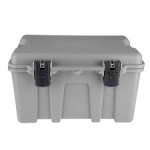
WolfmansBrother
I started off using a bear canister for my food, but last year I purchased a RBW 30 liter barrel and organizers and switched to using that. It simplified my approach quite a bit. I'm able to keep my food and cooking kit in one container. The 30 liter barrel is a good size for me. The majority of my trips don't include portages. If I were to do more trips with portages, I would put the barrel in a harness or a pack. For general gear, I have been using roll-top dry bags. I like the utility of duffle bags, though. I use a ULA duffle as a catch-all for small items, and I also have an Alpine Threadworks duffle that I used for the first time on my last trip. The Alpine Threadworks duffle is lined with waterproof fabric and has a water resistant zipper. It worked well. The bag got quite wet while paddling, but everything inside stayed dry. And it was nice digging for things in a duffle instead of a dry bag. I can see the Watershed duffle bags being very useful as well.
Cookannapurna
- Jun 7, 2023
I’m still “old school” and continue to use my Duluth and Frost River packs with plastic liners. They portage well, especially with a canoe overhead, and in 35 years (even with exclusive down sleeping bags), no wet gear. I do have a separate nylon dry bag that I put my sleeping bag in now. I just haven found anything better that works for me.
- Jun 8, 2023
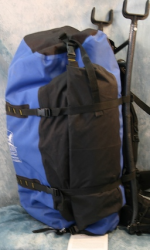
yknpdlr said: Knupac and gear secured in Hornbeck under cover View attachment 135927 Click to expand...
I find the barrels (and barrel organizing bags) indispensable on larger group trips where the quantities of food are significant. They're easy and straightforward to access and reseal for any member of the group, even newbies, and they're bombproof if someone dumps. For smaller groups and/or solo paddling, they're pretty cumbersome. I generally don't trust waterproof zippers because I've seen many fail due to overstuffing (fishpond and Yeti panga duffles), but that Watershed Mississippi bag looks pretty nice. I like how the pattern shape allows for extra material around the zipper, ostensibly to help isolate the zipper from the tension of an overstuffed bag.
Pseudonym said: I find the barrels (and barrel organizing bags) indispensable on larger group trips where the quantities of food are significant. They're easy and straightforward to access and reseal for any member of the group, even newbies, and they're bombproof if someone dumps. For smaller groups and/or solo paddling, they're pretty cumbersome. I generally don't trust waterproof zippers because I've seen many fail due to overstuffing (fishpond and Yeti panga duffles), but that Watershed Mississippi bag looks pretty nice. I like how the pattern shape allows for extra material around the zipper, ostensibly to help isolate the zipper from the tension of an overstuffed bag. Click to expand...
WolfmansBrother said: Sweet rig. What brand of cover is that? I like how it stretches over the gear in the back. Thanks. Click to expand...
MyKneesHurt
The watersheds are bombproof. I have 2, a 60ish-liter backpack and a smaller 20-ish liter duffel. I only wish for a sturdier, padded hip belt on the backpack. Barrels (and their attendant nice, padded, burly carrying systems) seem like a nice easy way to go, but I would be hard pressed to spend another X dollars to find out when what I've got works fine.
- Jun 9, 2023
Cargo vans, pickup trucks, and station wagons. They all haul but in different styles. I've owned and driven each and would be hard pressed to choose which I preferred as each was best suited to different tasks. This is my poor analogy for packs, barrels, and duffle bags. Packs I find the most comfortable to carry large or small, but unless you use a clamshell opening style backpack you'll face the same chore of packers everywhere. Diving in from the top opening to search for that all elusive whatever. Packing cubes/organizers help solve this. That's where duffels excel. Full length side opening makes packing/unpacking so easy. Provided the carry straps are sized appropriately the bag can be carried as a backpack. The shoulder strap works as a tump I've found. For hard sided containers the barrels work very well, but only if you need durable waterproof protection for your contents. Harnesses make them suitable for backpacking over portages though I find them (30L and 60L) less comfortable than soft-sided packs. This vs that makes for good comparisons for whatever you're doing, wherever, and whenever. All three choices have their own advantages and disadvantages, which might be why I have some of each category. Our small barrel is ideal for food/kitchen. Organizers keep it tidy inside. Our 115L dry pack is great for gear we only unpack once a day, tent, sleeping bags etc. and is very comfortable to wear fully loaded. The canvas packs just feel right and can't be beat. The sizeable duffel (maybe 50Lish) is for all and sundry we may want access to at any given time. There have been times I've driven the old truck wishing I had my van again, driving my van wishing I had my old pickup, and yes there are times I miss the old wagon. I didn't set out to own packs, duffels and barrels but I'm glad to have the choice. But that doesn't mean you need to park all three in the driveway.
scoutergriz
I switched from bags to barrels decades ago and never looked back. A barrels does far more than just keeping your food dry- it also protects it from being squashed and is virtually rodent proof (use one of those cheap screw-gate carabiners made for keys to make it raccoon proof). My barrels have an excellent harness designed with extra padding down both sides to cradle the barrel and pad your shoulder blades, a fully adjustable suspension system based on internal frame setups (it even has tuggem straps to adjust the load), and both chest and waist straps. My only regret is that the MFR went out of business (Tent City) and I can't buy replacements. the only drawback to barrels is the seal, they can go bad over time and prevent a good seal, but there are many places that now sell replacement seals. Even the volume issue can be a plus- as the qty of food goes down, the contents of the kitchen pack slowly takes it's place. by the end of the trip it's carrying the food, all the kitchen gear (minus the stove and fuel), and other gear that's rarely used, I've even placed my sleeping bag in on occasion in really crappy weather or if a pack fails. Plus an upside-down barrel makes an excellent bar or card table....
- Jun 27, 2023
Hey everyone . I have an unusual question. I am from Europe - Poland. I want to buy a barrel but it makes no sense to order from Canada or the US if we have the same ones at home. There is one problem. Ours are identical but no one uses canoes because everyone kayaks here. Few people have canoes. Our barrels are used to store food and hazardous materials. These barrels are visually the same as yours. These barrels have a yellow vent piece. The manufacturers do not test them to be waterproof when the barrel falls into the water. They can't promise me. Do your barrels also have this yellow vent? Help!!!
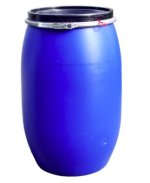
Similar threads
- Mar 4, 2024
- Photography and Videos
- SouthernKevlar
- Apr 1, 2024
- May 2, 2023
- General Discussion and Advice
- Jul 21, 2023
- American Trip Reports
- Idiot Savant
- Jan 10, 2022
- Miscellaneous Gear
- PaddleWays App
Suggestions
More Products »
NINJA PRO: Class V comfort, Type V safety.
Kayak & paddling life jackets.
The best life jacket is the one you’ll wear. From low profile to high float, front zip to side entry, we offer a variety of PFD styles to fit a range of body types and boating needs.

NRS Crew Youth PFD
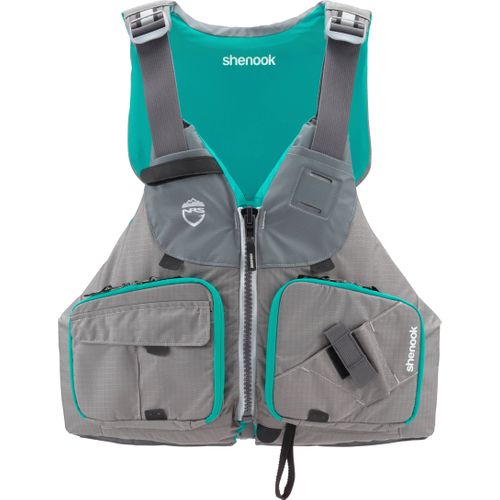
NRS Women's Shenook Fishing PFD
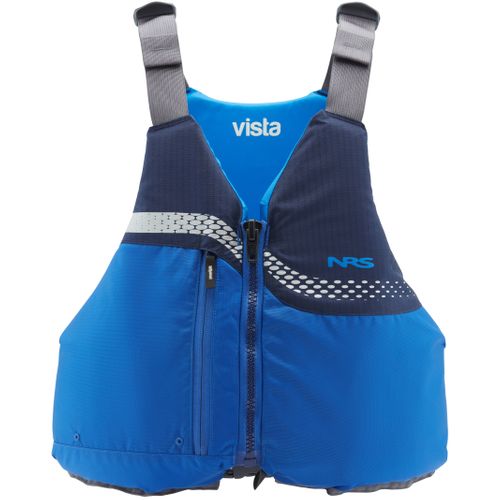
NRS Vista PFD
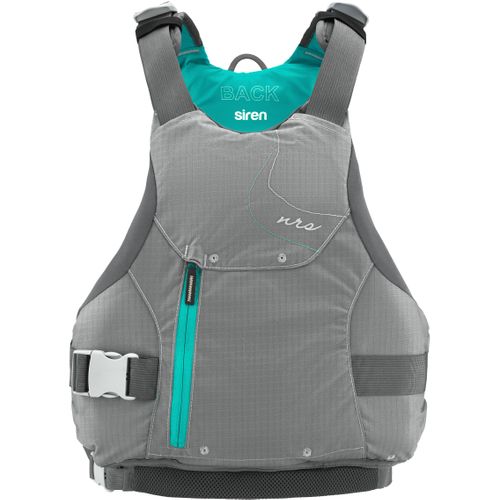
NRS Women's Siren PFD
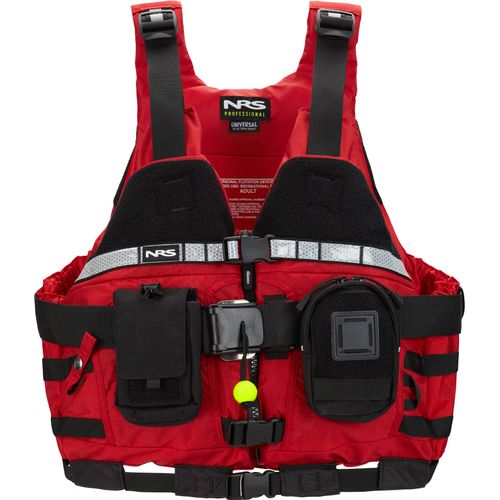
NRS Rapid Rescuer PFD
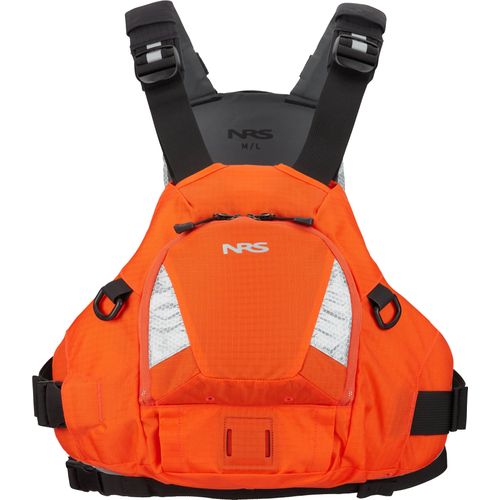
NRS Ninja OS PFD
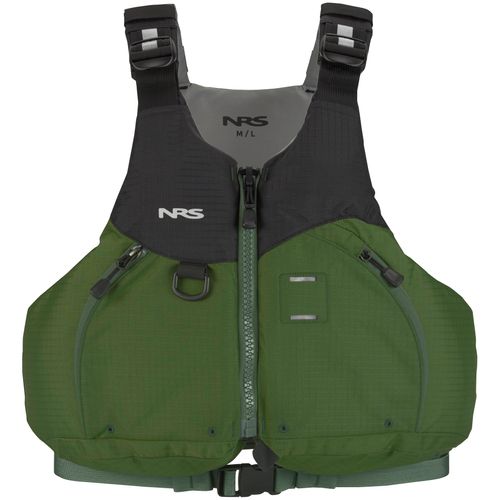
NRS Ambient PFD
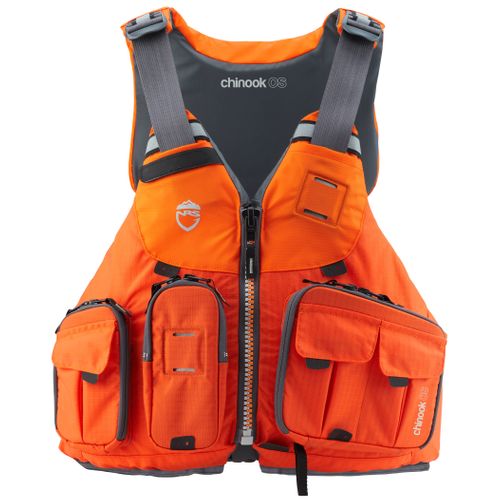
NRS Chinook OS Fishing PFD
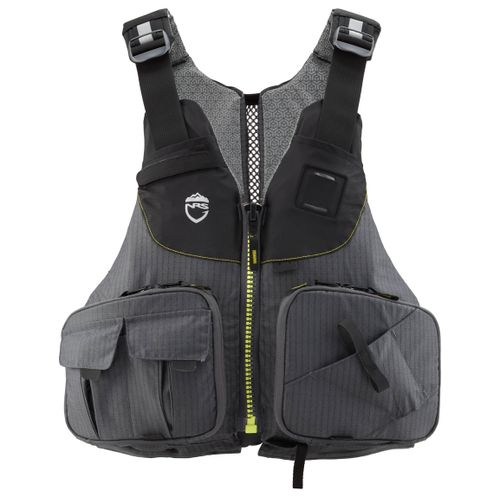
NRS Raku Fishing PFD
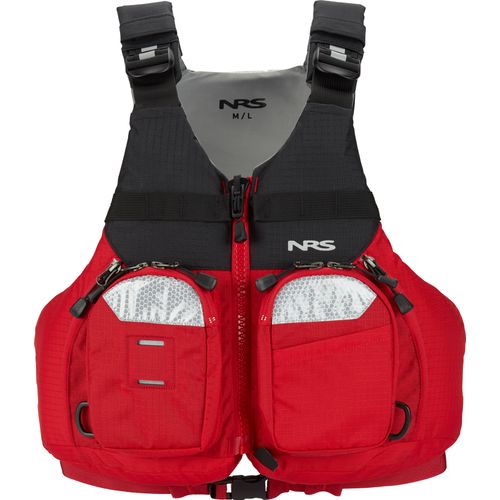
NRS Odyssey PFD
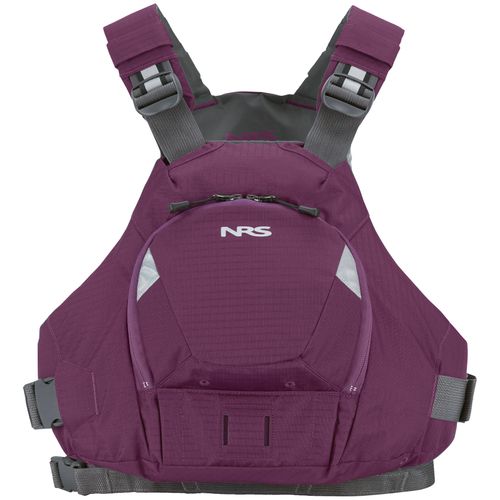
NRS Ninja PFD
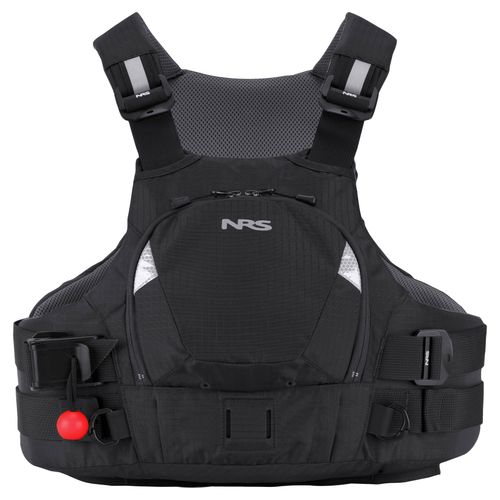
NRS Vector PFD
Shop by Activity
Paddling access for all.
Water is for everyone. Everyone should be able to access and enjoy it. The PaddleWays app is your all-in-one digital tool for discovering, planning and navigating better paddling adventures. It provides detailed maps, real-time conditions, and more than 48,000 points of interest, for free.
Used Gear. New Adventures.
Buying used equipment and apparel from NRS is a great way to outfit yourself on a budget. Grab these used deals before they’re gone, and start planning your next adventure.

Cataract KBO 2-Piece Oar Shaft
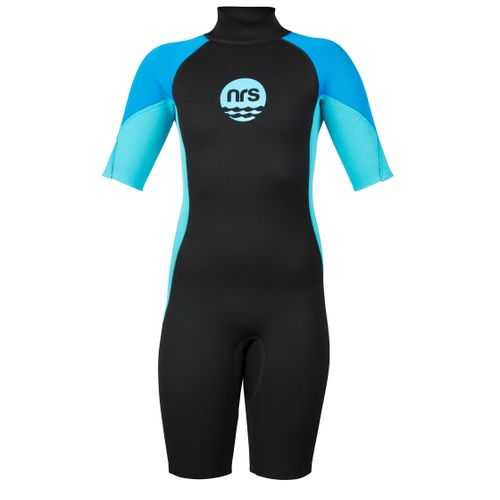
NRS Kid's Shorty Wetsuit

NRS Men's HydroSkin 0.5 Long-Sleeve Shirt
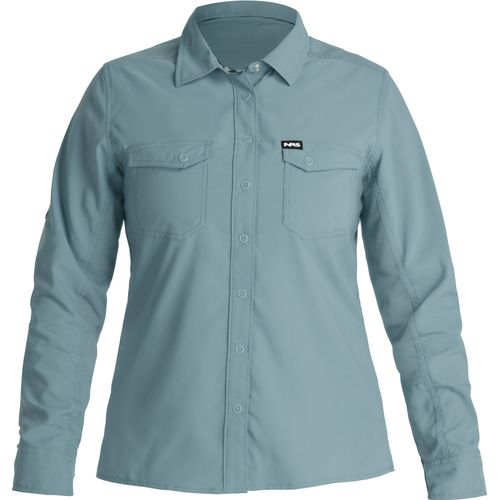
NRS Women's Long-Sleeve Guide Shirt
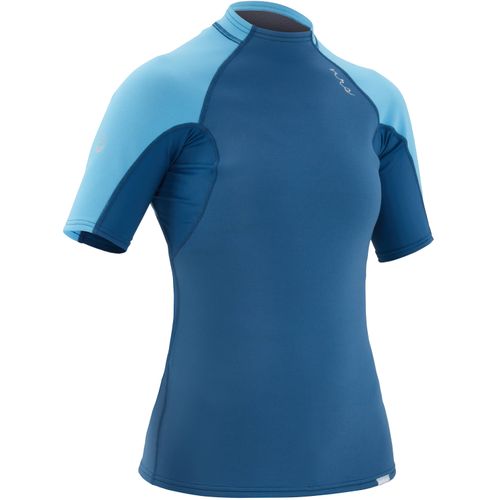
NRS Women's HydroSkin 0.5 Short-Sleeve Shirt
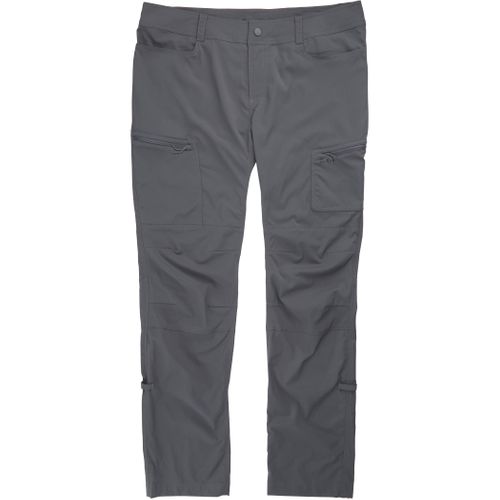
NRS Women's Lolo Pant
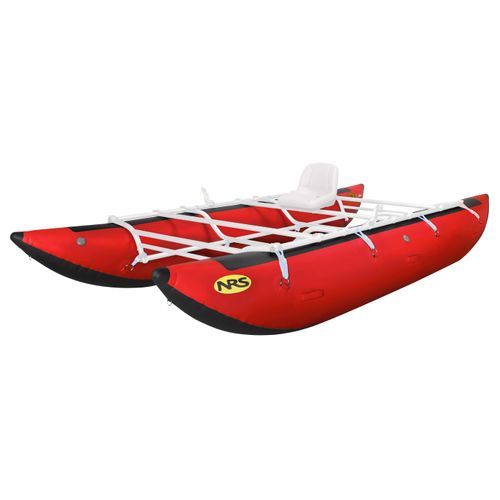
NRS 16' River Cataraft
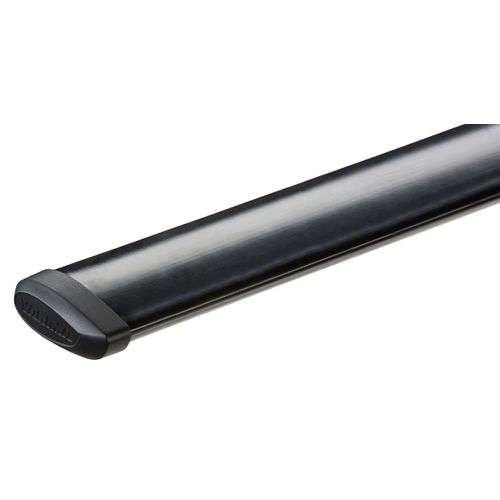
Yakima CoreBar Crossbars

STAR Outlaw Raft Thwarts
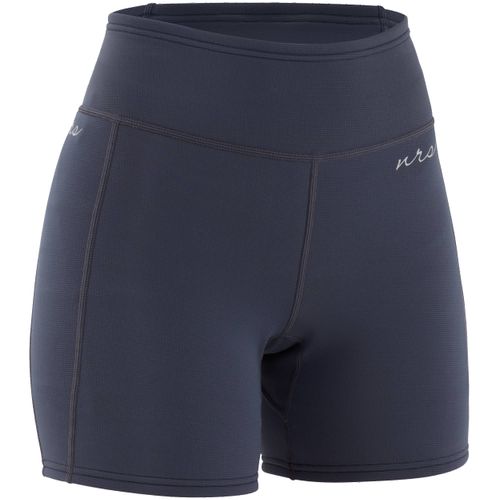
NRS Women's HydroSkin 0.5 Short

NRS Women's HydroSkin 1.0 Shirt
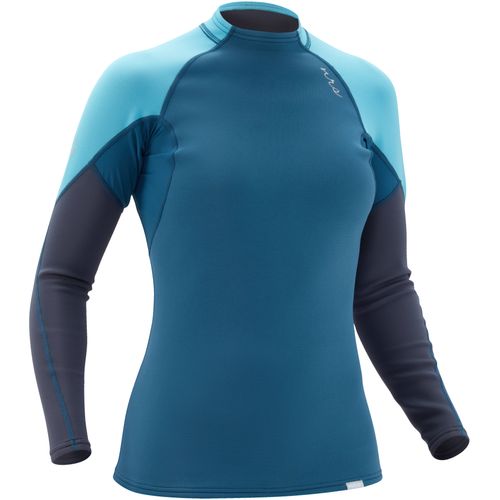
NRS Women's HydroSkin 0.5 Long-Sleeve Shirt
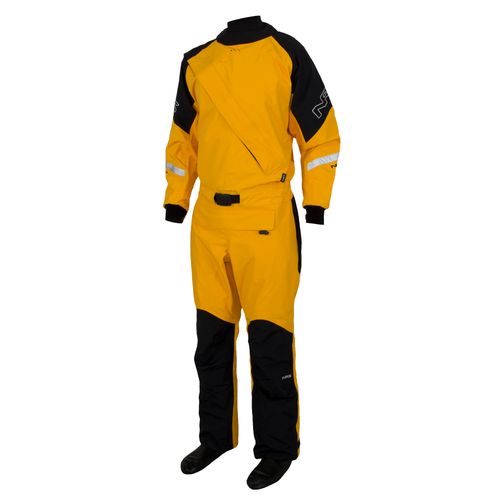
NRS Extreme Dry Suit
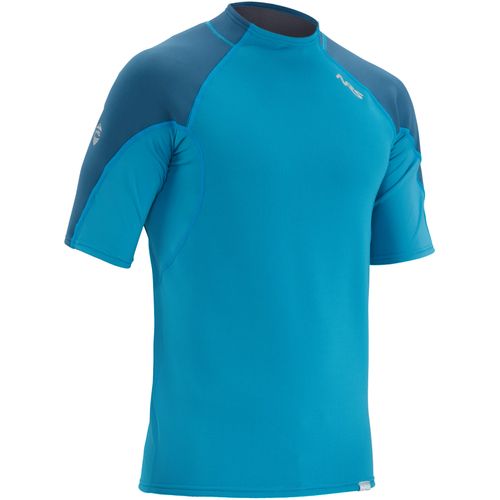
NRS Men's HydroSkin 0.5 Short-Sleeve Shirt
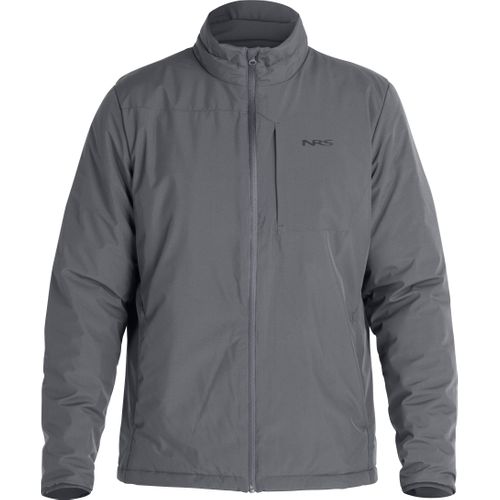
NRS Men's Sawtooth Jacket
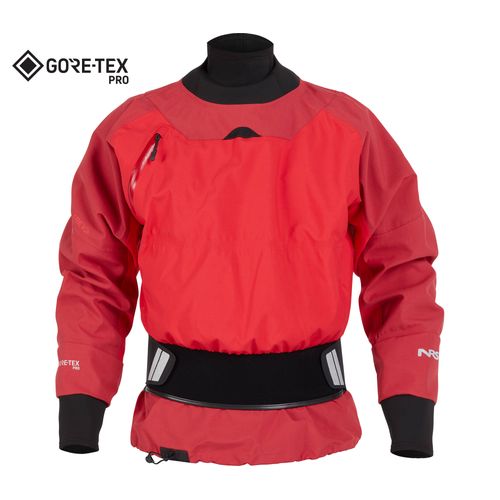
NRS Men's Rev GORE-TEX Pro Dry Top

NRS Women's Nomad GORE-TEX Pro Semi-Dry Suit
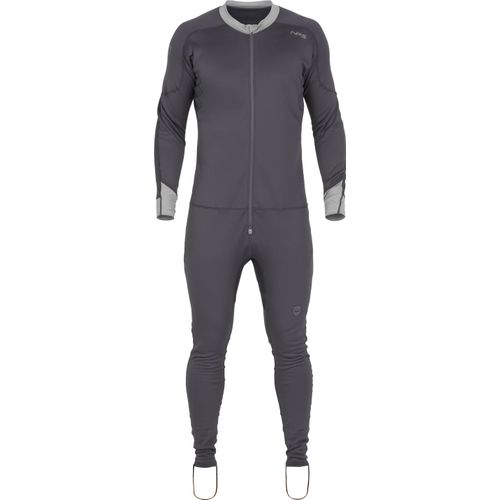
NRS Men's Expedition Weight Union Suit
media stream

Sisters of the Sacred River: The Trailblazing Ganga Girls » Naina Adhikari returns for year two of the Ganga Girls with a new crew and a new challenge: India’s first all-female ACA Raft Guide training.

Returning to the Lowers on the Rio Grande » Having ditched the dirtbag lifestyle for a career, Austin Alvarado yearned to return to the rugged landscape of the Lowers on the Rio Grande.

Checklist » From planning to packing, logistics to stoke, Checklist reminds kayakers that planning a kayaking trip is easier than you think.

Ode to Lil’ Hirk » Ten years and countless adventures later, Jasmine Wilhelm applauds the lessons and labors of her first raft, Lil’ Hirk, a $700 Costco buy.

Urban Access, Wild Rivers » Jonas Seiler shares the story of the Salmon Whitewater Park and reflects on how easy whitewater access can benefit any river community.

Cinque Terre » Three paddlers hop a train to Genova hoping to sea kayak 100km of coastline and explore the five fishing villages that comprise Cinque Terre.

Darby McAdams and the Evolution of Passion » Kayaking took Darby McAdams from Missoula to Africa. But through paddling, another passion emerged: sharing stories via film.

Kids that Groove: Wins from a Rafting Mom » When parenting defeat is a constant, river-lover Maggie Neal Doherty takes pride in her biggest parenting win: kids that love the groover.

Life Downstream » Life Downstream offers a powerful look at the intersection of recreation and livelihood and the reminder that to truly know a rive r requires questions most paddlers never think to ask.
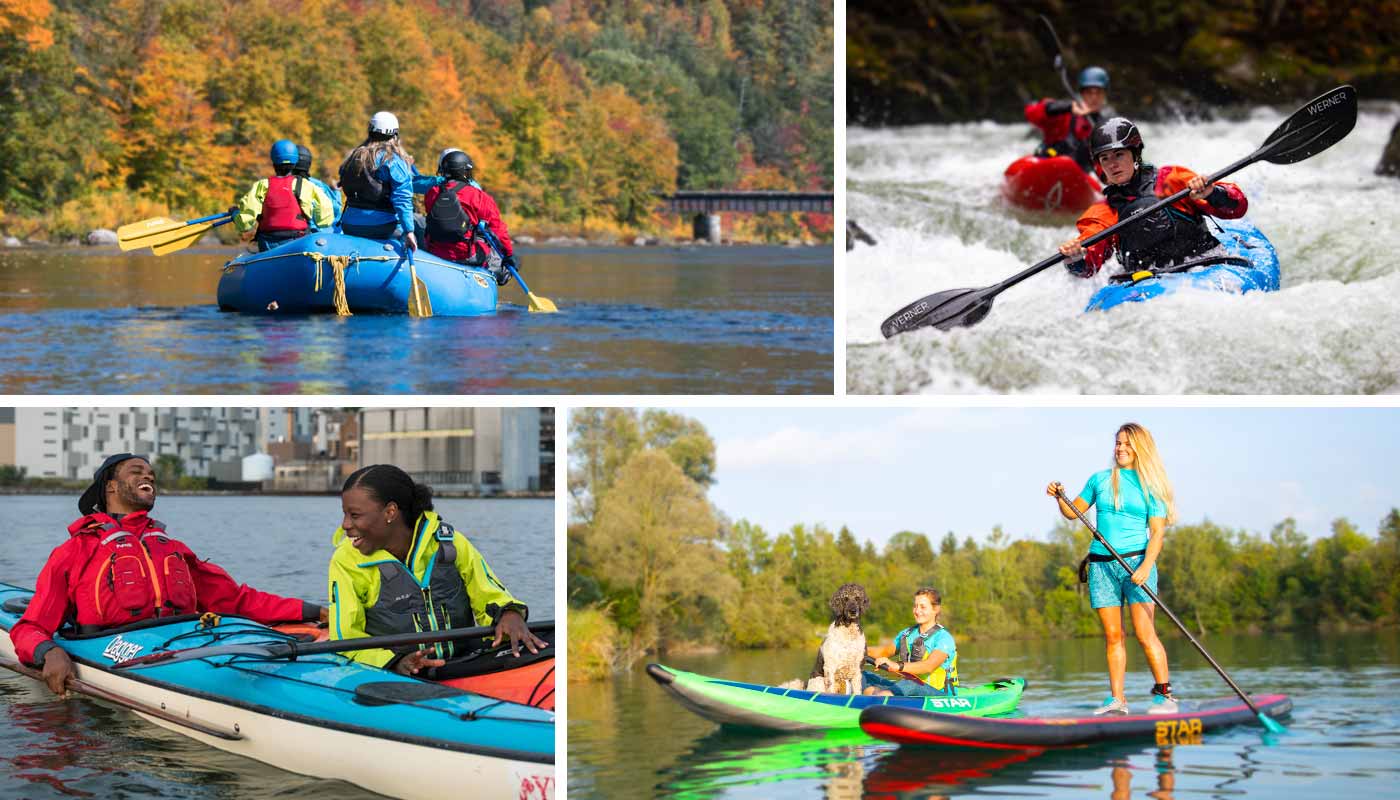
About NRS: Northwest River Supplies
In 1972, with only $2,000 in his personal savings, Bill Parks started Northwest River Supplies with one mission: to help others raft. 42 years later, Bill sold NRS to its employees. Today, the 100% employee-owned business strives to continue Bill’s legacy helping people pursue passions on the water.
At our Moscow, Idaho headquarters you’ll find passionate water-lovers just like you, from rafters to whitewater kayakers, sea kayakers to stand up paddlers, kayak anglers to fly fishermen. Our lives, and livelihoods, are drawn to water.
Stay up to date on new arrivals, email exclusives, sales and more.
By providing this information, you are opting to receive email communications from nrs.com and agreeing that you have read our privacy & cookie policies.
877.677.4327
Give us a call.
Send an Email
Drop us a line anytime.
Find a Dealer
Locate our retail partners.
Learn Center
How-to articles, videos and more.
Flagship Store
Showcasing the best of NRS in Moscow, ID.
Let them pick exactly what they want.
- Duct Tape Diaries Blog
- Discount Programs
- International
- NRS Pro Deals
Customer Service
- Free Shipping*
- Rock Solid Guarantee
- Return Instructions
- Warranty Registration
- Notice at Collection
- Terms & Conditions
- Privacy & Security
- Cookie Policy
- Sun Protection
- Base Layers
- Jackets & Hoodies
- Splash Wear
- Life Jackets
- Safety Equipment
- Cleaning & Maintenance
- Apparel & Gasket Repair
- Warranty Info
- Logo T-Shirts
- Whitewater Kayaking
- Kayak Touring
- Stand-Up Paddleboarding
- Dry Duffels
- Map & Electronic Cases
- Yakima Racks
- Locks & Security
- Foam Rack Kits
- Whitewater Paddles
- Touring Paddles
- SUP Paddles
- Raft Paddles
- Canoe Paddles
- Paddle Accessories
- Rescue PFDs
- Fishing PFDs
- Low-Profile PFDs
- Women’s PFDs
- Kids’ PFDs
- Accessories
- Knives & Tools
- Rope & Webbing
- Carabiners & Rescue Hardware
- Touring Safety & Accessories
- Rescue Kits
- Medical Kits
- Safety Accessories
- Chairs & Tables
- Hammocks & Shelters
- Sleeping Pads
- Stoves & Firepans
- Camp Kitchen
- Purest Duffels & Bags
- Ground Mats
- Toilet & Waste Systems
- Water Filters
- Toys & Fun
- Lights & Headlamps
- Audio & Accessories
- Waterproof Cases
- Expedition Series
- Otter Series
- Otter Livery Series
- Slipstream Fishing Series
- Approach Fishing Series
- Outlaw Series
- Select Series
- Starlite Series
- NRS Catarafts
- STAR Catarafts
- AIRE Catarafts
- Cataraft Accessories
- Tributary IKs
- IK Accessories
- Raft Frames & Parts
- Oars & Accessories
- Outfitting & Accessories
- Dry Bags & Cases
- Inflatable SUP Boards
- SUP Accessories
- Fishing Rafts
- Fishing Raft Frames & Parts
- Personal Fishing Inflatables
- Fishing Outerwear
- Fishing Apparel
- Kayak Outfitting
- Roof Racks & Transport
- NRS Apparel
- Chaco Footwear
- Crazy Creek
- STAR Inflatables
- Used Apparel
- Used Inflatables

FIND IT, PLAN IT, PADDLE IT
Sign up to receive tripping tips, promotions, and news!
Translation missing: en.general.currency.dropdown_label
- Create account

Customer Reviews
Superior padding and an easily adjustable harness make the Ostrom barrel harness the clear choice. I had my new harness out on 3 trips this season. Everyone had a chance to carry a heavily loaded 60 litre barrel over the course of these trips and we all agreed the harness was comfortable , well padded, and held the load securely close to the body. The harness was easily adjusted to comfortably fit each paddler in turn, male or female, big or small. This is a well crafted product that is built to last and keep you as comfortable as possible while hauling everyone’s food across the portage. If you’re using a barrel on a trip you need a well built comfortable harness and this is it. A solid product that does its job well. There have been some slightly cheaper harnesses on the market that lack the custom fit and comfort of the Ostrom harness and I’ve been on lots of trips where they have been in use by other paddlers. If price alone dictates your purchase of a slightly cheaper barrel harness you will regret it on the first long portage and probably even on the very first portage regardless of its length. Ultimately the purchase of a barrel harness is about comfort and the Ostrom harness is simply the best in that regard.
I replaced my much loved, well used, falling apart barrel harnesses with two Voyageur Barrel Harnesses in 2021. They have been used and abused this summer and have held up very well. They are easily adjustable for the size and shape of the person carrying the barrel and they are stable and comfortable over long hauls with heavy weight. The multiple grip-points are good for stowing and lifting. Easy access to the barrel lid. I recommend these harnesses.
Flexible, Durable and Comfortable are not words I have used with other harness products. The Ostrom Voyageur is miles ahead in all of these categories. Regardless of the load or barrel size, the Voyageur harness adjustability and comfort will reduce effort on even the most challenging portages. This harness is built to last and Load Adjuster is a piece of magic frankly. The Voyageur is unquestionably, the Best Barrel Harness on the market.
You may also like

Paddling the Wolf River
There are many ways to experience the Wolf River, but paddling in a canoe, kayak, or stand-up paddle board arguably provides the most immersive experience and the greatest connection with nature. Approximately 75 miles of the Wolf River is open for paddle craft. Learn more about paddling on the Wolf River in this section and refer to the events calendar for upcoming paddling trips. We nearly always have a first Saturday paddle trip, and we would love for you to join us!

Activity Calendar

Discover the Greenway 5K+

The Endangered Whorled Sunflower and Conserving Native Plants

Family Fun Paddle on the Wolf River

First Saturday Paddle - July

First Saturday Paddle - August

Greenway Soiree

First Saturday Paddle -Germantown Pkwy to Kennedy Park
Frog Chorus Walk

Paddle the Greenway

Mother’s Day Paddle on the Wolf River

May First Saturday Paddle - Lost Swamp

Drink a Beer Save a River - May

City Nature Challenge: Bioblitz at Epping Way

Earth Day on the Wolf River Greenway

Landfills, Waste, and Recycling

First Saturday Paddle April, Ghost Section

River Paddling FAQs
- Blues City Kayaks | 901.762.1133 | [email protected]
- Ghost River Rentals | 901.485.1220 | [email protected]
- Kayak Memphis Tours | 901.482.2942 | [email protected]
- Wolf River Canoe Tr ips | 901.877.3958
- Ghost River Rentals provides shuttle services along the Wolf River. Contact Mark Babb or Don Hailey at 901.485.1220, or visit their website: ghostriverrentals.com
- Wolf River Canoe Trips provides shuttle service in Fayette County. Contact Sarah or John Wilburn at 901.877.3958 for more info.
- Blues City Kayaks provides tours and rental kayaks in Shelby and Fayette Counties. Visit their website for more info: bluescitykayaks.com
There are 12 boat access points on the Wolf River from Michigan City, MS to the Mississippi River. Explore the interactive map to help find a section right for you. The map highlights each river section and shows all of the boat access sites including a Google Maps link for each.
Interactive Map
Safety on any paddling trip depends on the paddler’s planning and preparation. Before beginning a paddle trip on the Wolf River, please review and carefully consider this important Safety Information .
For a first trip on the Ghost River section of the Wolf, a guide is essential for inexperienced paddlers and very helpful to experienced paddlers. Sections below the Ghost section can be negotiated without a guide, though it is best not to go alone. The Wolf River Conservancy provides experienced volunteer trip leaders on planned monthly paddle trips on the Ghost River and other Wolf River sections, helping to arrange equipment rentals and shuttle services. See our Activity Calendar for upcoming trips.
While the entire Wolf River is a Class I stream (no whitewater), it does have many obstacles and unpredictable currents that often send unprepared paddlers through dense shrubbery and fallen tree branches. Even during its slow flow, the Ghost River section requires use of moderate canoeing/paddling skills to safely negotiate some of its obstacles. The trip is moderately strenuous, and, in the event of a medical emergency, significant difficulties can be encountered in aiding or evacuating a victim. The section between Germantown Pkwy. and Walnut Grove Rd. does not offer many obstacles and is the best section for beginners. During high water conditions (over 8 ft. on the nearest river gauge), any section of the Wolf can be dangerous. Please review our Safety Information .
The Ghost River trip from LaGrange to Bateman Rd. takes about 6 hours, including a short lunch break. This section should never be started later than 7 hours before sunset. The Bateman to Moscow trip takes about 3 hours. Germantown Pkwy. to Walnut Grove Rd. normally can be traveled in about one hour.
For the Ghost River section, fuel up with a high-carbohydrate breakfast before setting off. Take at least one-half gallon of water per person, a lunch (which may have to be eaten in the canoe in high water), sunscreen, life jacket (wear it), Epi-Pen or inhaler for those with severe allergies or asthma, supplies and a mobile phone. Please review all Safety Information .
Remember: In the event of a medical emergency, significant difficulties can be encountered in aiding or evacuating a victim. Don’t take anything in the boat that you can’t afford to lose or get wet. Dress in layers in cool weather so you can adjust for the temperature. Bring a change of clothes and a small towel in a dry-bag or large Ziploc plastic bag.
Yes, as the Wolf River provides them a perfect habitat, and most are harmless water snakes. The venomous cottonmouths, aka water moccasins, rarely bother people who don’t bother them first.
Pinecrest Camp and Retreat Center in La Grange, TN offers camping by reservation only. See more information on camping at Pinecrest at this link.
The only public access overnight camping near the Wolf River is in the Holly Springs National Forest, which is less than a 20-minute drive from the Michigan City boat launch. Please follow rules for dispersed camping on National Forest lands. All other public land in the Wolf River watershed is day-use only.
Short River Hikes
Whether you want to go for pleasant after-work stroll or bike ride, or follow a boardwalk into a wild natural area which preserves some of the mid-south's most beautiful habitat, the wolf river has something to offer.
This list does NOT include the Wolf River Greenway trail itself, but several of the trails below intersect the Greenway - For information and updates on the Wolf River Greenway Project, click here.
John F. Kennedy Park (4575 Raleigh LaGrange Rd.) is the fifth largest park in Memphis at 260 acres. Built in the mid-1990s by the Conservancy and volunteers, this 1.25 mile trail (one way) begins atop a hill at a gravel trailhead parking across from the Alzheimer's Center. Walk down the hill following yellow signs and enter the forest where the trail winds through big trees. The trail becomes a boardwalk for a quarter mile through a high quality bottomland hardwood forest. The trail then zigzags across the Wolf River Greenway and along the banks of the Wolf River. You can make it a loop trail by walking the park roads back to the gravel trailhead parking.
For a map of John F. Kennedy Park, click here.
Started by an boy scout troop in 2019 and finished to the beach by volunteers on MLK Jr. Day in 2020, this unpaved hiking and mountain biking trail connects to Phase 9 of the Wolf River Greenway at 2630 Epping Way Drive, Memphis, TN. The 2-5 ft wide path squeezes between the river and the Conservancy's 20-acre lake for over 0.5-mile to a large beach in a major bend of the river. The total out-and-back distance from the parking area at Epping Way cul-de-sac to the beach and back is roughly 1.7 miles. Wolf River Conservancy is planning to extend this trail all the way around the lake to connect back with the Greenway for a nice loop trail.
Designated in 1988 by Wolf River Conservancy and local partners, Lucius Burch SNA is located in Shelby Farms along the Wolf River and is accessed from: Walnut Grove Road near the bridge over the river, near Germantown Road and Walnut Bend at the paved parking area or at the gravel parking area at the Raptor Center. The northern section can also be accessed on foot or bike via the Shelby Farms Greenline, Unpaved hiking and biking trails afford good river views. Old channelized streams and exotic invasive plants, such as privet, illustrate some of the effects of channelization and urbanization. Conversely, pockets of high quality bottomland hardwood forest with a state-listed species are found along the trails as well. For a map, see the trails in the dark green areas in the south and western portions of Shelby Farms Park: click here for rough trail map.
The Germantown Greenway is a 4-mile paved trail in the Wolf River Nature Area, which can be accessed from Wolf River Blvd. between Kirby and Riverdale, between Riverdale and Germantown Pkwy., or from Germantown Pkwy. at the Chik-Fil-A parking lot. The trail includes interpretive signs, benches, butterfly gardens, and wetlands. Thanks to the efforts of WRC and community leaders, the Germantown Greenway now connects to the Wolf River Greenway. One day there will be a continuous trail extending 15 miles west to the Mississippi River and 15 miles east to Collierville-Arlington Rd.
For a map of the Germantown Greenway and surrounding area, please click here.
The trailhead for this short unpaved trail is located on Kimbrough Rd just south of Wolf River Blvd. Look for the kiosk next to a gravel parking lot. Recently, TDEC Division of Natural Areas removed exotic invasive privet to restore the habitat. For a complete description and a map, click here.
Overton Park is an amazing ecological refuge within the heart of Memphis and lies within the Wolf River watershed. Enjoy old growth hardwood forest on the many paved and unpaved trails within the park and natural area. Overton Park Conservancy stewards and manages this park in partnership with city of Memphis. DIRECTIONS For more information on the park and Overton Park Conservancy, visit overtonpark.org.
Peterson Lake Nature Center encompasses a 0.7 mile long boardwalk from Peterson Lake, a natural oxbow, through forest and wetlands to the banks of the Wolf River. At the end of the boardwalk, you can see part of the Wolf River restoration project, i.e., one of the rip-rap weirs created by the U.S. Corps of Engineers to stop the degradation of the river caused by channelization. Deer and other wildlife are frequently seen along the boardwalk, and there are abundant cypress, tupelo, and other trees. DIRECTIONS to Johnson Park, follow Bill Morris Pkwy. (385) to Byhalia Rd., go left or north, and stay on Byhalia Rd. which will dead-end at Johnson Park. Keep driving past the play areas and the lake. The road makes a small loop and becomes a parking lot. Look for the Peterson Lake Nature Center sign and the beginning of the boardwalk.
For more information, visit the Collierville Parks website.
A large park north of Collierville contains over 2,000 acres of woods and wetlands along both sides of the Wolf River. The 5-mile crushed limestone trail is open 7 days a week from dawn to dusk and can be accessed at the Collierville-Arlington Rd. bridge where there is a gravel parking lot on the north side of the river. The park can be accessed at its western end from Bethany Rd. Eventually, the trail will extend for 8 miles to Houston-Levee Rd. The farm fields north of the woods are now open for hiking and biking. The map below shows a trail on the farm roads. There are two parking areas off Collierville-Arlington Rd.,one on the north side of the bridge, and one farther north at the main trailhead. On the map, TR-1,2,4,5,6 all represent the tributary weirs. There is no hunting and no ATV (four-wheeler) use allowed. Day-use only. The County sheriff’s deputies have begun checking the parking areas after dark.
Wolf River Wildlife Area Map
A short unpaved trail along the Wolf River leads from the parking lot to a boardwalk through a first-class wetland with tupelo and cypress trees. The entrance to the Clark Preserve is .25 miles north of the Wolf River Café and Rossville Square. Go over the bridge and turn into the parking lot on your right. The Clark Preserve is owned by The Nature Conservancy. For a complete description and a map, click here.
Clark Preserve information from The Nature Conservancy.
The area around the boat ramp was protected by Wolf River Conservancy in 2016 and 2018 and is now part of Ghost River State Natural Area. This boat ramp at Bateman Bridge offers access to the Wolf River. There is no trail, but wading is possible here because the bottom of the river is sandy and the river is usually fairly shallow. Shoes are recommended. Take Hwy 57 east through Moscow and take a right onto Bateman Rd. DIRECTIONS. For a map of the area, click here.
The 0.5-mile Mineral Slough trail and boardwalk traverses a fine stretch of bottomland hardwood swamp characteristic of the Wolf River floodplain. The Ghost River is a section of the Wolf River in which the river seems to disappear, widening into a broad, vegetation-filled swamp. It is a popular destination for paddlers and has been named one of the best wetland canoe trails in the country. DIRECTIONS. To read a complete description and for a map, click here.
This is a beautiful hike to the source of the Wolf River, a large spring-fed pond about .25 miles from the trailhead, in the hills of Benton County, Mississippi. Look for natural springs trickling out of the earth and the unique purple sands along the stairs on the trail. Click here for DIRECTIONS: on Hwy 72 heading east, ff you cross the Tippah County line, you've gone too far. Turn right or south at the small brown sign for Baker's Pond onto Tower Rd., and bear right where the road forks. Look for the Baker’s Pond trailhead parking area on the left. The trail used to connect to Mt. Pleasant Cemetery, but a large tornado destroyed that portion of the forest and has overgrown the trail. Restoration efforts are being made to repair the trail.
Baker's Pond Map
Safety Information
Paddling the Wolf River in a canoe or kayak can be a wonderful experience. The quality of that experience, however, will depend largely on your training, planning, and follow-through.
The Wolf River Conservancy recommends always paddling in groups of two or more, regardless of your skill level or experience. The level of skill you need to paddle the Wolf River depends on your physical condition, prior training and experience, and the paddling conditions of each river section. If in doubt about your skills or how to find appropriate training, or for any other questions, please contact a Wolf River Conservancy Volunteer River Guide, a local outfitter or paddling retailer, or the American Canoe Association, of which the Wolf River Conservancy is an affiliate.
Your trip will be much more enjoyable, comfortable, and certainly safer if you bring along appropriate clothing, gear, and other items, including a change of clothing in the event of a capsize, emergency gear, medications, and a first aid kit. Any river trip involves an element of risk, and it is necessary to be prepared for emergencies. Please read this Safety Information and consider these rules and recommendations carefully in planning your trip.
Participants in Wolf River Conservancy float trips will be required to wear an approved Personal Flotation Device (PFD) while on the water. These are provided by the outfitters along with boat and paddle for those renting. Paddlers arranging their own trips are required by state law to have an approved Personal Flotation Device (PFD, or life jacket) for each person on board; children 12 years old or younger are required to wear a PFD at all times while on the water. Click here for more information on Personal Flotation Devices .
The Conservancy recommends that everyone wear a U.S. Coast Guard Approved life jacket (PFD) while onboard any kind of human-powered, natural-powered or motorized boat, on any body of water, at all times. Remember, a life jacket (PFD) must be properly fitted and sized to the person wearing it and must be worn correctly to work!
Although the Wolf is rated as a class one river (no whitewater), conditions can rapidly change. It is imperative that paddlers realistically evaluate their experience and abilities in regard to an anticipated trip, especially if considering bringing children along. If in doubt, ask a Conservancy River Guide. Paddlers of any skill level should check both weather conditions and water level prior to departure.
No paddler, regardless of experience level, should paddle alone. Beginners are advised to seek out some type of formal training before paddling; afterwards, paddle only with highly experienced guides for the first few trips. The Conservancy membership trips are well-suited for beginners, depending on the river section, because they are led by experienced paddlers familiar with the route who provide limited basic instruction at the beginning of the trip. Please do not paddle with children as passengers unless you are an experienced paddler yourself.
Always check weather conditions and water level before your trip. Do not attempt a trip if the forecast indicates severe weather such as a thunderstorm. Do not attempt a trip during flood conditions. For weather conditions and forecast, use this link . The Conservancy recommends not paddling any section of the Wolf River if the USGS River Level Gauge closest to the section being paddled reads 8 feet or above for most paddlers. Use the following links to check water levels:
Gauge at LaGrange
Gauge at Rossville
Gauge at Collierville
Gauge at Germantown Pkwy
Gauge at Hollywood St
Gauge at Mississippi River
Our Interactive Map provides a description for each of the accessible sections of the Wolf River, helping paddlers to choose the section that best meets their needs.
Always bring plenty of drinking water, regardless of the season. We recommend a half gallon or more per person for all-day trips.
Always bring necessary allergy medications and emergency supplies such as a first aid kit, prescription medications you might need, a change of clothes to carry with you in the boat, flashlight, whistle, compass, rain gear, cell phone, sunscreen, insect repellent, snacks, etc., and a waterproof “dry” bag to hold these items. Local outfitters are a good source for other suggestions as well as ready-made kits and supplies; these can also be found online.
Have a float plan. Always tell someone where you are going and when you expect to return.
Always wear clothes and shoes suitable for conditions. Denim and other types of cotton clothing are not recommended to be worn in or around water or while boating at any time of the year. Fast-drying synthetic polyester materials, which can be layered for cold weather conditions, are preferred. Shoes which fit securely are recommended. Avoid crocs and flip flops can easily slip off the foot when wet, and waders or rubber boots which could fill with water. Water shoes or some form aquatic “bootie” are highly recommended. Protect your feet at all times.
Cold weather clothing suggestions: Neoprene booties, synthetic (e.g., fleece) or wool fabrics worn in layers, a hat, gloves. Avoid cotton clothing. During cold weather, it is essential to bring a full set of rain gear and at least one change of clothes in a dry bag in the boat with you to prevent possible hypothermia.
Warm weather clothing suggestions: Neoprene booties or water shoes which fit securely, layered clothing, including synthetic fabrics, and a hat with a brim or visor. A change of clothes in a dry bag is recommended. Be sure to bring sunscreen and insect repellent as well.
Other items to consider: Food and snacks, binoculars, camera, field guides, cell phone, sunscreen, insect repellent. Again, if you want to keep it dry, store it in a waterproof bag.
This is dangerous if a boat capsizes and not advised for the Wolf River.
Familiarity with basic boating safety rules is strongly advised, especially for those arranging their own trips. More information can be found on the TWRA Boating website and TWRA Paddlesports Laws .
Wolf River Canoe Trips
General info.
- Wikipedia: Wolf River
- Ghost River State Natural Area
- Wolf River Wildlife Management Area
- Wolf River Conservancy
- Moscow Tourism
- Moscow Hotels
- Moscow Bed and Breakfast
- Moscow Vacation Rentals
- Flights to Moscow
- TAP & BARREL PUB
- Things to Do in Moscow
- Moscow Travel Forum
- Moscow Photos
- All Moscow Hotels
- Moscow Hotel Deals
- Things to Do
- Restaurants
- Vacation Rentals
- Travel Stories
- Rental Cars
- Add a Place
- Travel Forum
- Travelers' Choice
- Help Center
Great Irish atmosphere, great music... - TAP & BARREL PUB
- Europe
- Russia
- Central Russia
- Moscow
- Moscow Restaurants
“Great Irish atmosphere, great music, great food!” Review of TAP & BARREL PUB

This pub is located in the city center of Moscow so the prices are typical for that area but I must admit that it does worth it! The pub has an Irish pub decoration with great Irish atmosphere. They offer an English menu although the staff does not really speak English so please take it into consideration. They have great music and many flat screen TV's to watch sports, they offer many kinds of beer including all the well know Irish brands. The food is very tasty and whatever we choose was just delicious. I am warmly recommending you to visit this pub and enjoy a good beer and a meal while listening to good music and watch sports. Just a small tip that during Sundays the pub closes are midnight which is too bad for such a nice place.
- Excellent 146
- Very good 70
- Terrible 25
- All languages
- English (46)
- Russian (231)
- German (2)
- More languages
- English (46)
- Russian (231)
- Italian (2)
- Japanese (2)
- Spanish (2)
- Portuguese (1)
35 - 39 of 286 reviews
The best service I have seen so far, food was decent. Overall look very nice! Worth visiting again. Would recommend.
it is the best pub i have ever been !! and great slogan for a pub ... Life is too short to drink cheap beer !! ;)
We stumbled across this bar on our first night wandering around Moscow trying to get our bearings. Everyone was really friendly and made us so welcome. So much so we returned there the following night to celebrate my 40th birthday which they helped us do in style!! Seating inside and outside, great menu and the food was excellent. If you're in Moscow go there - you won't be disappointed!!
Decor is luxurious Victorian with ornate tiles mixed with wooden floors, mahogany bar with inviting bar stools that makes the experience as original as it can be, would say it's like a good auld Dublin pub, just missing a dog. This is no ordinary tourist themed pub but the genuine article with great beers, good kitchen and music (even traditional). Live music also on weekends. As an Irish man living in Moscow I go there regularly and I am not usually the pub type with so much great gastronomy in the city but this place is really good.
Travelers who viewed TAP & BARREL PUB also viewed
Been to tap & barrel pub share your experiences, owners: what's your side of the story.
Own or manage this property? Claim your listing for free to respond to reviews, update your profile and much more.
Browse nearby
Can't travel far? These 3 Florida destinations will make you feel like you're elsewhere
Yearning for an extravagant vacation, but traveling overseas or even getting on an airplane isn’t possible right now?
Not to worry.
There are several spots right here in Florida that will mentally make you feel like you’re far from the Sunshine State. From over-water cabanas to equestrian adventures and rodeo roundups, there are some surprising getaways just a short drive away.
So even if you can’t take the far-away vacation, check out one of these options to quench your wanderlust.
Evermore Orlando Resort: a (mental) Caribbean getaway
This picturesque resort is just a few miles from Walt Disney World, but once you’re on property, you will think you’re in a Caribbean paradise.
The heart of the resort is Evermore Bay, 20-acres of tropical, sandy beach paradis e. At the center is a sparkling blue, eight-acre manmade lagoon.
Enjoy the water by paddleboard, kayak or from your private cabana complete with over-the-water hammock. If you’re feeling adventurous you can enter the lagoon via a rope swing or 8-foot jump.
The only signs you’re minutes from the theme park capital of the world are the Walt Disney World fireworks visible each night.
Once you’ve exhausted yourself at the lagoon, retreat to your own private accommodations. Options range from two- to four-bedroom villas, to flats, which are essentially four-bedroom, four-bathroom apartments complete with full kitchens and bunk rooms.
The showstoppers are the resort’s vacation homes. They range from five to 11 bedrooms and sleep as many as 32 people.
If a more traditional hotel is more your speed, the property includes a Conrad Resort, which has a full spa and top-notch dining options. Guests of the Conrad Resort, a Hilton property, can use the Evermore facilities.
Evermore Orlando Resort , 1590 Evermore Way, Orlando, 407-239-4700, www.evermoreresort.com
Equestrian Hotel in Ocala: a page out of the English countryside
This sprawling resort, not too far off Interstate 75, is a picturesque destination straight out of the English countryside.
There are 400 acres of stables and horse arenas that host equestrian events throughout the year. While the area is a big draw for those in the equestrian world, it’s a fun getaway for those looking for an elegant escape.
The Equestrian Hotel, a AAA Four Diamond Resort, welcomes guests with a grand lobby adorned with marble floors, 20-foot ceilings, crystal chandeliers and massive fireplaces. Stately furniture decorated various sitting areas flanked by enormous amusing portraits of dogs.
This is a resort where tank tops and cutoff shorts seem out of place. The choice attire is more collared shirts and riding boots.
Guests staying at the resort, which opened in 2021, have the option to book a room that overlooks one of the main arenas. You can watch horse competitions from the comfort of your own room.
A second hotel opened on the property earlier this year. The Riding Academy Hotel offers nearly 400 rooms with touches of Ralph Lauren throughout the hotel.
The Equestrian Hotel, 8510 NW 17th Lane, Ocala, 352-414-7900, www.equestrianhotel.com
Westgate River Ranch Resort & Rodeo: a slice out of the Wild West
Smack-dab in the middle of the state is this Florida dude ranch, recently named the best glamping spot in the country by USA Today 10Best .
Situated on 1,700 acres and surrounded by 400,000 acres of state and federally protected wetlands, this retreat is literally in the middle of nowhere.
The resort is home to one of the longest-running rodeos in Florida.
Started in the late 1960s, the rodeo features cowboys participating in a variety of events including bull riding, barrel racing and trick riding. Each week the 1,200-seat rodeo arena is packed with spectators dressed head to toe in Western attire, from cowboy boots to big, shiny belt buckles.
Other activities on site include fishing, horseback riding and air boat rides.
Guests can camp in everything from traditional tents to a hotel-style lodge to cabins to full-on glamping mode. There are 651-square-foot teepees that include a king bed, a sleeper sofa, a full bathroom, microwave, refrigerator, of course air conditioning and even a fireplace.
Westgate River Ranch Resort & Rodeo , 3200 River Ranch Blvd., River Ranch, 863-692-1321, www.westgateresorts.com
Spitzer is a trending reporter. She can be reached at [email protected]
Reminder: City Commission meets at 2pm today
Find City Commission meeting agendas, schedules, presentations, and more:
City Commission Resources
- Make a payment
- English (United States) Select this as your preferred language
- Neighborhood Business Guide
- Look Up Trash and Recycling Pickup Dates
- Neighborhood Living Guide
- City Owned Available Properties
- Request Trash, Recycling, or Yard Waste Services
- Start Water Service
- File a Principal Residence Exemption (PRE) Affidavit
- Property Lookup - BS&A Online
- All Services
- Water/Sewer Bill Payments
- Waste Service Payments
- Property Tax Payments
- Parking Ticket Payments
- Community Development Loan Payments
- Current Election Information
- Voter Registration
- Absentee Voting
- Early Voting
- Election Workers
- Precinct Maps and Polling Locations
- Election Data
- Voter Turnout and Election Results
- Income Tax Forms
- Income Tax Payments
- Income Tax Guide for Individuals
- Income Tax Department
- Report an Abandoned Vehicle on the Street
- Report a Pothole
- Report a Malfunctioning Streetlight
- Report Trash in the Street or an Alley
- Report a Missing or Damaged Street Sign
- View All Issues
- Downtown Mobility and Parking Guide
- DASH the Downtown Area Shuttle
- GR Connected
- Road Construction Projects
- File and Pay Withholding - Municonnect
- Income Tax Guide for Withholders
- Planning and Permits for Commercial Building Projects
- Planning and Permits for Commercial Renovation Projects
- City Planning Commission
- Apply for a Downtown Vendor Business License
- Apply for a Going Out of Business License
- Apply for Home Occupation Licenses
- Apply for a Hotel or Motel License
- Apply for an Indoor Events License
- Apply for a Liquor License
- Apply for a Mobile Food Vendor Truck, Trailer, or Concession License
- Apply for a Mobile Vending Cart License
- Apply for a Noise Permit
- Apply for a Parking Facility License
- Apply for a Pawnbroker License
- Apply for a Pedicab Company License
- Apply for a Second Hand License
- Apply for a Snowplow Business License
- Apply for a Solid Waste Hauler License
- Apply for a Sound Truck License
- Apply for a Transient Merchant License
- Apply for Valet Parking Licenses
- Starting and Running a Business in Grand Rapids
- Invoices for City Services and Fees
- Mayor Rosalynn Bliss
- Jon O'Connor
- Drew Robbins
- Milinda Ysasi
- Lisa Knight
- Kelsey Perdue
- City Manager Mark Washington
- City Attorney Anita Hitchcock
- City Clerk Joel Hondorp
- City Treasurer John Globensky
- Meeting Portal
- Meeting Calendar
- City Commission
- Watch Live Meetings
- City Commission Videos
- Committee of the Whole Videos
- Mayor's Vlog
- City Manager's Vlog
- Platica con la Ciudad
- La Ciudad Habla
- Office of the City Commission
- Office of the City Manager
- Office of the City Attorney
- Office of the City Comptroller
- Office of the City Clerk
- Office of the City Treasurer
- 61st District Court
- Administrative Services
- Assessor's Office
- Budget Office
- Code Compliance
- Communications Department
- Community Development
- Development Center
- Office of Equity and Engagement
- Downtown Grand Rapids Inc. (DGRI)
- Economic Development
- Employee Benefits
- Energy, Lighting, and Communications
- Engineering Department
- Environmental Services
- Facilities and Fleet Management
- Fire Department
- Fiscal Services
- Housing Commission
- Human Resources
- Labor Relations
- Our Community's Children
- Parks and Recreation
- Office of Special Events
- Police Department
- Public Works Department
- Retirement Systems
- Risk Management
- Office of Sustainability
- Technology and Change Management
- Water System
- City Commission Meeting Agendas and Minutes
- Meeting Schedules and Agendas
- How the City Commission Works
- City Commission Briefings
- Live Stream
- 2022 Commission Night Out Engagement Feedback
- Sustainability
- Current Openings
- Apply for Boards and Commissions
- Board and Commission Descriptions
- Regional Boards and Commissions
- Human Trafficking Work Group
- Vital Streets Program: Improving Transportation
- Grand Rapids Neighborhood Summit
- Parks, Pools and Playgrounds Proposal
- Eviction Prevention Program
- Housing NOW!
- Police Policy and Procedure Review Task Force
- Sidewalk Snow Support Program
- Feet on the Street 2.0
- GRow1000 Youth Employment Program
- Special Events Sponsorship Program
- Participatory Budgeting
- Purchase City-Owned or State Land Bank Authority Residential Property
- City Housing Policy Amendments
- Administrative Policies
- City Commission Policies
- Administrative Orders
- Reserve a Park Facility
- Apply for a Land Use (LUDS) Permit
- Apply for a Sidewalk Seating Area Permit
- Trash and Recycling Route Map
- View Current or Past Water Bills
- View a Grand Rapids Crime Map
- Report a Crime
- Check Trash Account Balance and Tip History
- Yard Waste Services
- Apply for a Right-of-Way/Sidewalk Permit
- Search All City Services...
2024 Kayaking Opportunities
Join gr outside on the grand river this summer, kayak rentals, our team is offering $5 an hour kayak rentals on select saturdays in canal park to rent a kayak, reserve in advance using the link below, or drop in during available hours. drop-in availability is not guaranteed. .
Reserve a Kayak
How it works
- Paddlers under 18 years old must be accompanied by an adult on the water
- Solo kayaks available for ages 10+, tandem seats are available for younger children
- All equipment, and a basic paddling demo is included
Frequently Asked Questions
When do i need to pay for my rental.
Payment will be taken upon item pickup. Payments cannot be made online. Cash is not accepted. Payments must be made with a credit or debit card.
Is there an age requirement?
Paddlers under 18 must be accompanied by a parent or guardian. Paddlers must be over 10 years old to be in a solo kayak. Paddlers under 10 may ride along in a tandem kayak.
Where can I take the kayaks?
Kayaks will be launched directly into the Grand River and can be taken anywhere north of the park on the river. Kayaks cannot travel south on the Grand River due to the low-head dam below the sixth street bridge.
Do I have to reserve items in advance?
It is helpful if you do, but you're also welcome to walk up to our rental station to check availability.
Items can be reserved by the hour. If the website is telling you that an item is unavailable at your selected time, try moving to a different day or time. We are often booked 1-2 weeks in advance, so if you do not see availability you may have to look further into the future.
To place a reservation with our team, call 616-250-6652 or email [email protected]. Our phone is not always attended, please leave a voicemail and we will get back to you.
Guided Trips
GR Outside is all about helping people feel comfortable and connected to our natural spaces. Join us for a guided trip to learn more about paddling, or to learn something new from a local topic expert.
Available Courses:
- Learn to Kayak: Our team will teach you paddling basics, including how to launch and paddle a kayak efficiently and safely
- History of the Grand River: GR Outside is joined by Caroline Cook of Grand Rapids Running Tours. Caroline will give an overview of Grand River history from a new perspective
- Trees along the Grand River: Join GR Outside, Friend of Grand Rapids Parks, and LGROW for a chance to get to know the trees that live along the Grand River
- Birds and Plants along the Grand River: GR Outside and LGROW are partnering to give you a close up look at some of the bird and plant species along the Grand River
Register for a Guided Trip
FREE Family Paddle Nights
One Friday of each month, GR Outside will be at the Riverside Park Lagoon offering FREE 20 minute kayak rides!
Event Dates:
- June 28th, from 5-8 PM
- July 26th, from 5-8 PM
- August 23rd, from 5-8PM
- Kayaks available for ages 10+
Questions or requests? Contact us at [email protected] OR 616-250-6652
GR Outside is a division of Grand Rapids Parks and Recreation. GR Outside believes that everyone deserves equitable access to outdoor spaces and equipment.
Learn more about GR Outside


IMAGES
VIDEO
COMMENTS
On canoe trips, you can leave all your food in your barrel. If you are in an area with a lot of bear activity (i.e. Algonquin Provincial Park), you can either do a bear hang or a canoe float. In areas with less bear activity, walk the barrel(s) at least 200 feet from your campsite and fire pit.
Durable, waterproof and small critter resistant, barrels are a popular choice for storage on canoe trips. Level Six's Adjustable Barrel Pack hugs 30- and 60-liter barrels snuggly like a beer can in a koozie. Somehow the length of the back pad and shape of the shoulder straps allow this harness to quickly fit different torso lengths. The hip ...
Recreational Barrel Works Inc. Recreational Barrel Works Inc. is the place for new waterproof and critter-proof canoe tripping barrels, barrel … Skip to content 0 items $0.00 USD
The Canoe Pack Barrel. by Kevin Callan. The pack barrel's story goes back to the mid-1980s when a group of canoe guides from Ottawa, including Wally Schaber (one of Bill Mason's canoe buddies), experimented with packing their food and gear in olive barrels picked up at delicatessens and yard sales. The intention was to see if the watertight ...
Canvas canoe packs are typically 75-100 L. Canoe barrels come in three sizes: 20L and 30L (great for food on a short trip or a first aid kit on a long trip) and 60L (great for food and personal gear on long trips). Dry sacks range from 5L to 120L.
Kondos Outdoors was founded by a husband/wife team in 1980 in Ely, Minnesota. Their high-quality canoe packs gained a great reputation over the past decades. In 2017, Kondos was sold and is now Portage North, still at their Ely headquarters. Their line of canoe packs continues the Kondos tradition of reliability, durability and value.
Canoe Gear Barrels & Barrel Accessories From Bear Barrels & Others. Waterproof Barrels For Canoe Trips & Camping. Including Barrel Packs. Shop Now. Free Shipping On Orders $175 Or Over.
Barrels are available in all different sizes but the most popular with canoeists are 30 liters and 60 liters. 30 liters is enough space for a day trip and you can fit your lunch, spare layers, and first aid kit. If you're heading out on a trip, a 60-liter barrel will fit your tripping gear, while you can use your 30-liter barrel for smaller ...
The big food barrels typically have a capacity of 60 litres (16 gallons), which is more than enough space for everything you need for a canoe camping trip. You can also get smaller ones with a capacity of 30 litres (8 gallons) for shorter trips.
A barrel's ability to keep cargo safe and dry in whitewater has been evident since 1901, when Annie Taylor stuffed her ruffled dress into a wooden barrel and floated over the lip of Niagara Falls.. For the last 30 years, serious whitewater trippers have been using the seemingly bombproof blue barrel to keep their down sleeping bags and toilet paper dry as they crash down rivers in semi ...
4: Chinook Chemun Portage Pack. Dimensions: 18 x 9 x 23 inches. Weight: 3.55 pounds. Capacity: 75 liters/4500 cubic inches (100L/6030 cubic inches expanded) CHECK PRICE ON AMAZON. The Chinook Chemun Portage Pack is a large, lightweight pack that can be a good option if you want to stick to a tighter budget.
This canoe trip harness has contoured layers of foam, so it feels more like a canoe pack. Fits 30L and 60L barrels. Canoe trip barrels can be notoriously uncomfortable due to the short torso and pressure on your spine. Custom fit shoulder straps and hip belt, and the "Load Shifter" improves the carry for paddlers.
Recreational Barrel Works Barrel Review Features an air-tight plastic lid, metal snap-closure and two durable external folding handles. **$30 shipping charge on all Barrels** Features Lever-Lock Closure LidTwo external side handlesReplacement Parts Available 20L Flat bottom - stable for use…. Read More.
In packing food for a BWCA trip there are two main pack styles that are usually used. Either soft. sided traditional canoe packs or blue food barrels. We outfit and sell both packs and barrels made by. Granite Gear and Recreational Barrel Works. Both options work well and have several advantages. and a few drawbacks.
Canoe barrel with harness 4032×3024 2.17 MB. 1 Like. ... It was good for keeping critters out, as other say, but I could barely lift a 60L barrel loaded with food. I usually trip in areas of the Adirondacks where bears aren't too much of an issue and hang my food in a stuff sack to deter raccoons and squirrels - so far so good. ...
The 60L only gets used on 4-person family trips, when one of my sons totes that weight. Our other two barrels are oddly sized; a 38L and a 45L. The 45L is by far my favorite size, for packability in the canoe and contents volume on longer trips. I can fill a small dry bag with no-odor foods, and replenish the 45L as space becomes available.
Where I do overnight or longer canoe trips these days, rodents are a much bigger problem than bears. MrPoling. Joined Oct 26, 2022 Messages 261 Reaction score 270 Location North Carolina. ... If I were to do more trips with portages, I would put the barrel in a harness or a pack. For general gear, I have been using roll-top dry bags. I like the ...
About NRS: Northwest River Supplies. In 1972, with only $2,000 in his personal savings, Bill Parks started Northwest River Supplies with one mission: to help others raft. 42 years later, Bill sold NRS to its employees. Today, the 100% employee-owned business strives to continue Bill's legacy helping people pursue passions on the water.
Voyageur Barrel Harness. Best Barrel Harness on the market. This canoe trip harness has contoured layers of foam, so it feels more like a canoe pack. Fits 30L and 60L barrels. Canoe trip barrels can be notoriously uncomfortable due to the short torso and pressure on your spine. Custom fit shoulder straps and hip belt, and the "Load Shifter ...
Contact Mark Babb or Don Hailey at 901.485.1220, or visit their website: ghostriverrentals.com. Wolf River Canoe Trips provides shuttle service in Fayette County. Contact Sarah or John Wilburn at 901.877.3958 for more info. Blues City Kayaks provides tours and rental kayaks in Shelby and Fayette Counties.
WOLF RIVER CANOE TRIPS Sarah & John Wilburn Moscow, Tennessee 901-877-3958
TAP & BARREL PUB: Great Irish atmosphere, great music, great food! - See 281 traveler reviews, 148 candid photos, and great deals for Moscow, Russia, at Tripadvisor. Moscow. Moscow Tourism Moscow Hotels Moscow Bed and Breakfast Moscow Vacation Rentals Moscow Vacation Packages
Enjoy the water by paddleboard, kayak or from your private cabana complete with over-the-water hammock. If you're feeling adventurous you can enter the lagoon via a rope swing or 8-foot jump.
GR Outside is all about helping people feel comfortable and connected to our natural spaces. Join us for a guided trip to learn more about paddling, or to learn something new from a local topic expert. Available Courses: Learn to Kayak: Our team will teach you paddling basics, including how to launch and paddle a kayak efficiently and safely